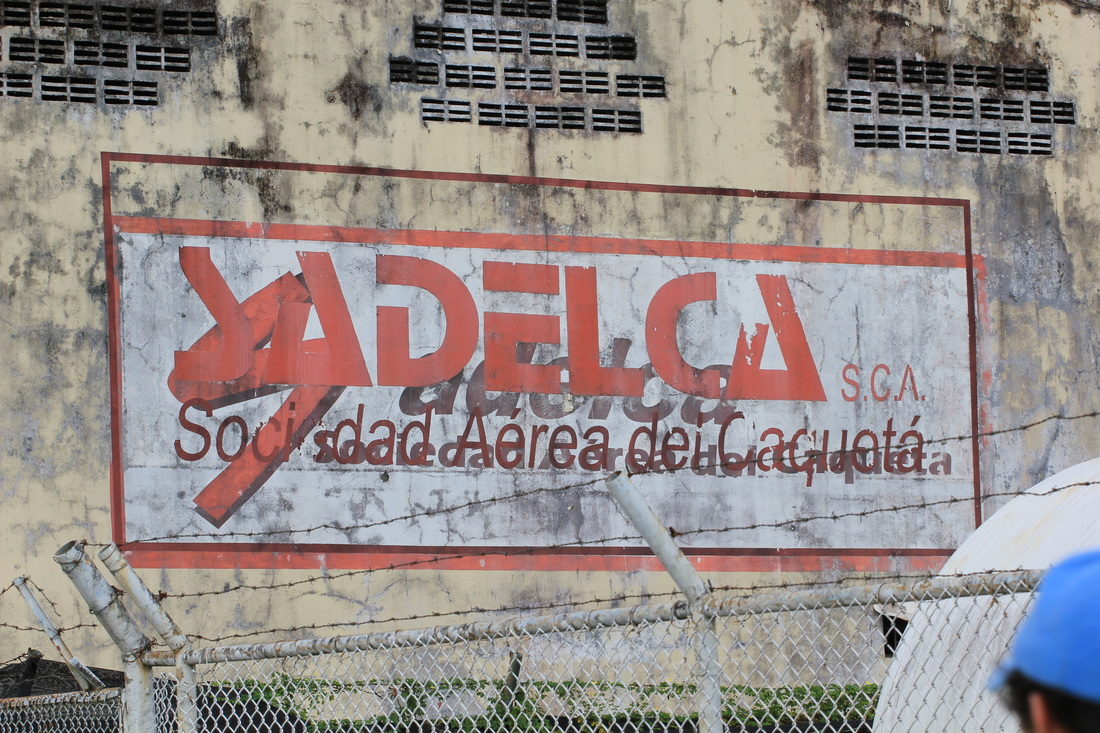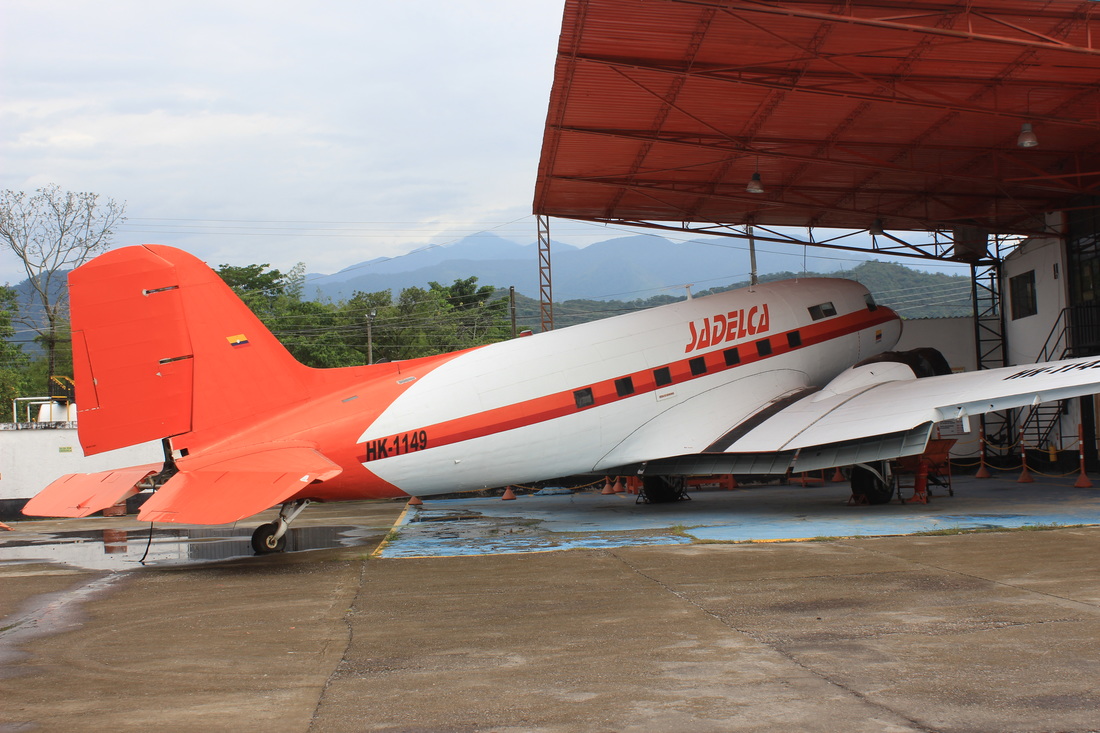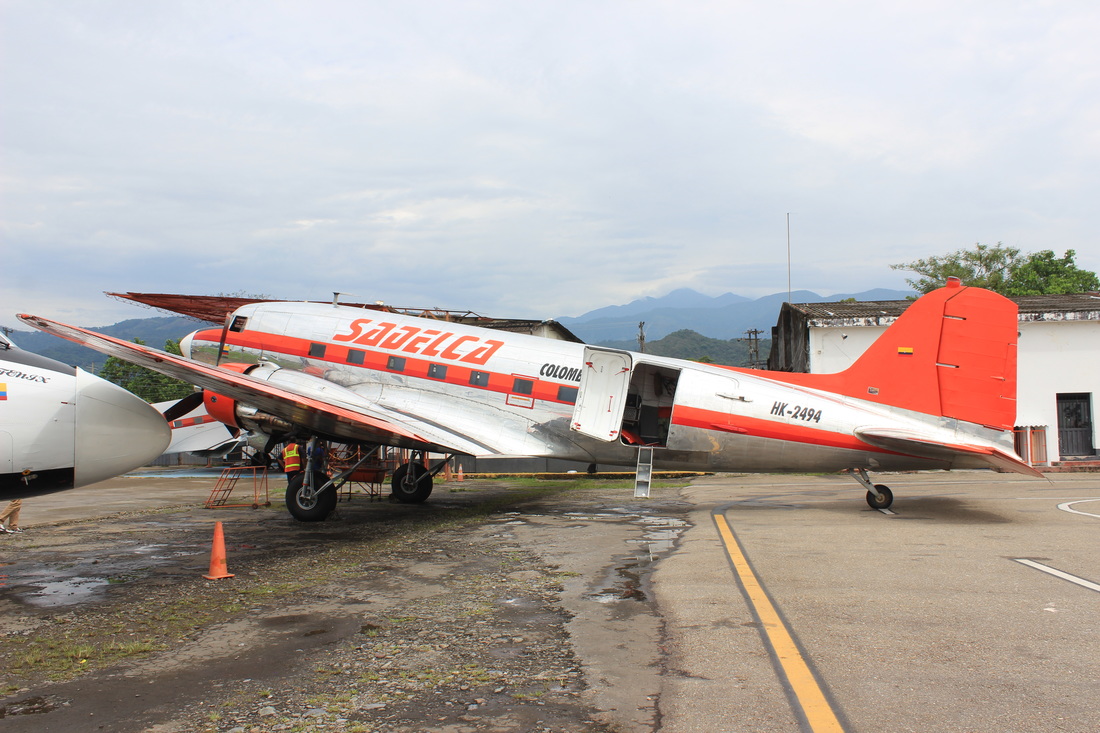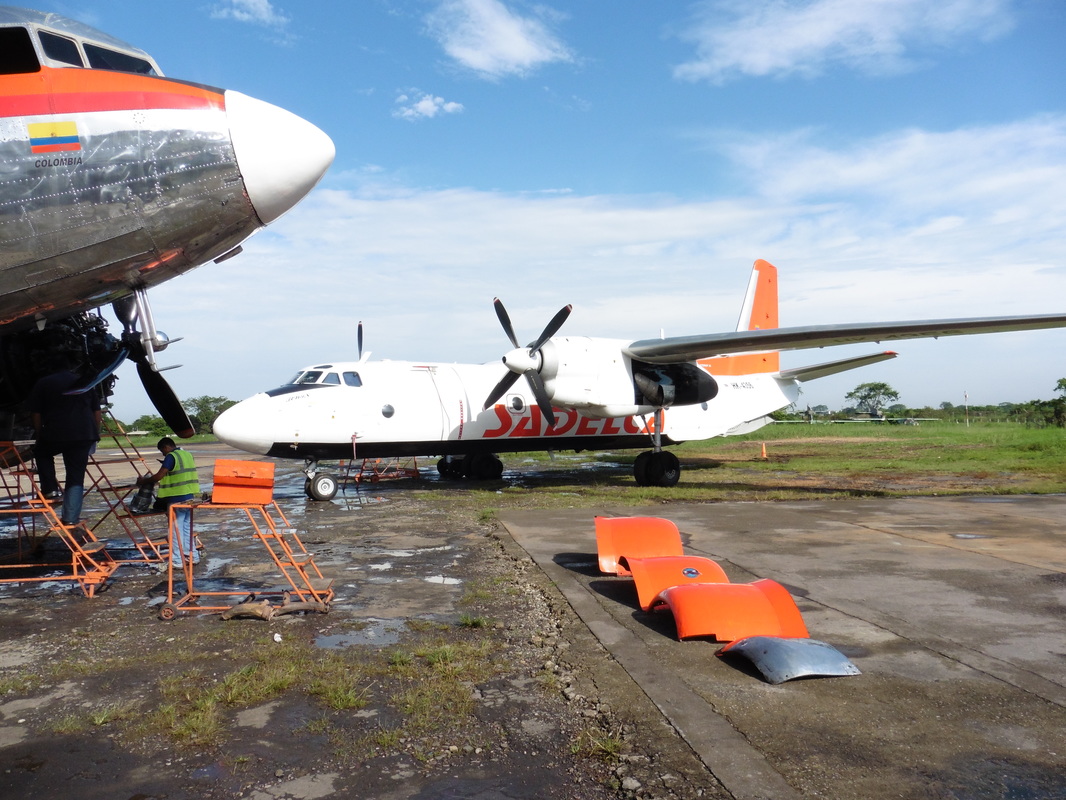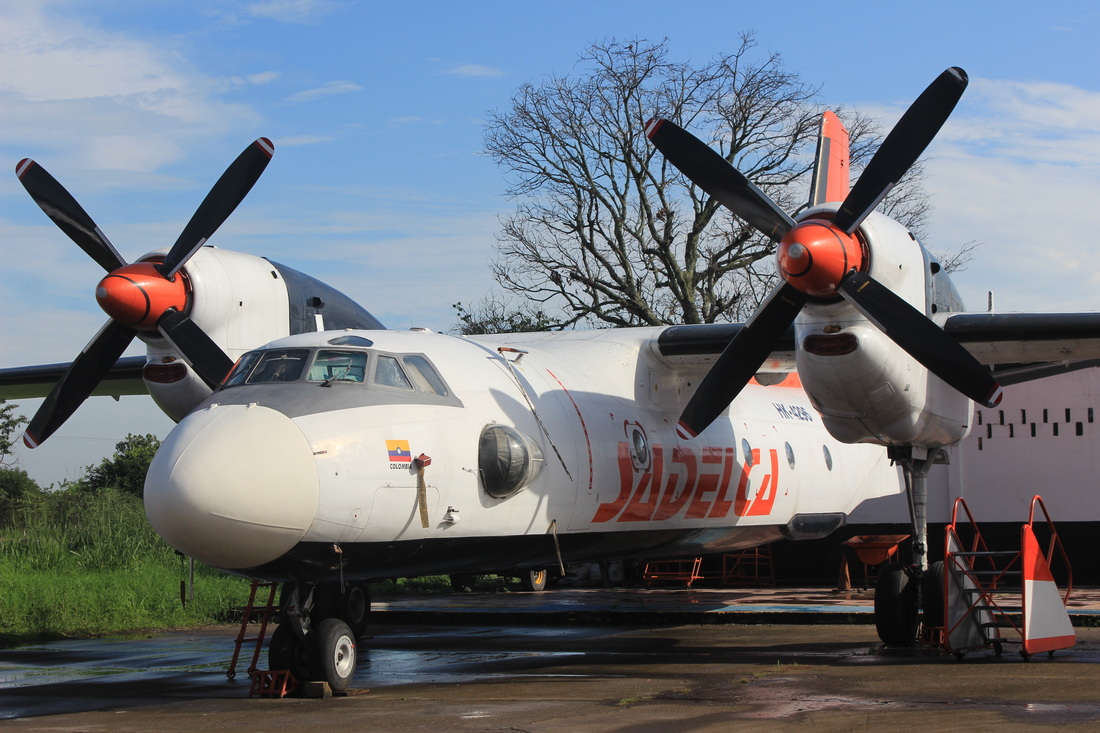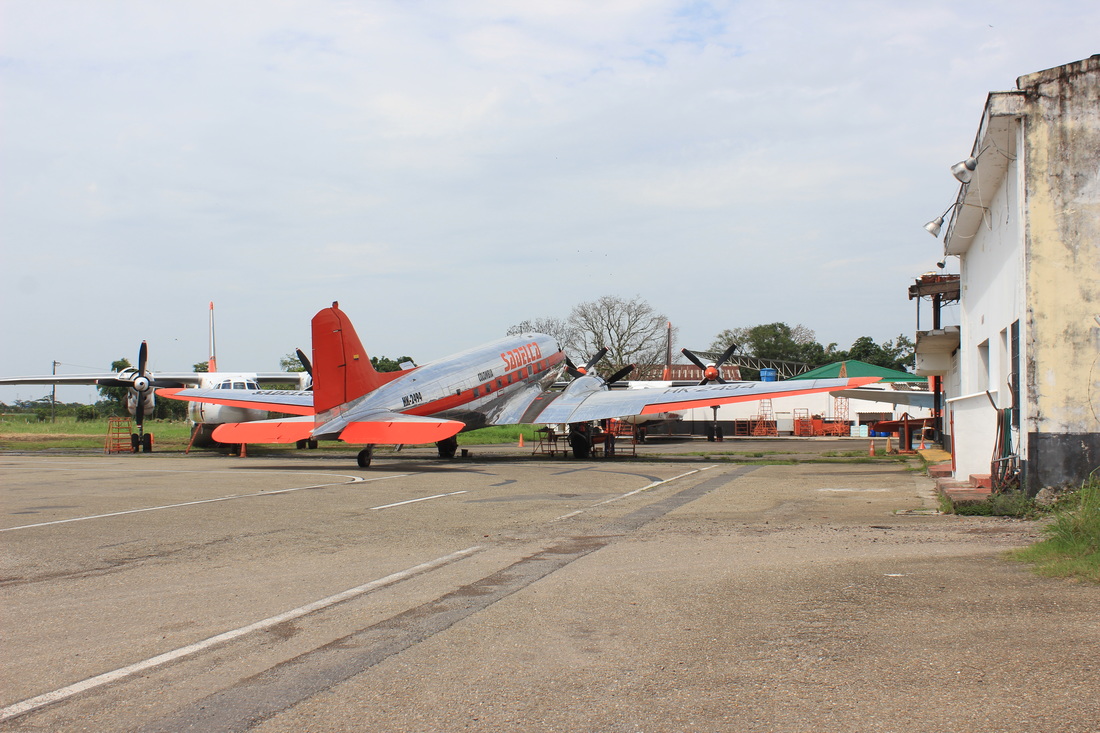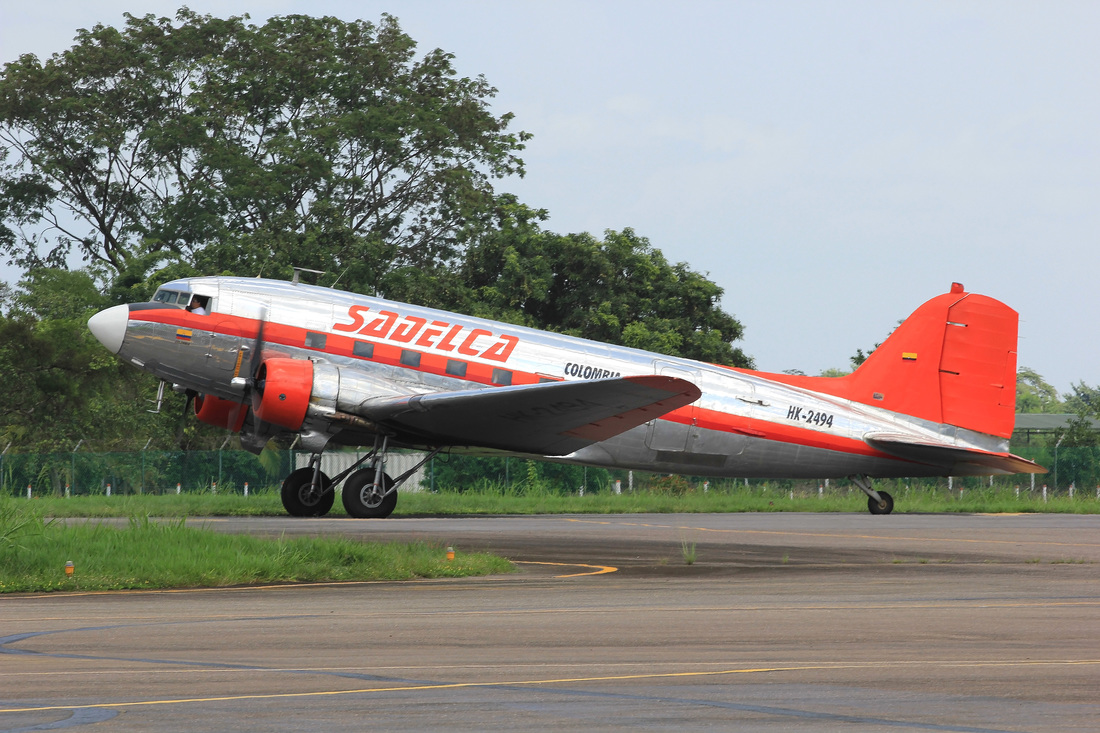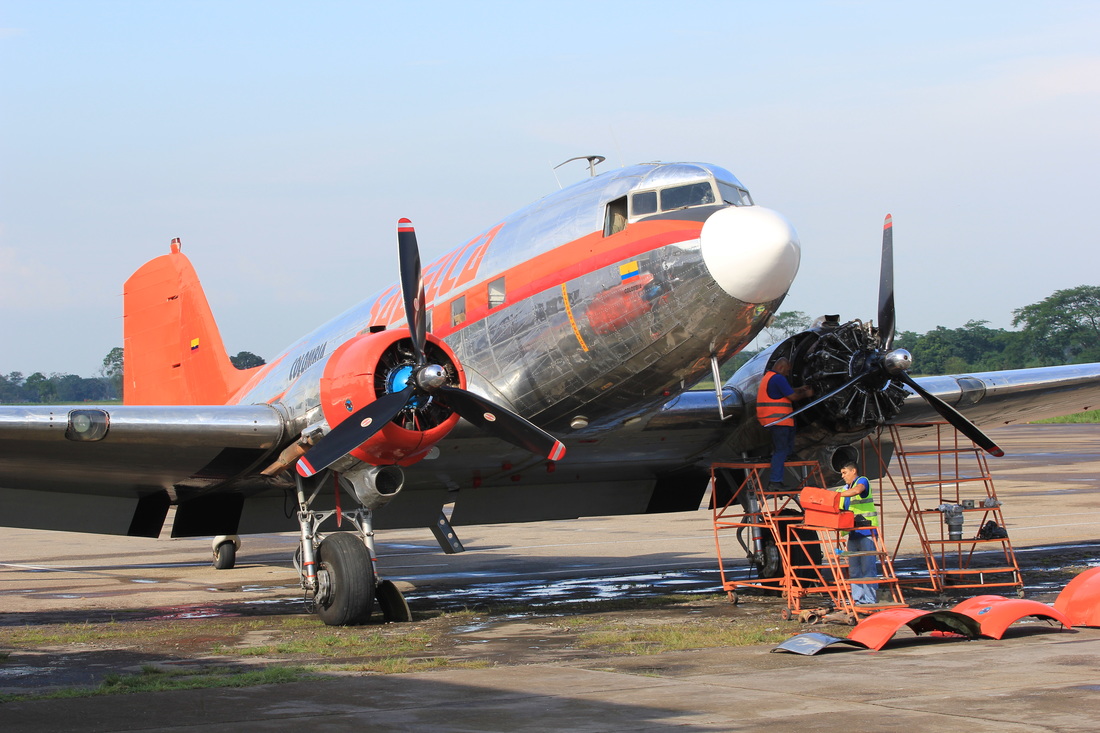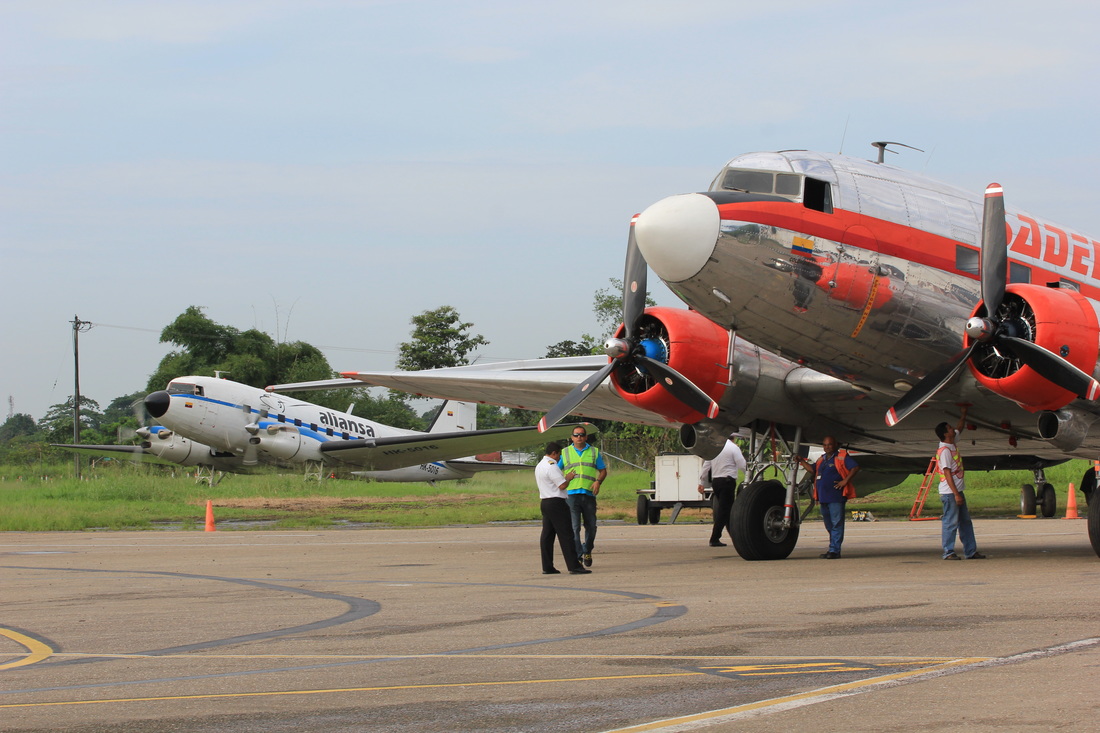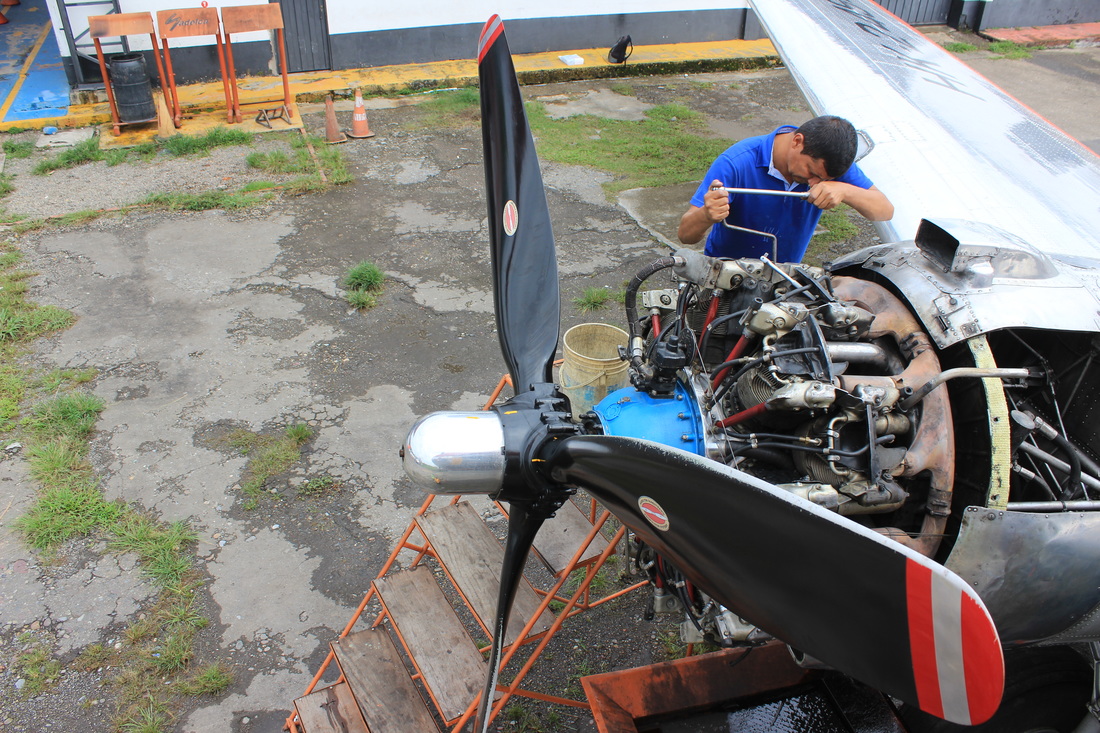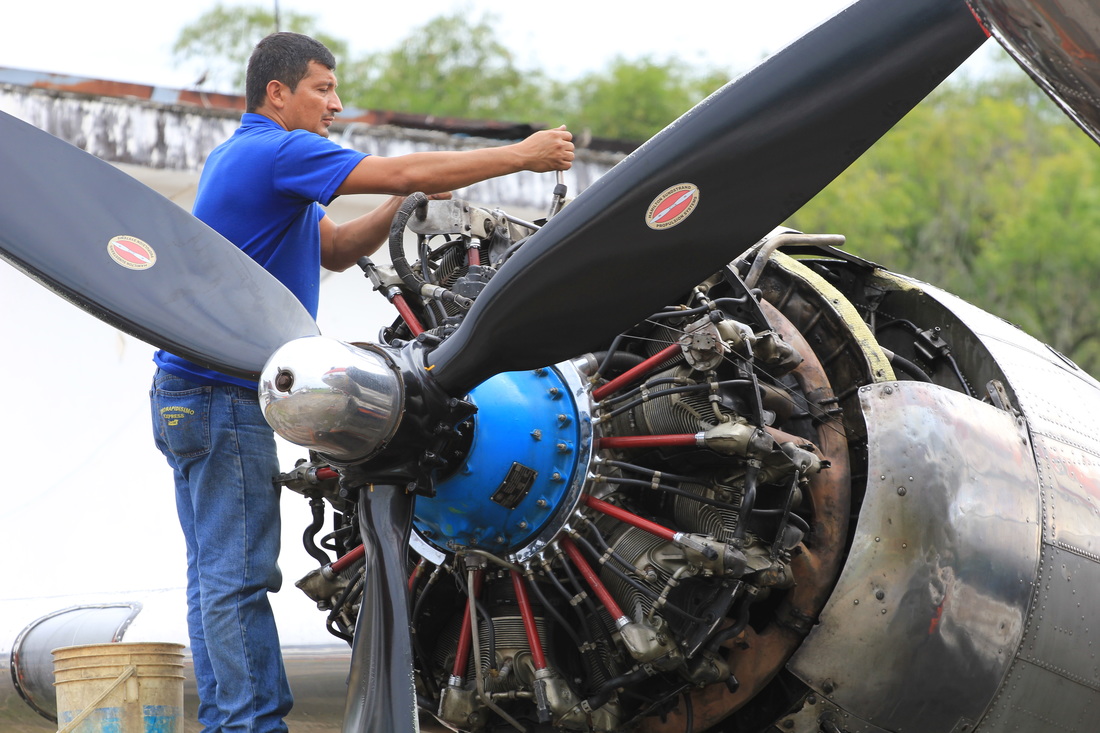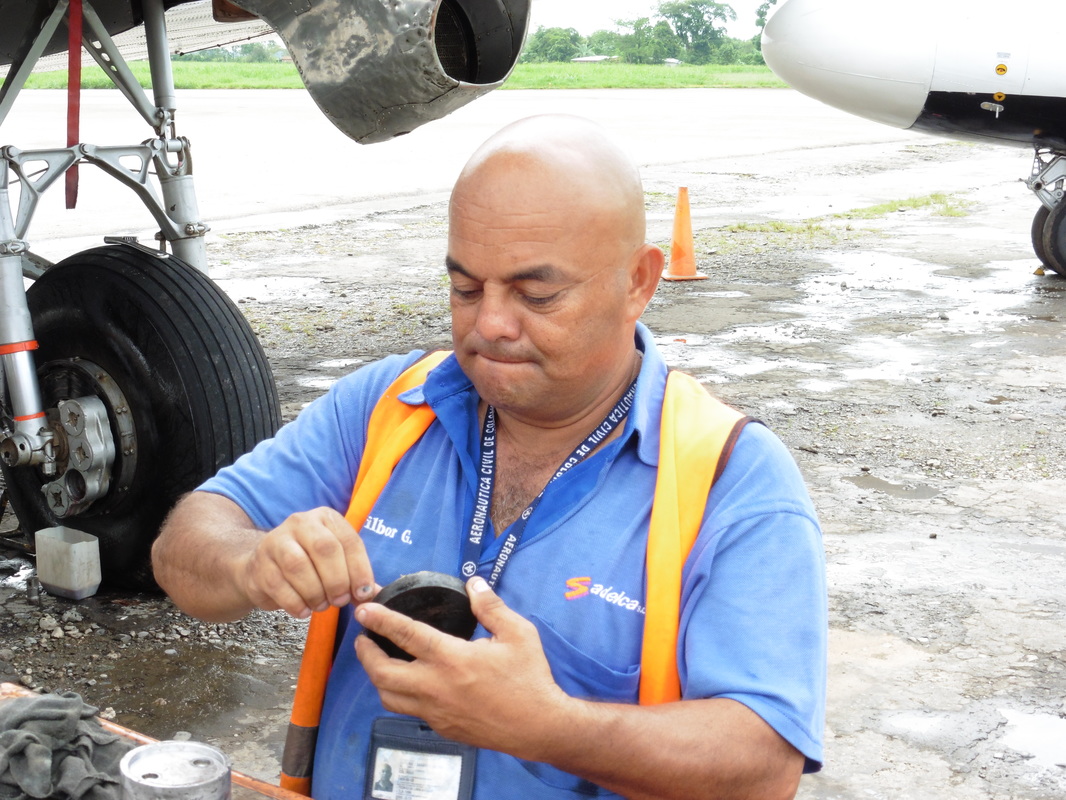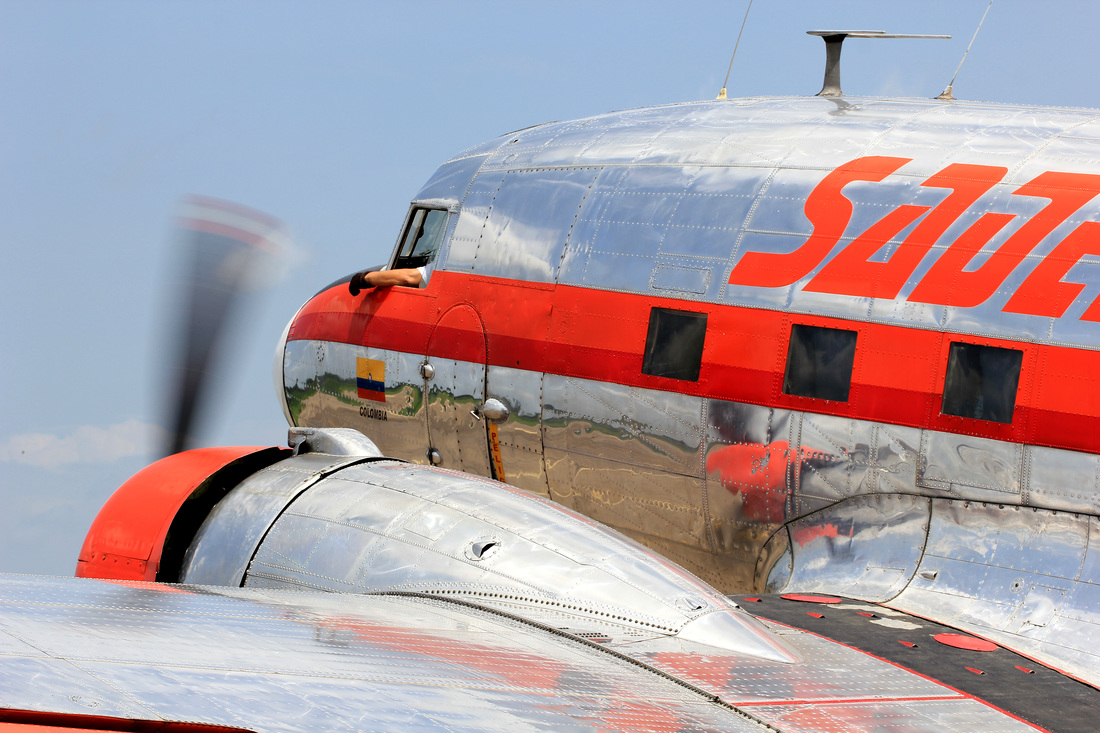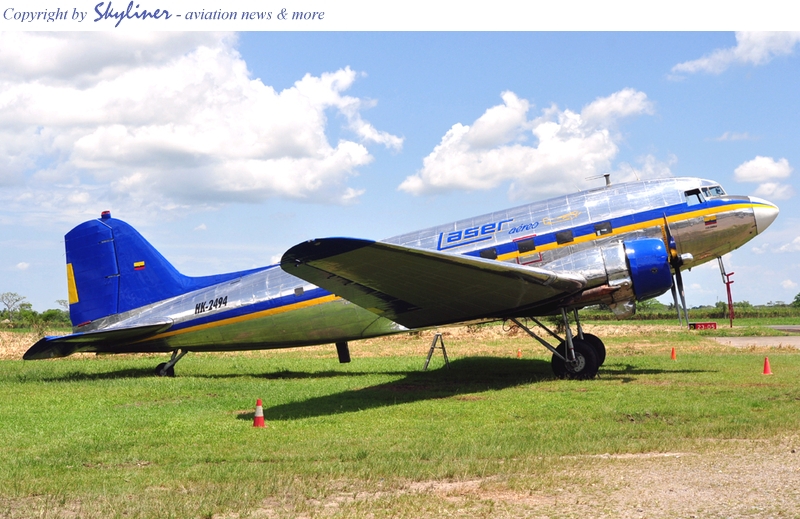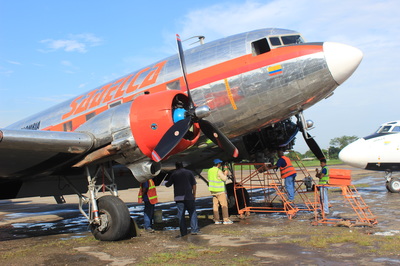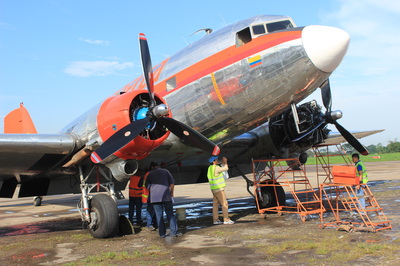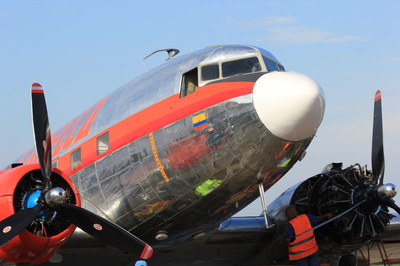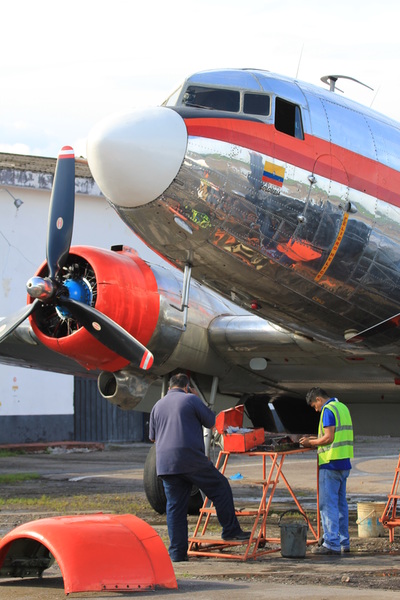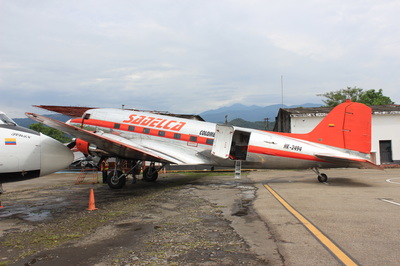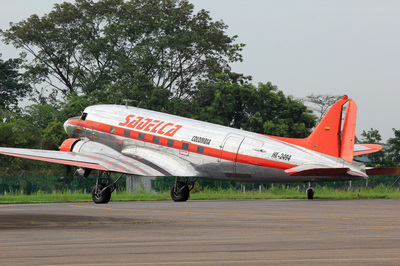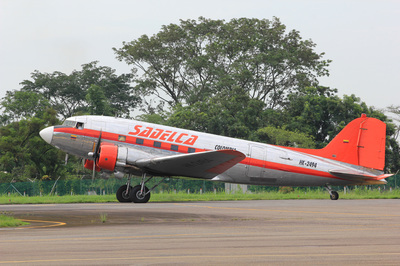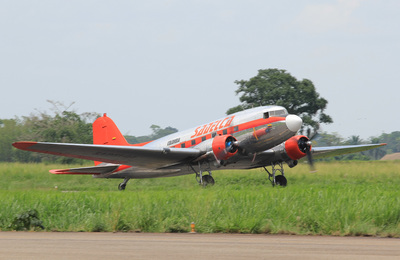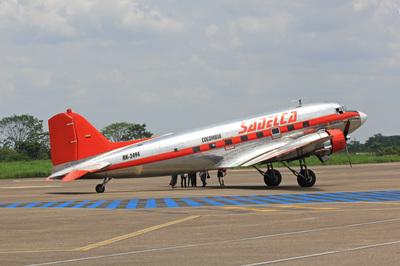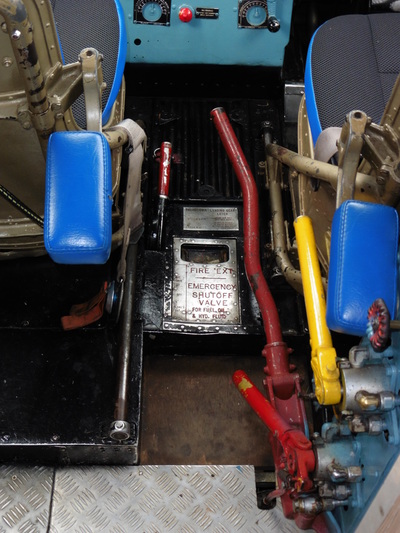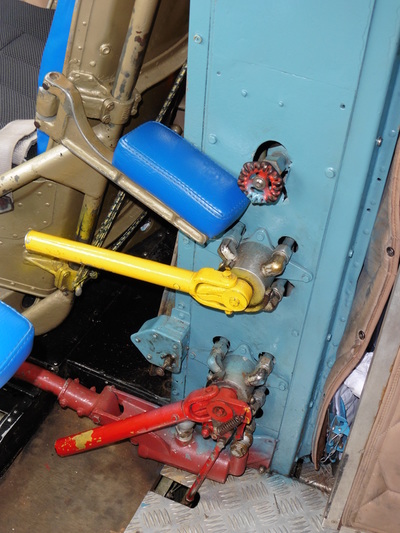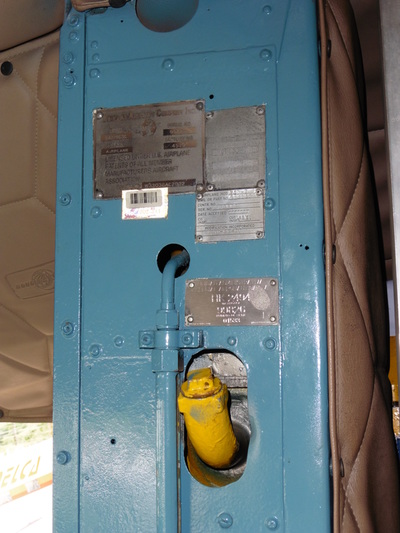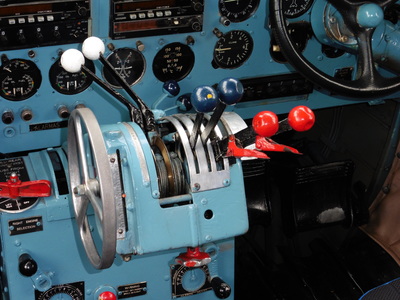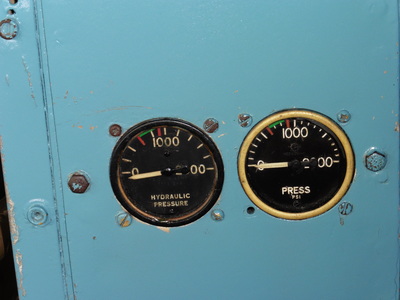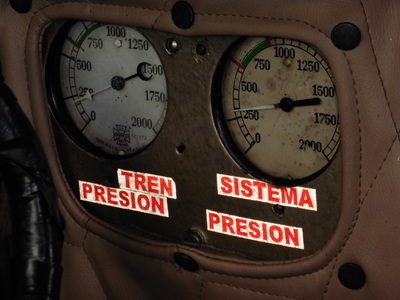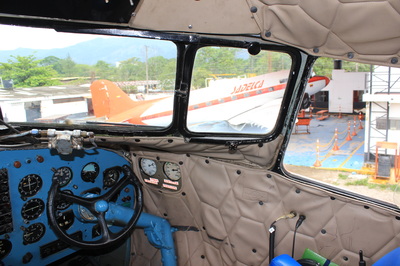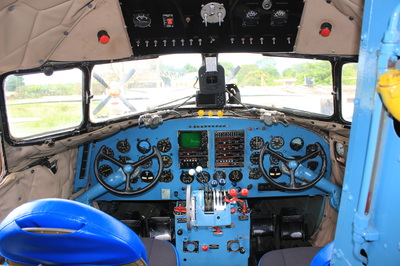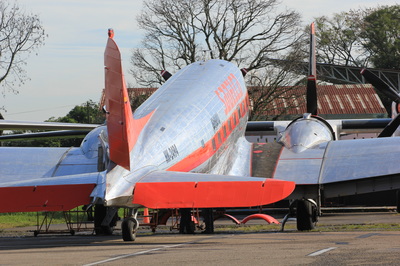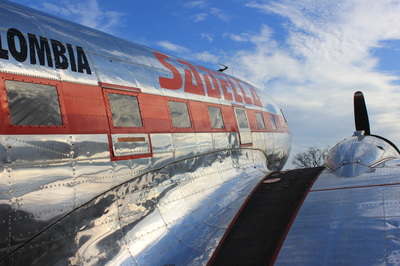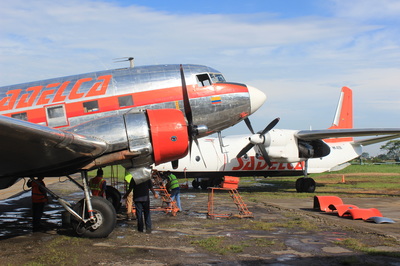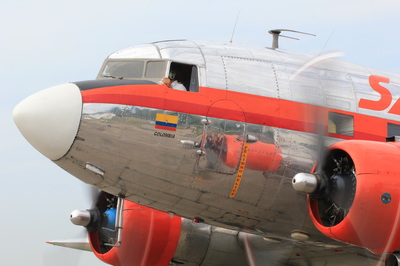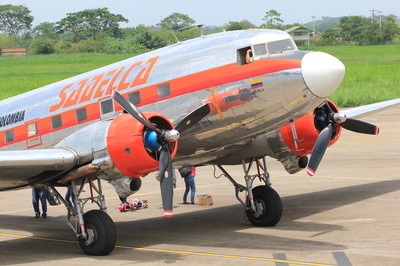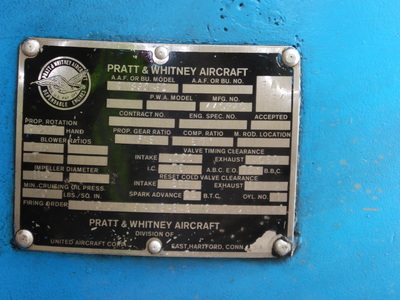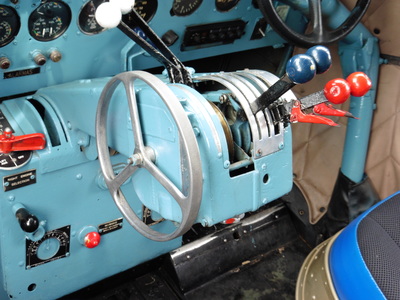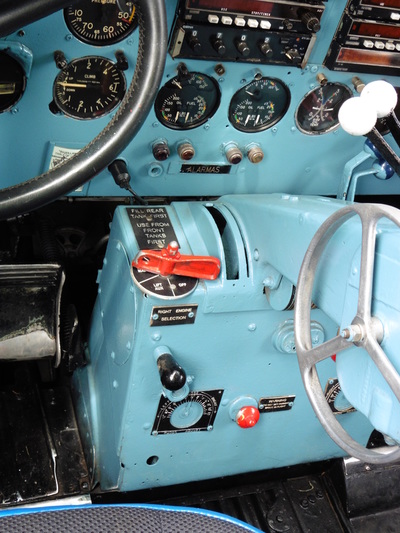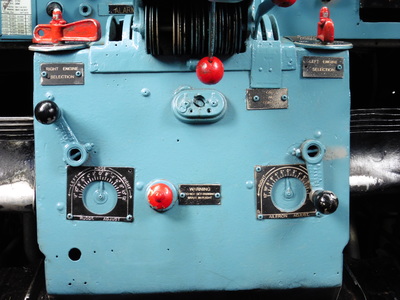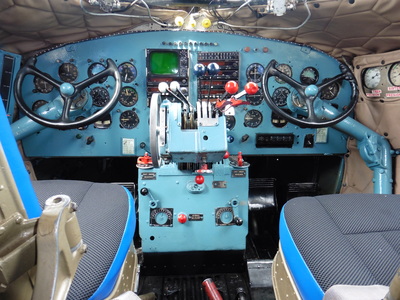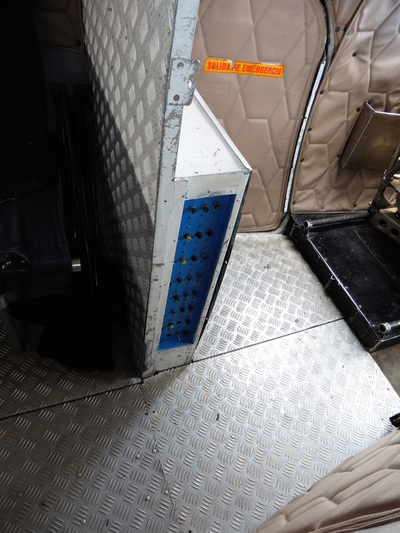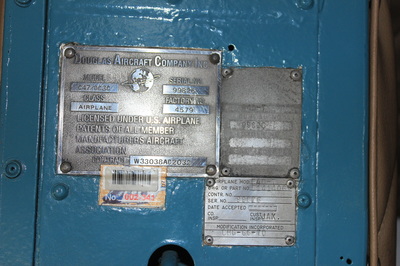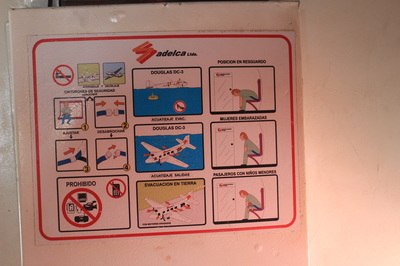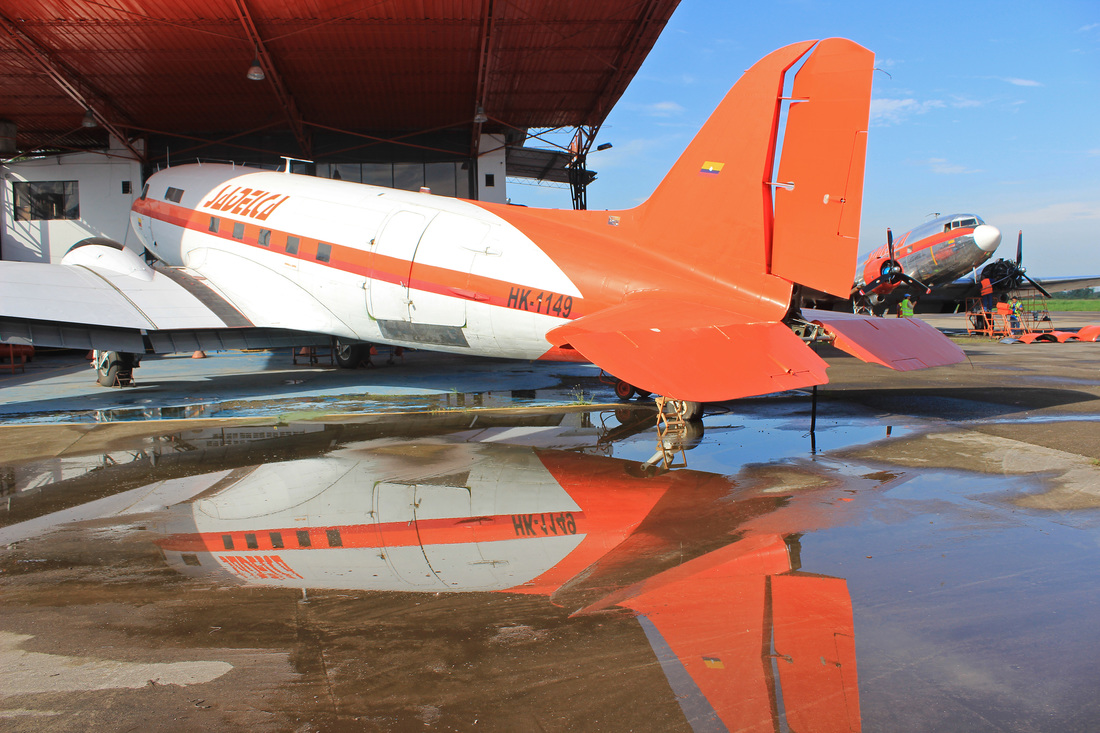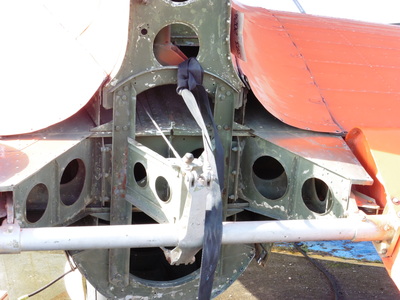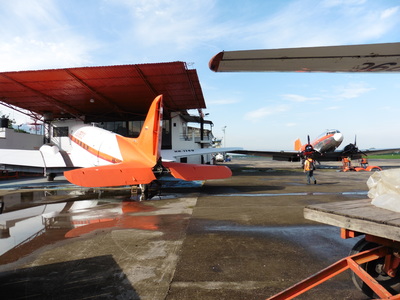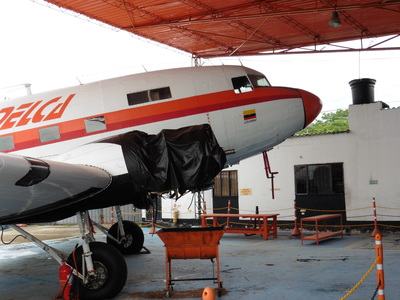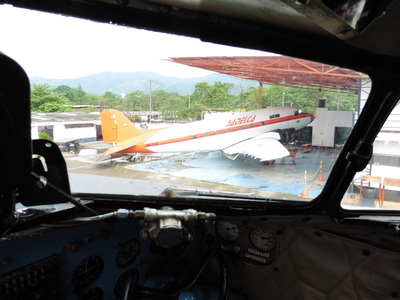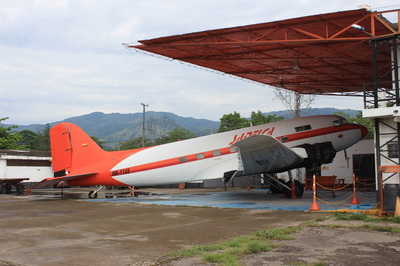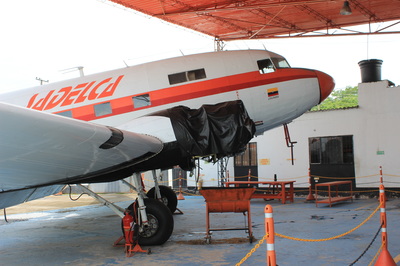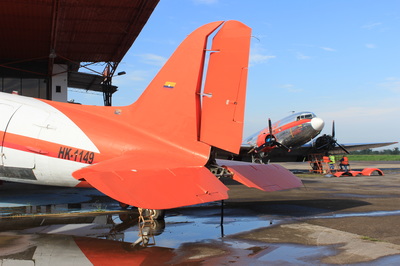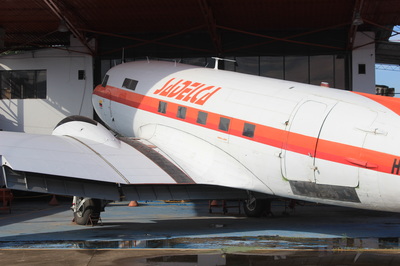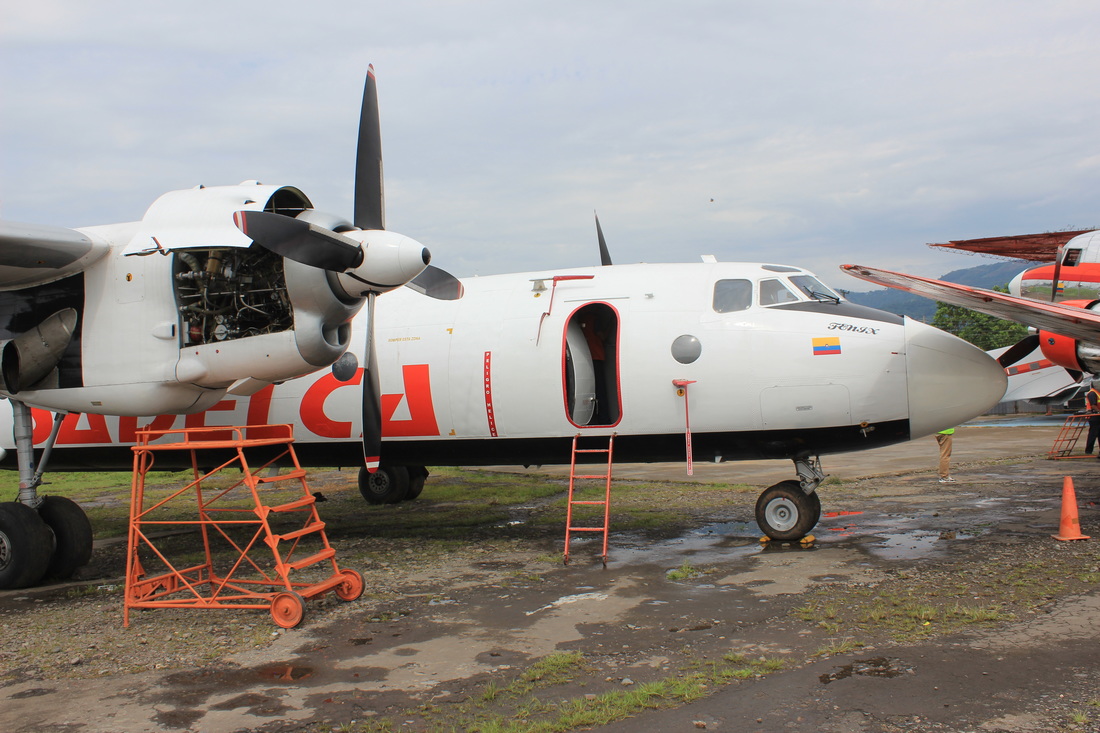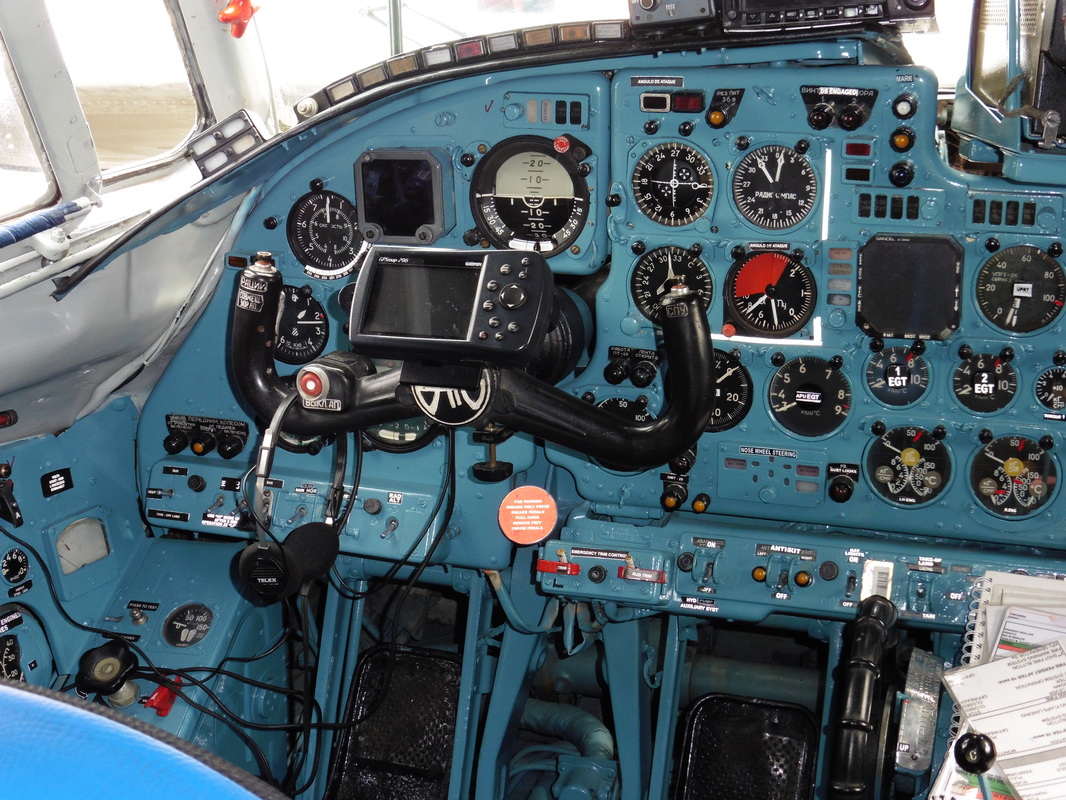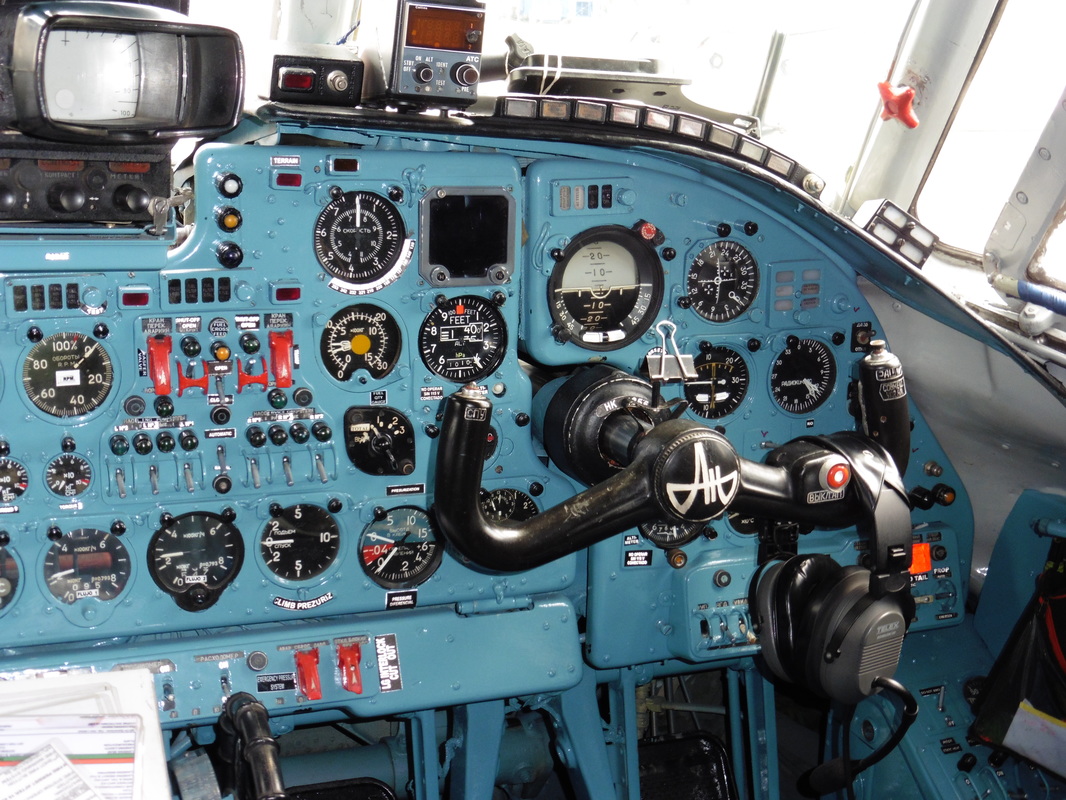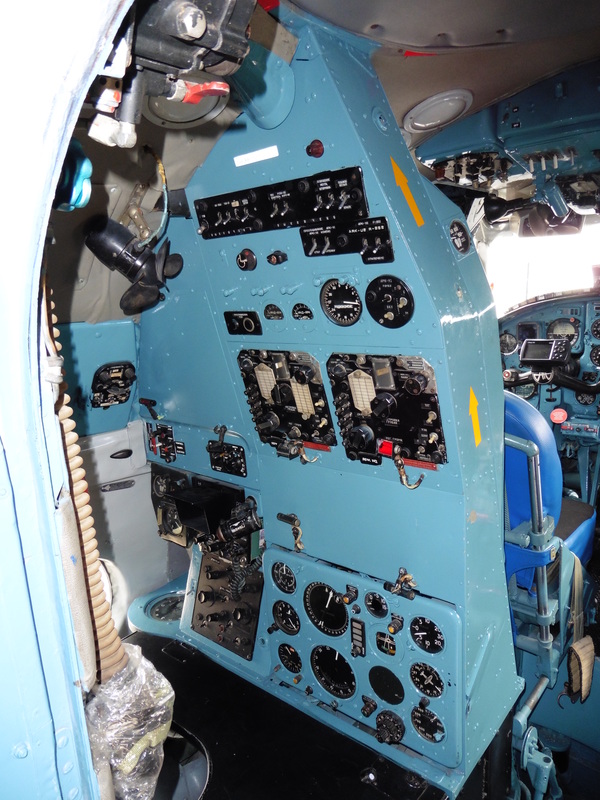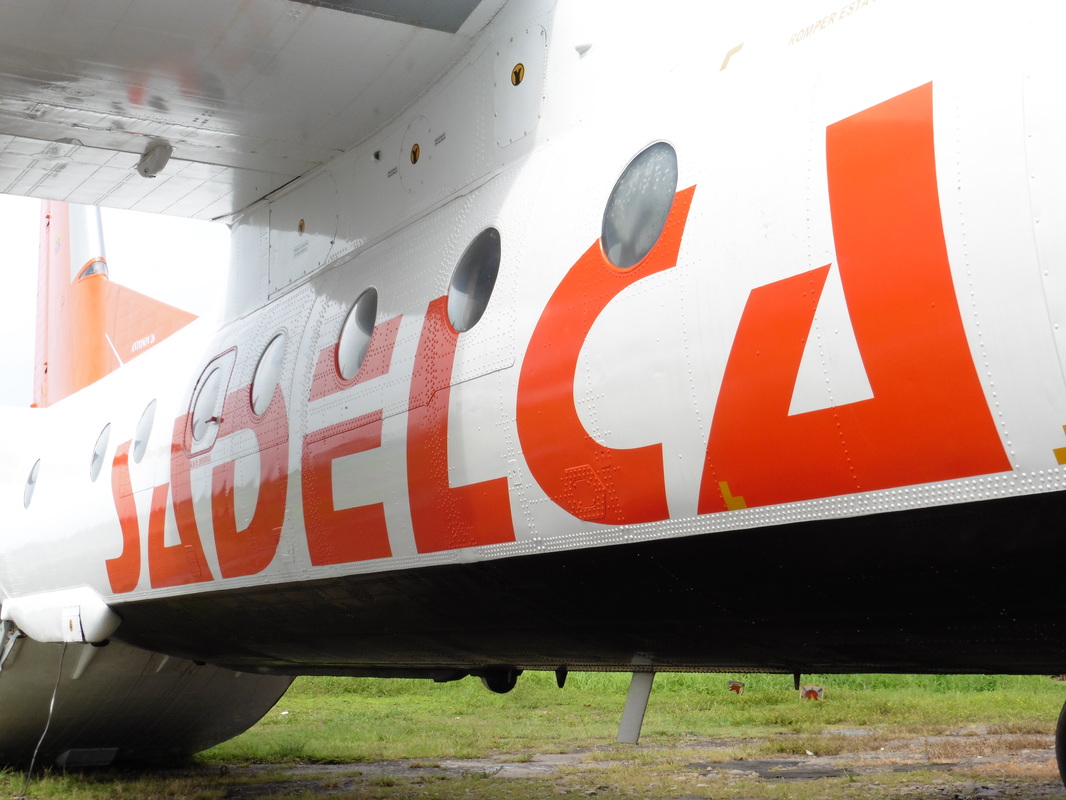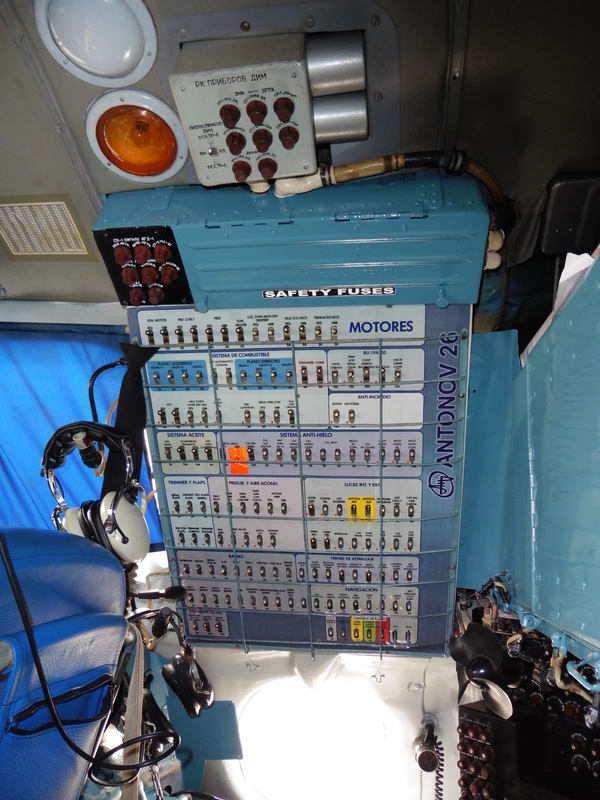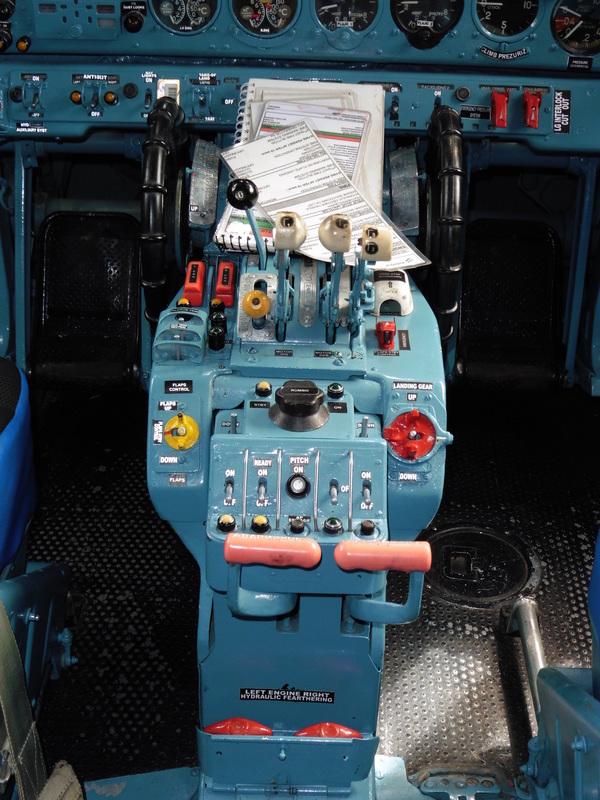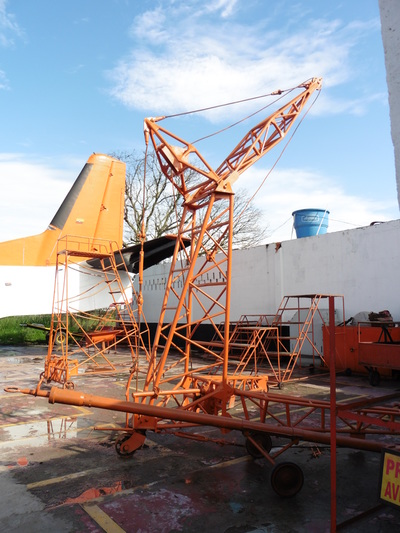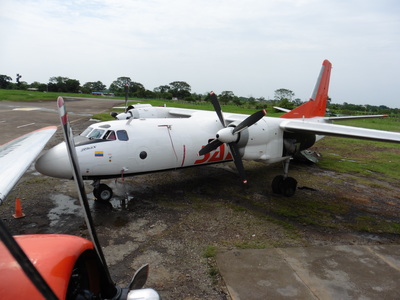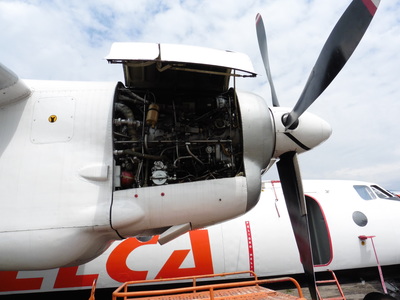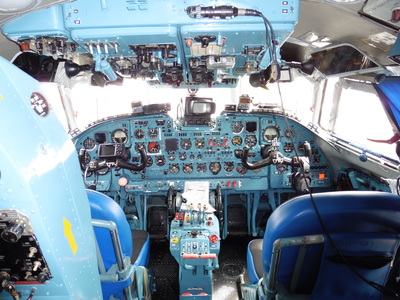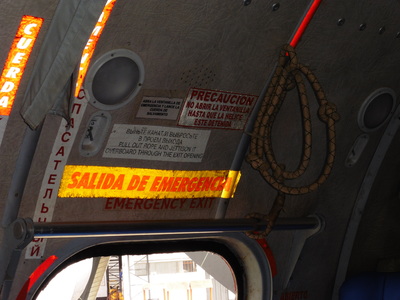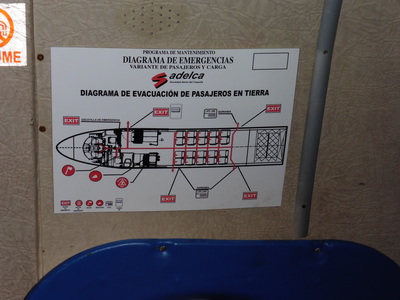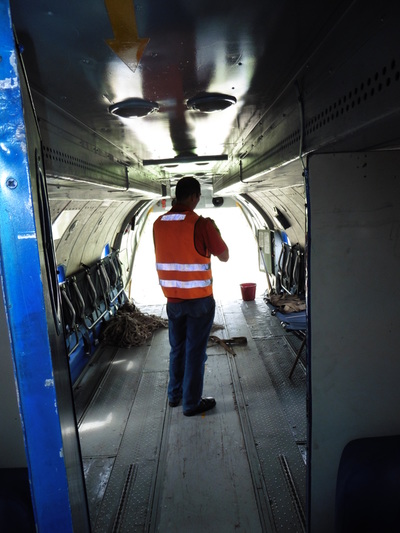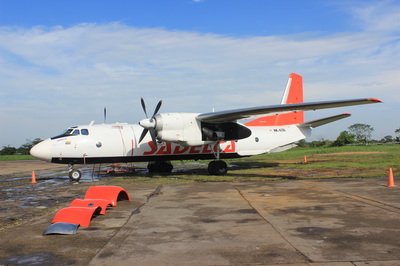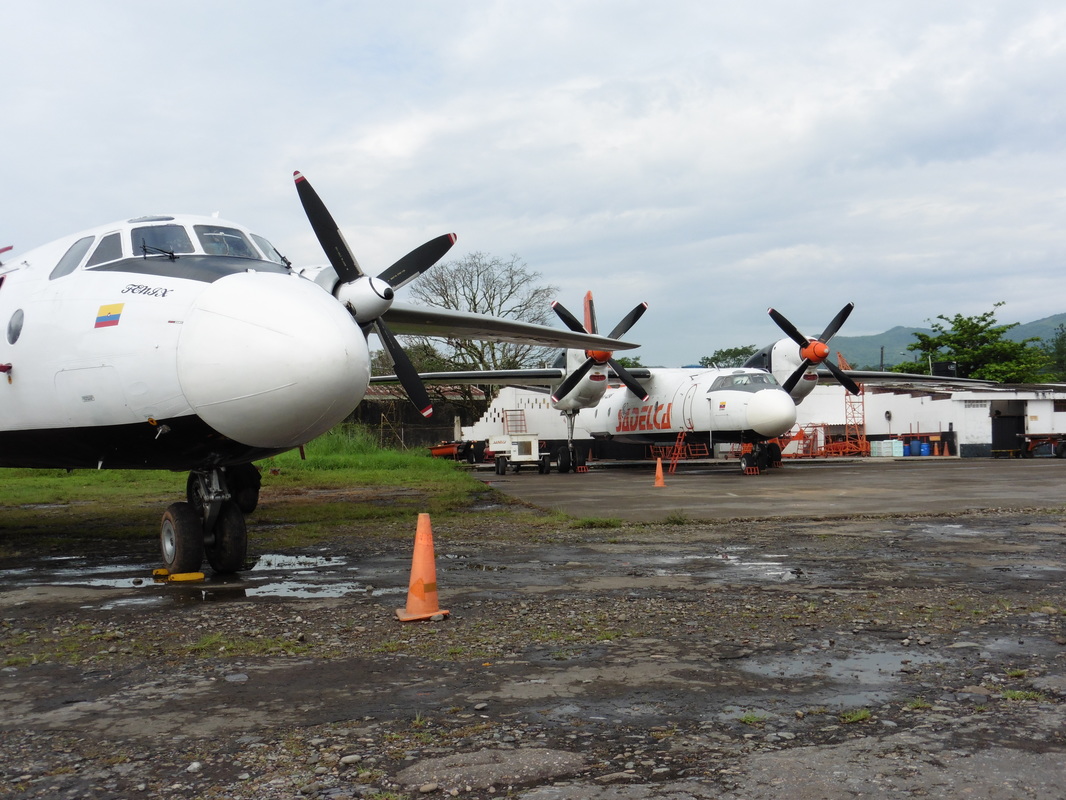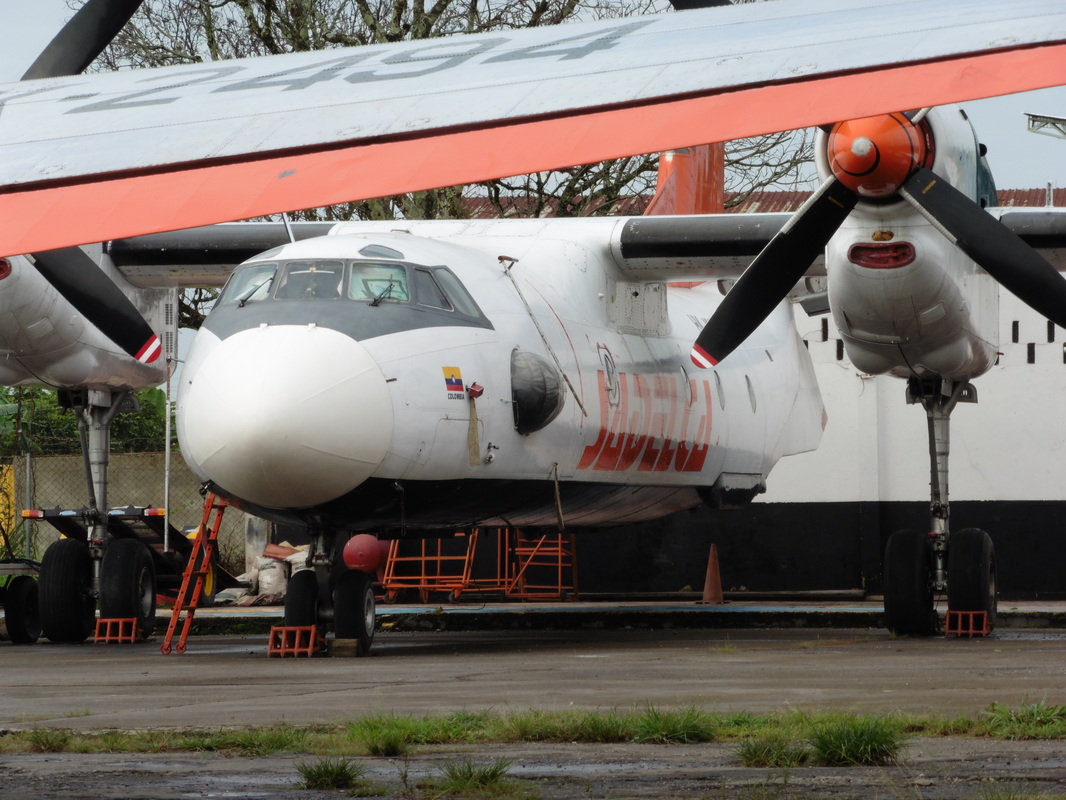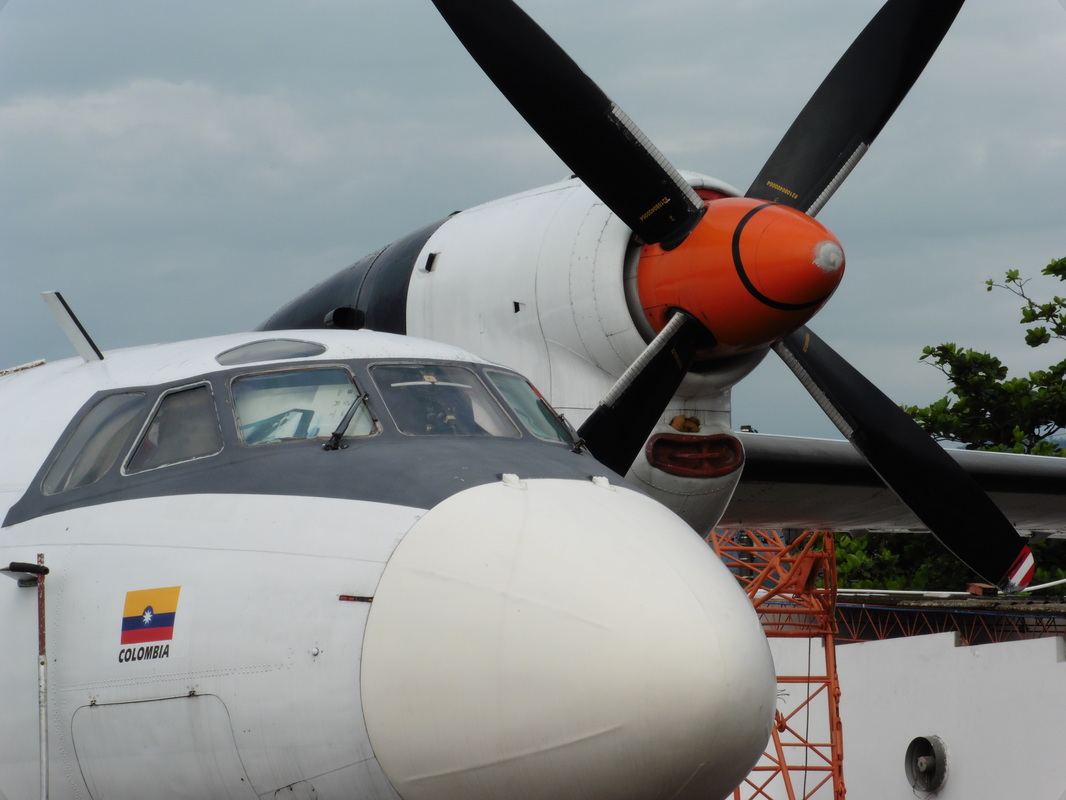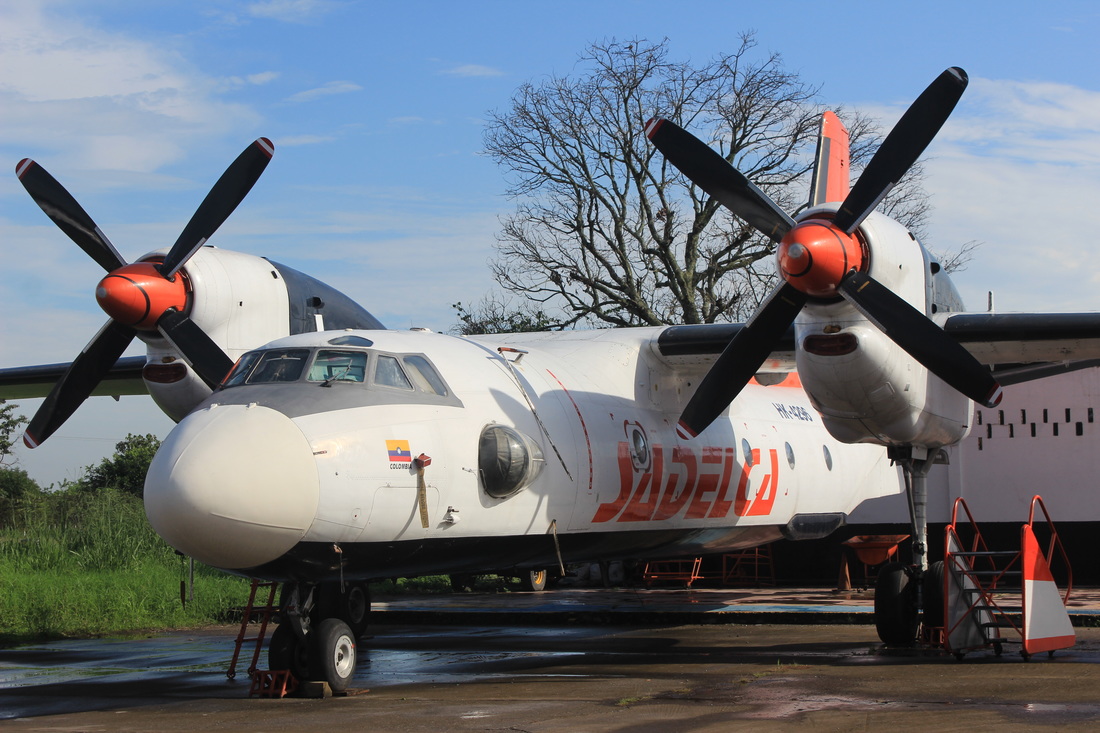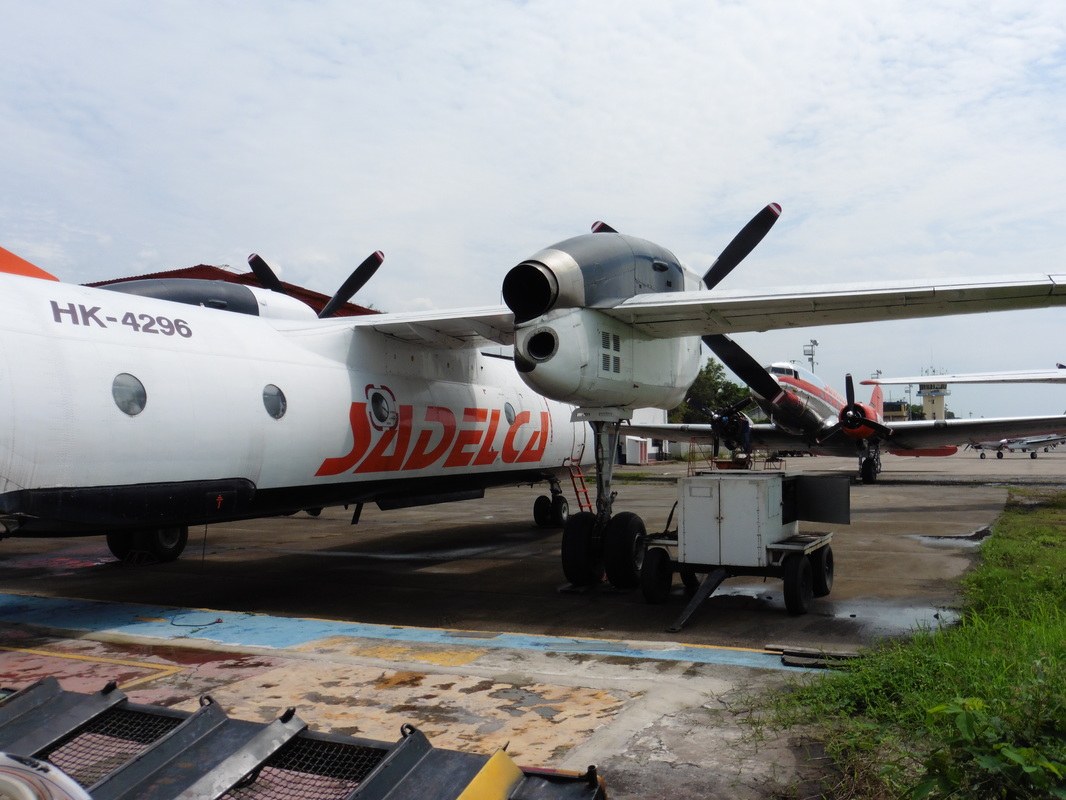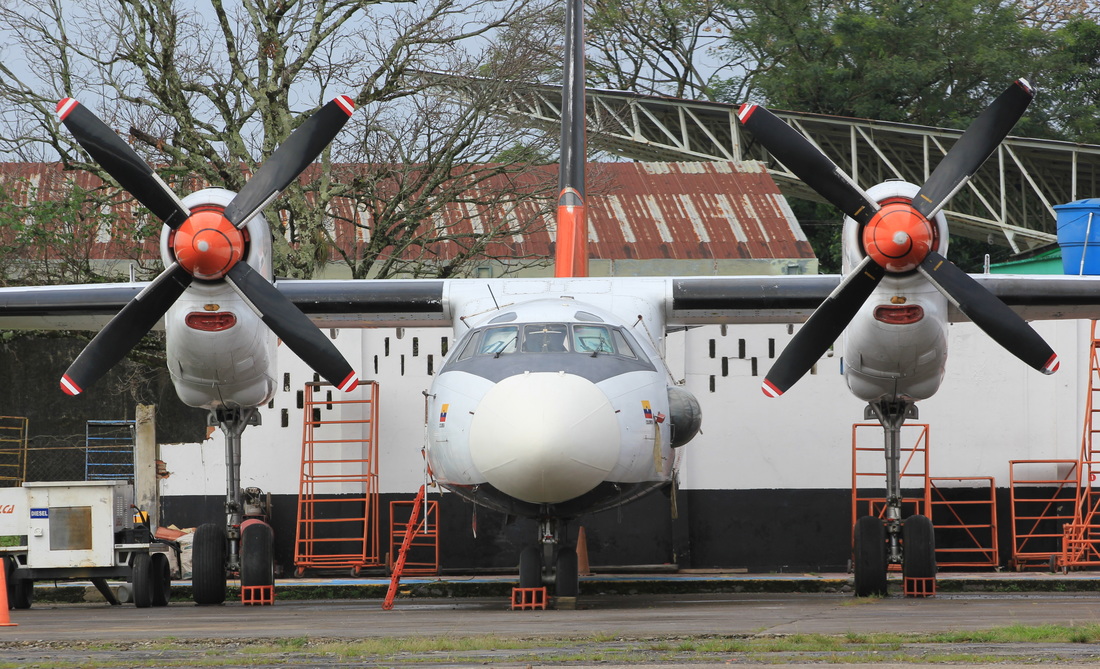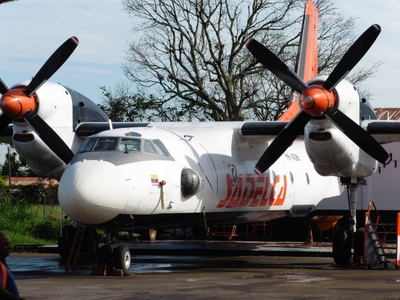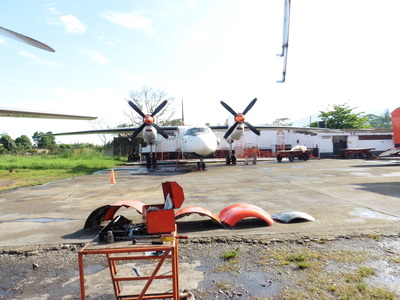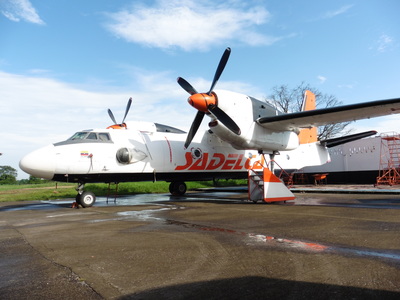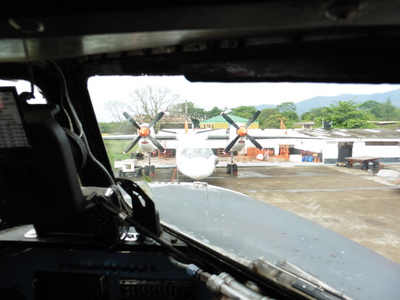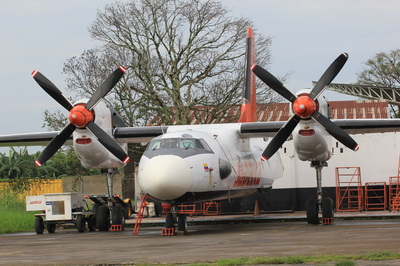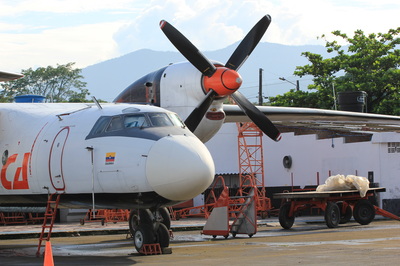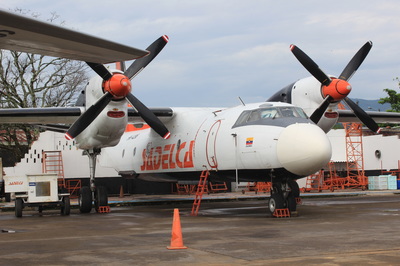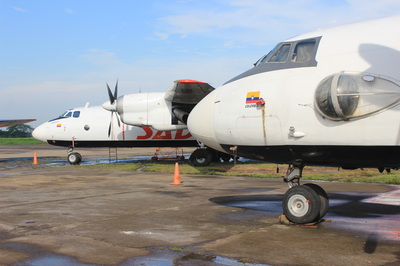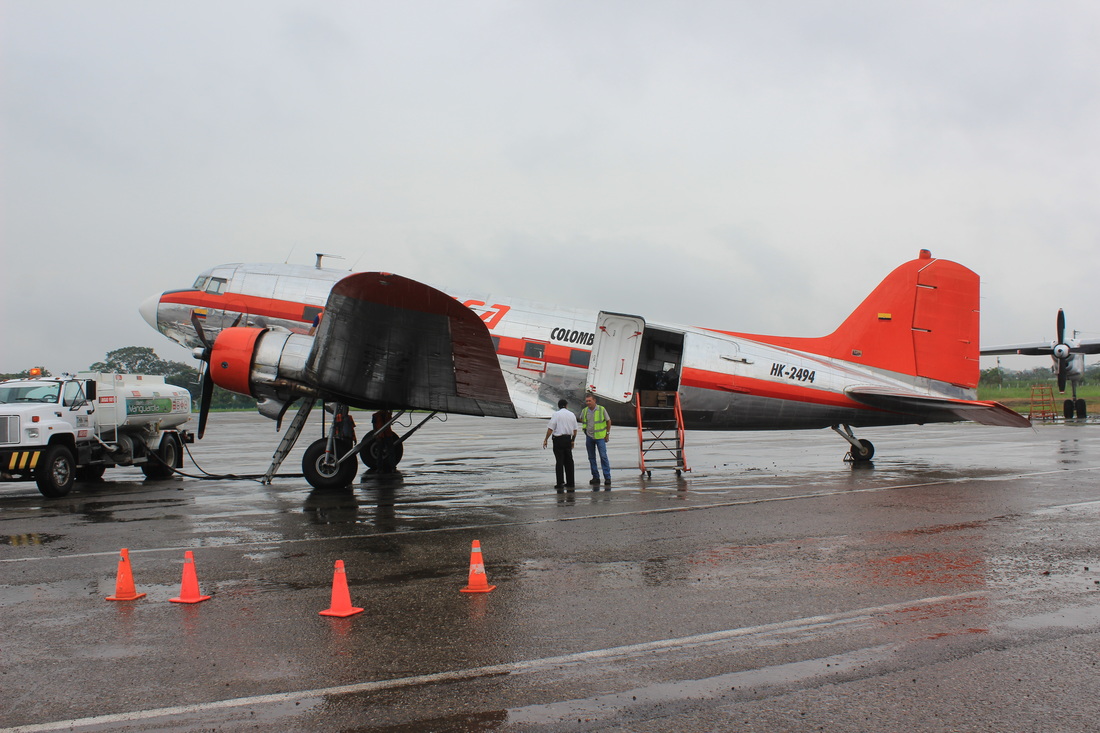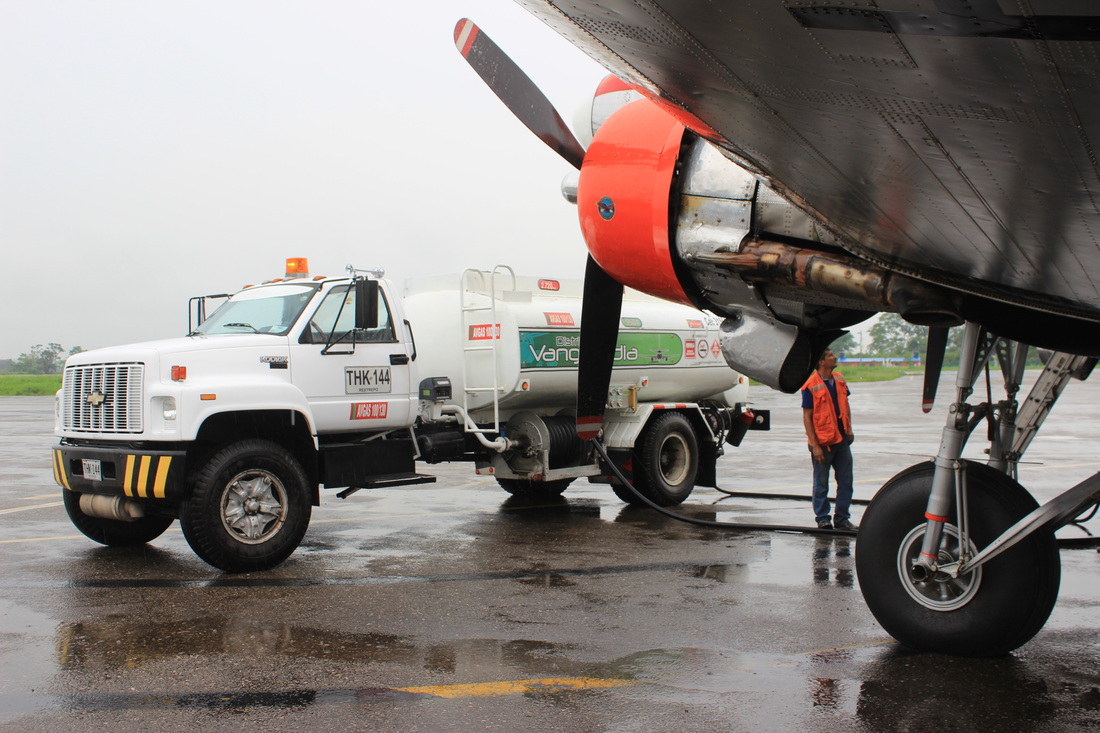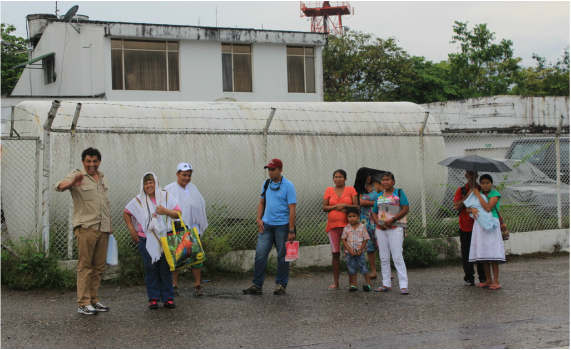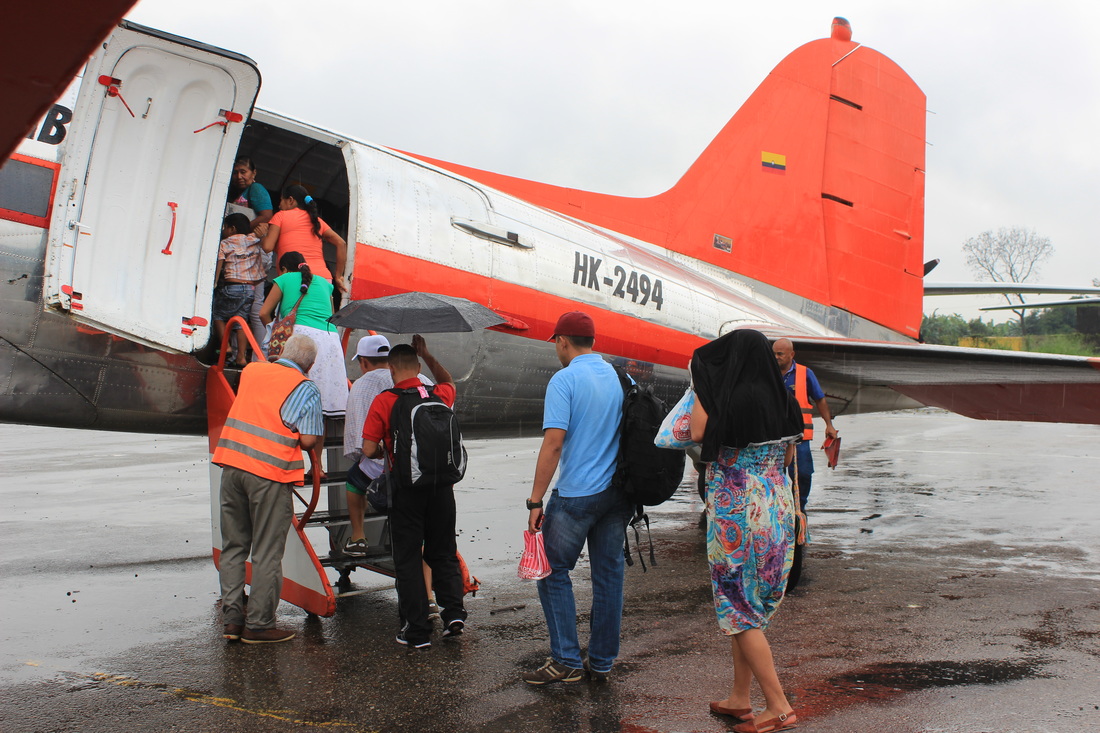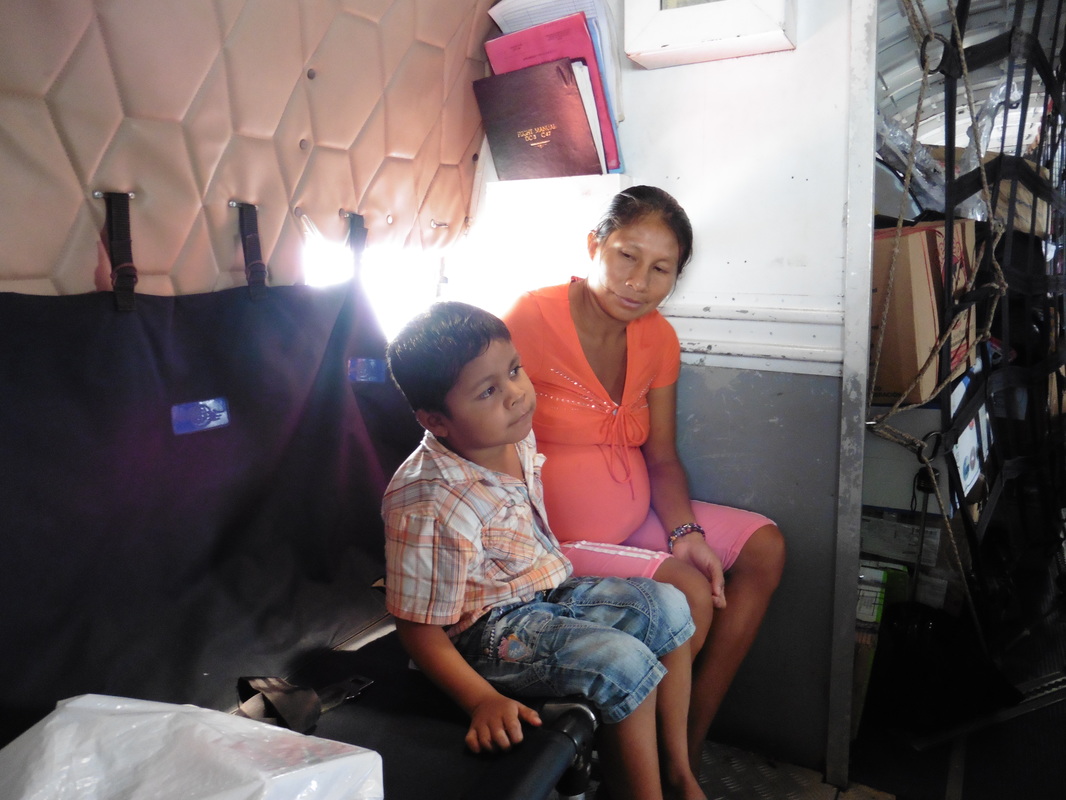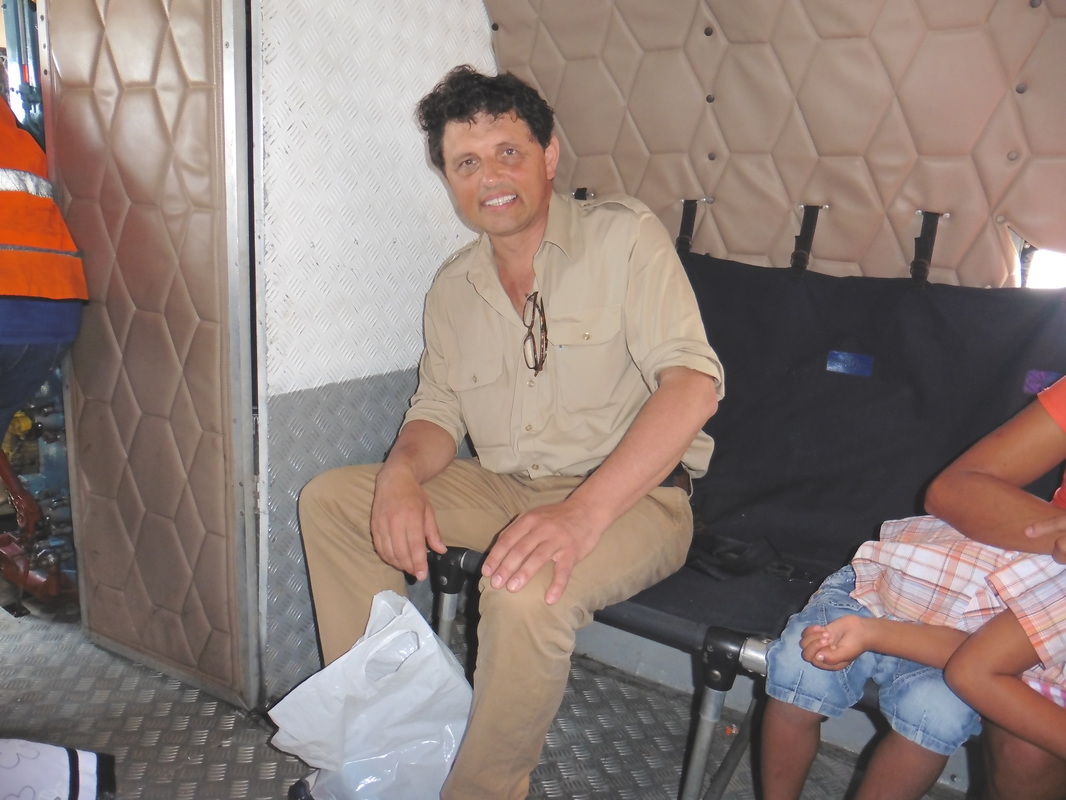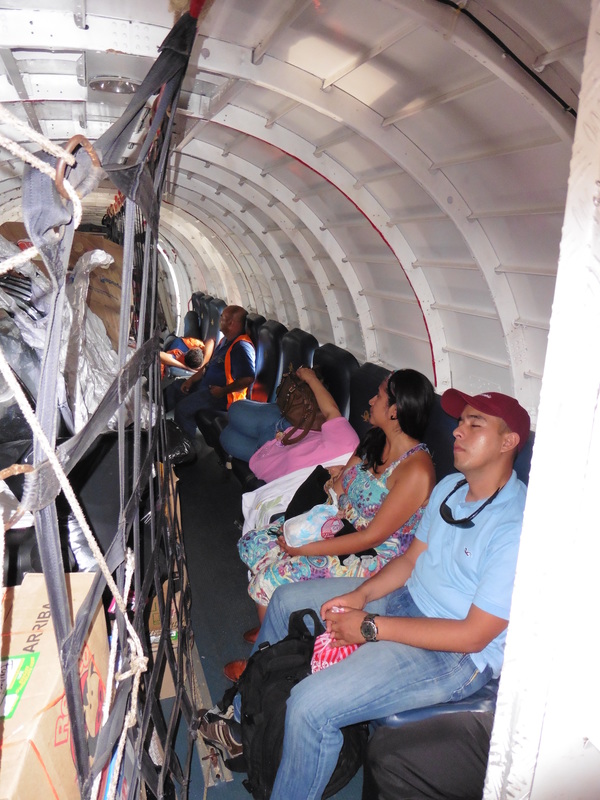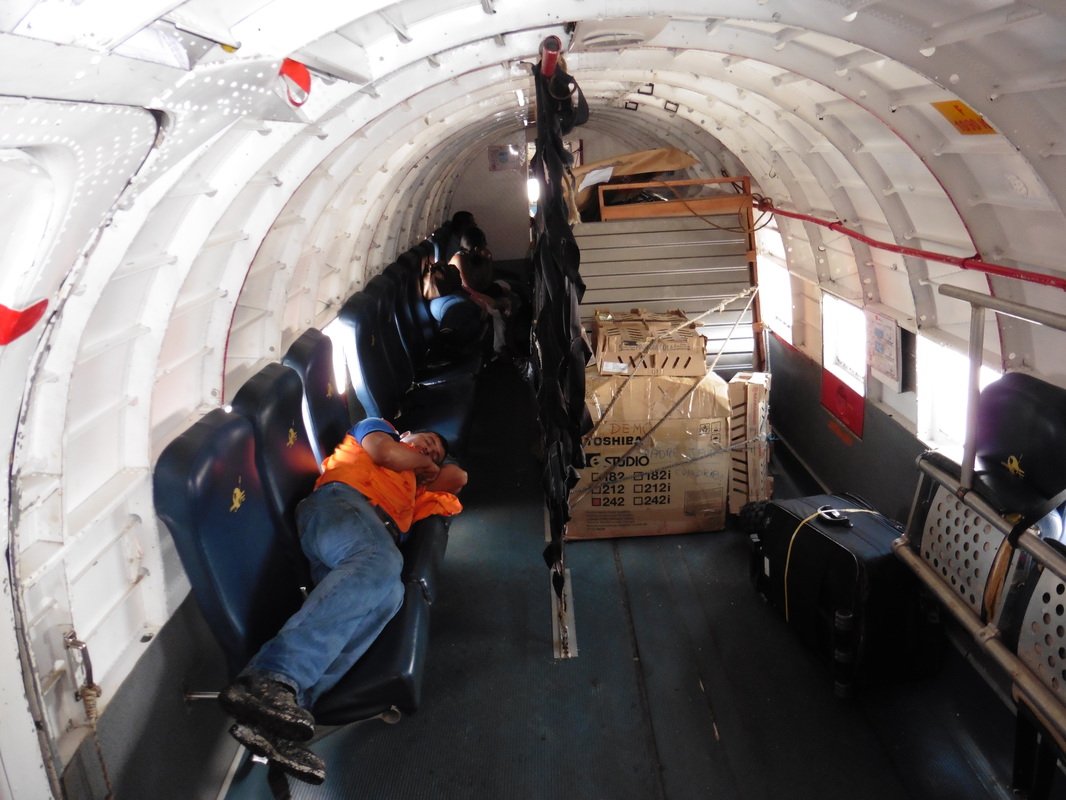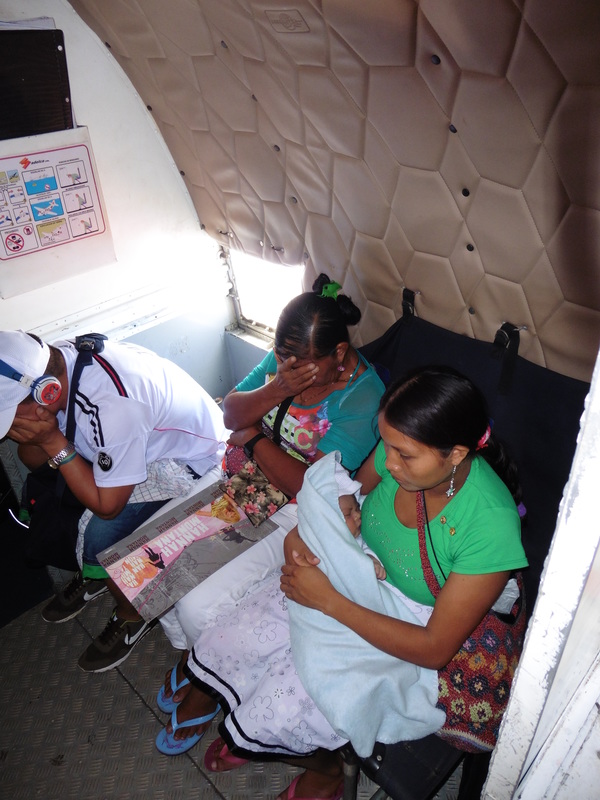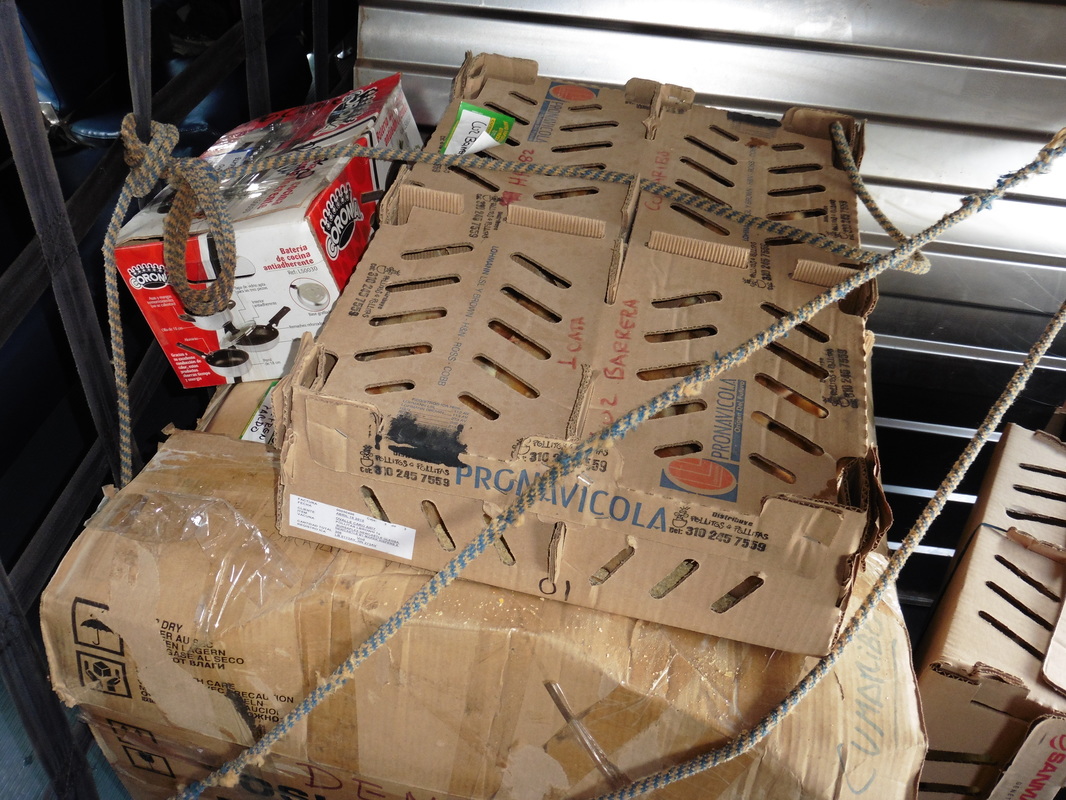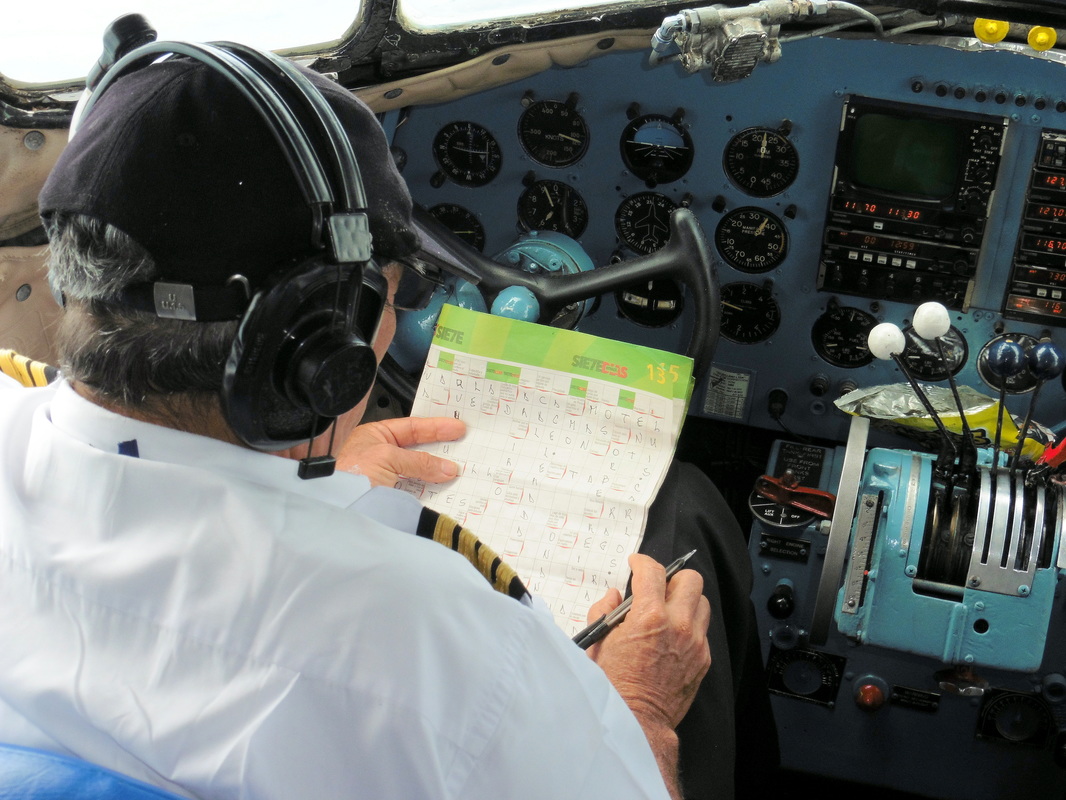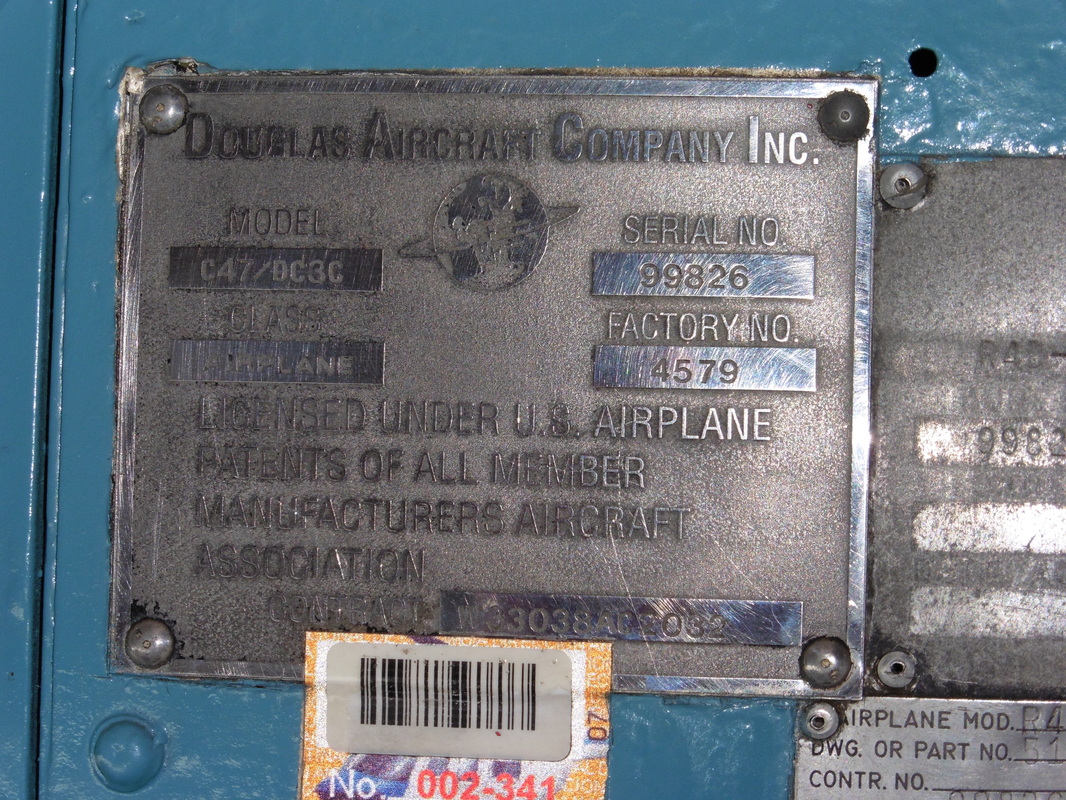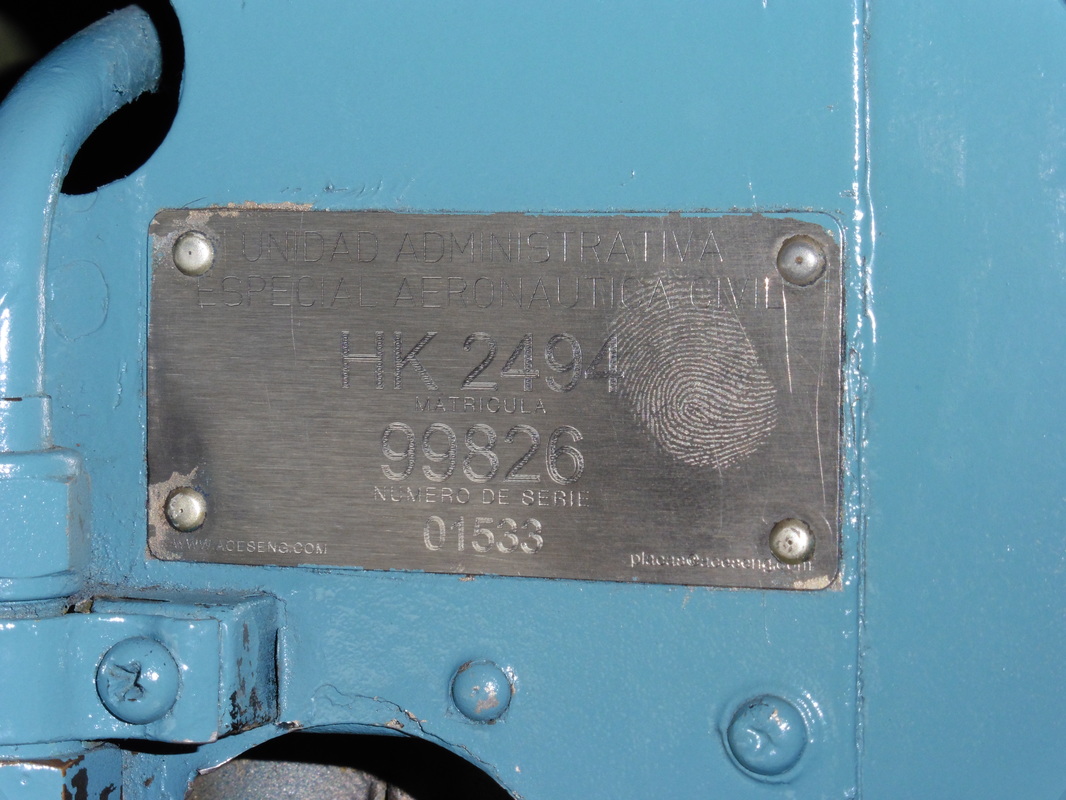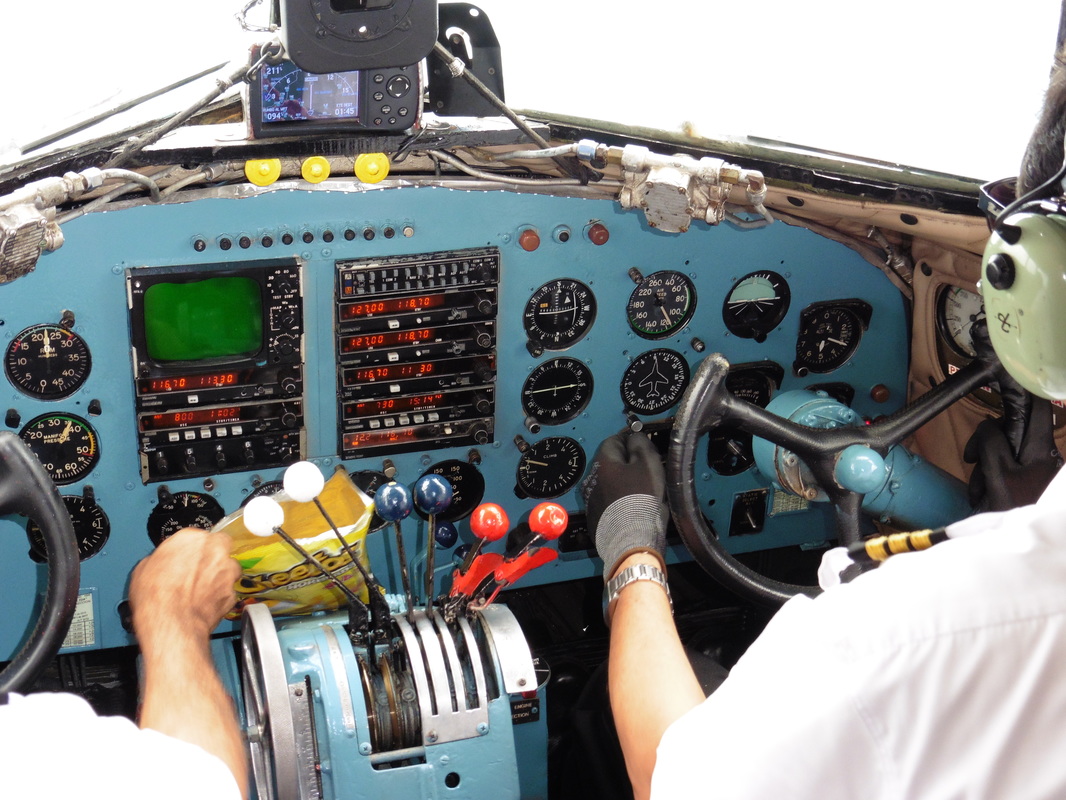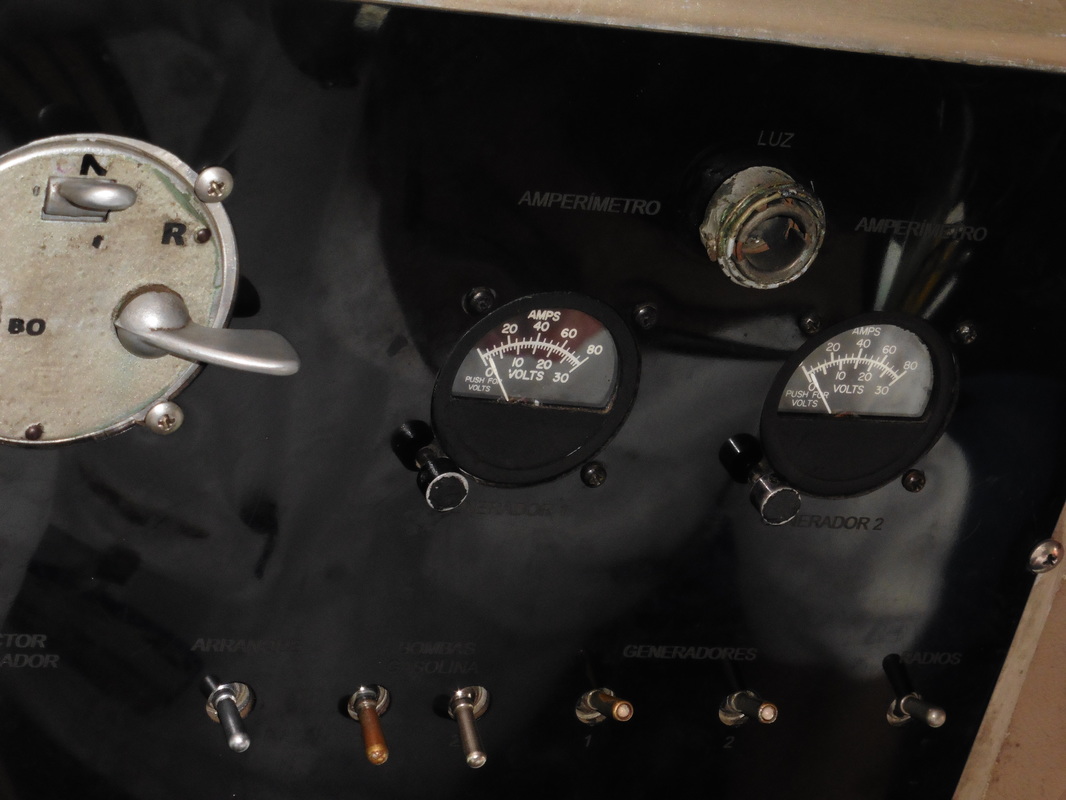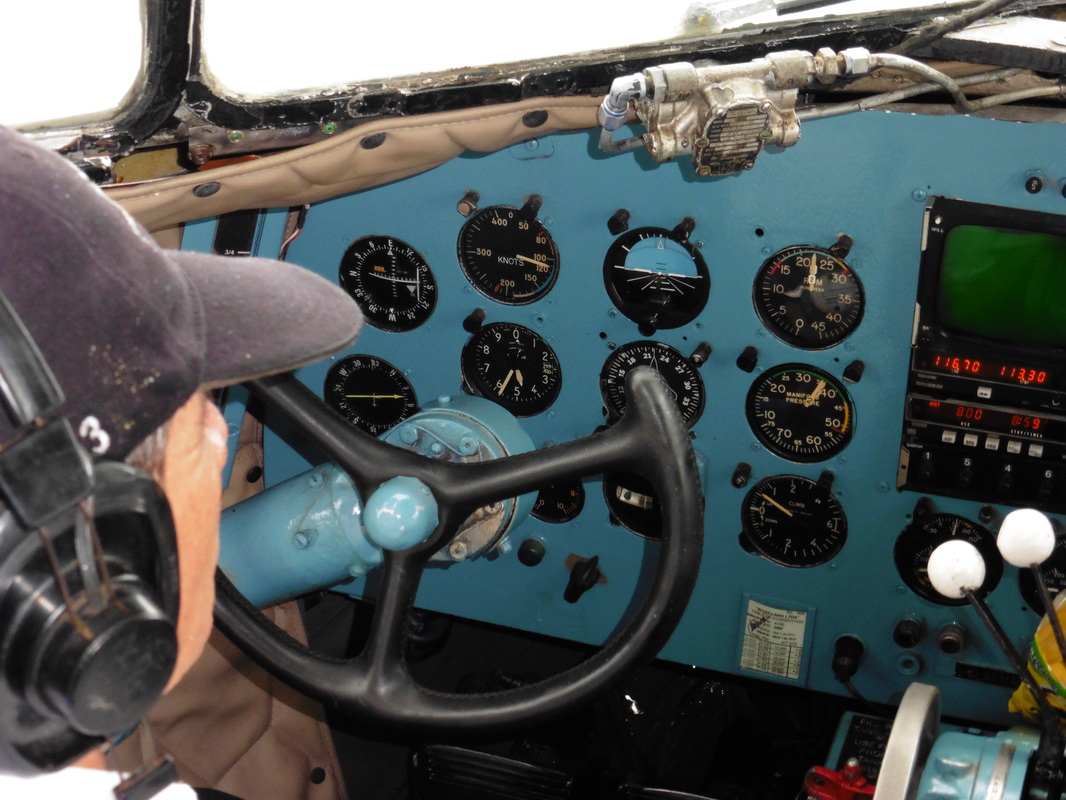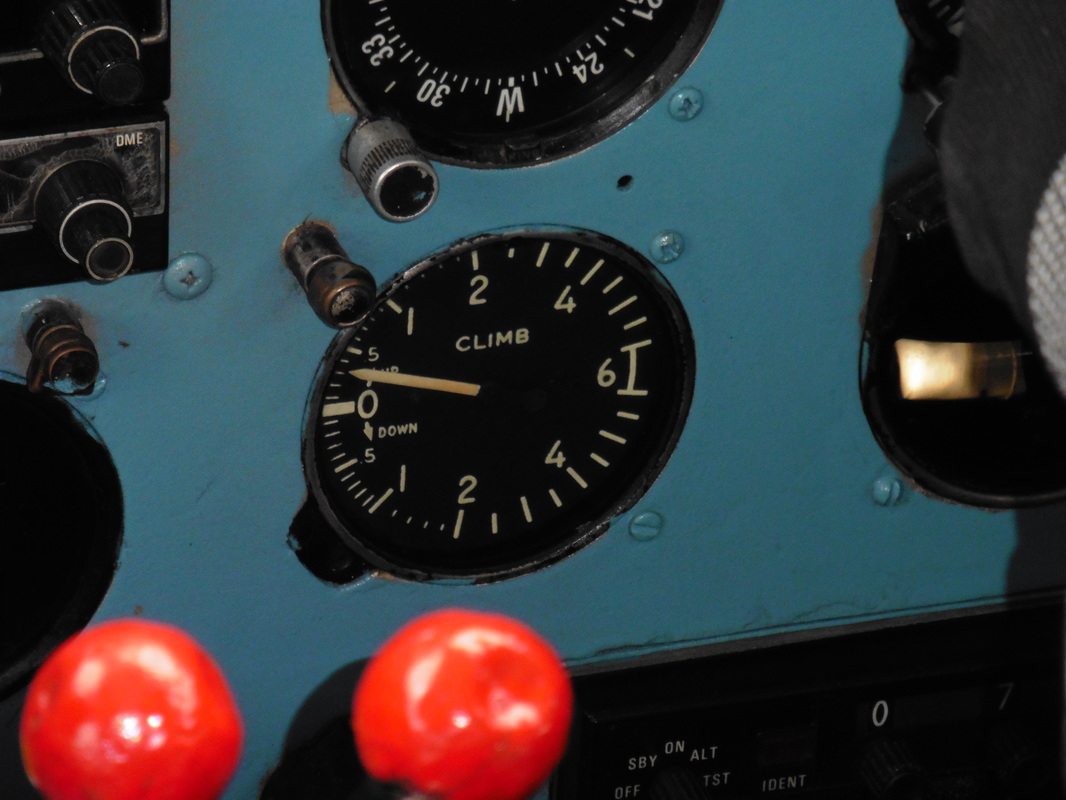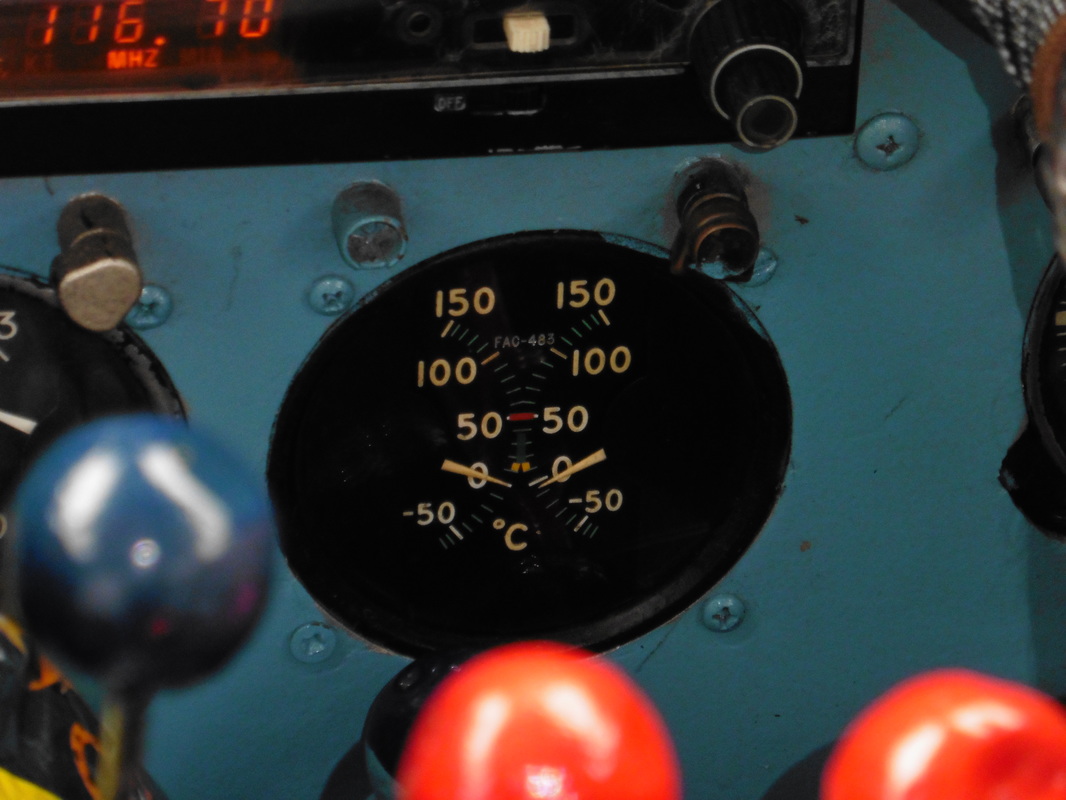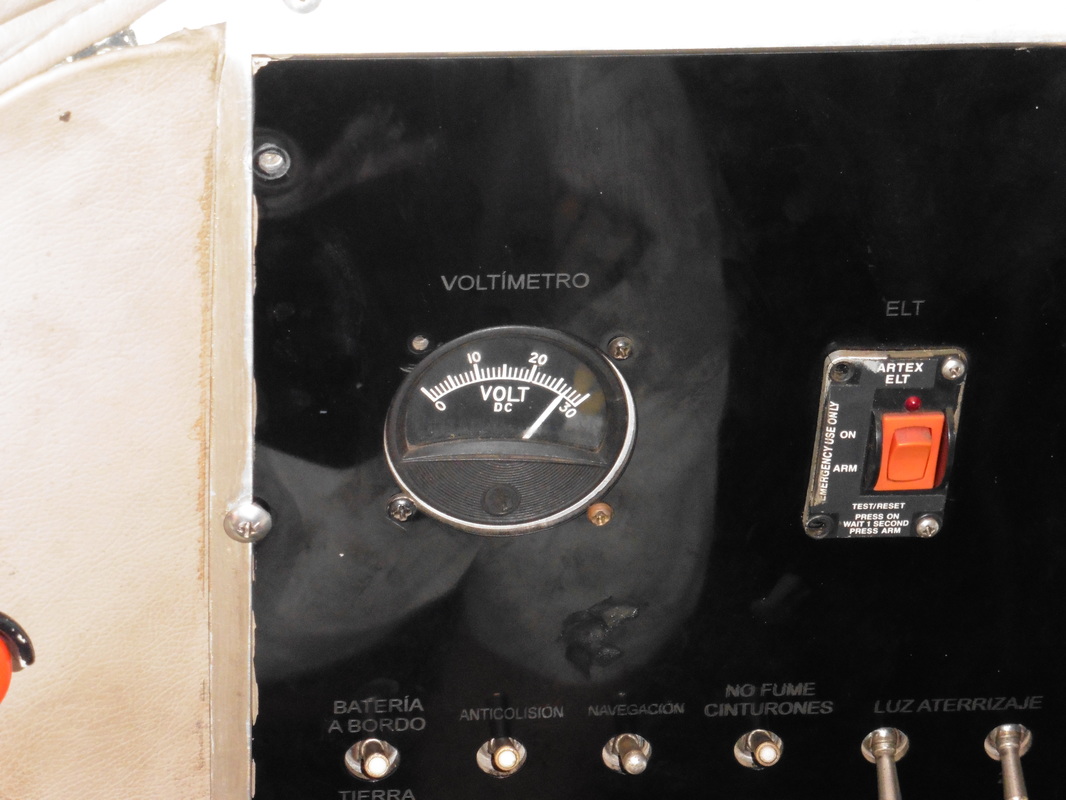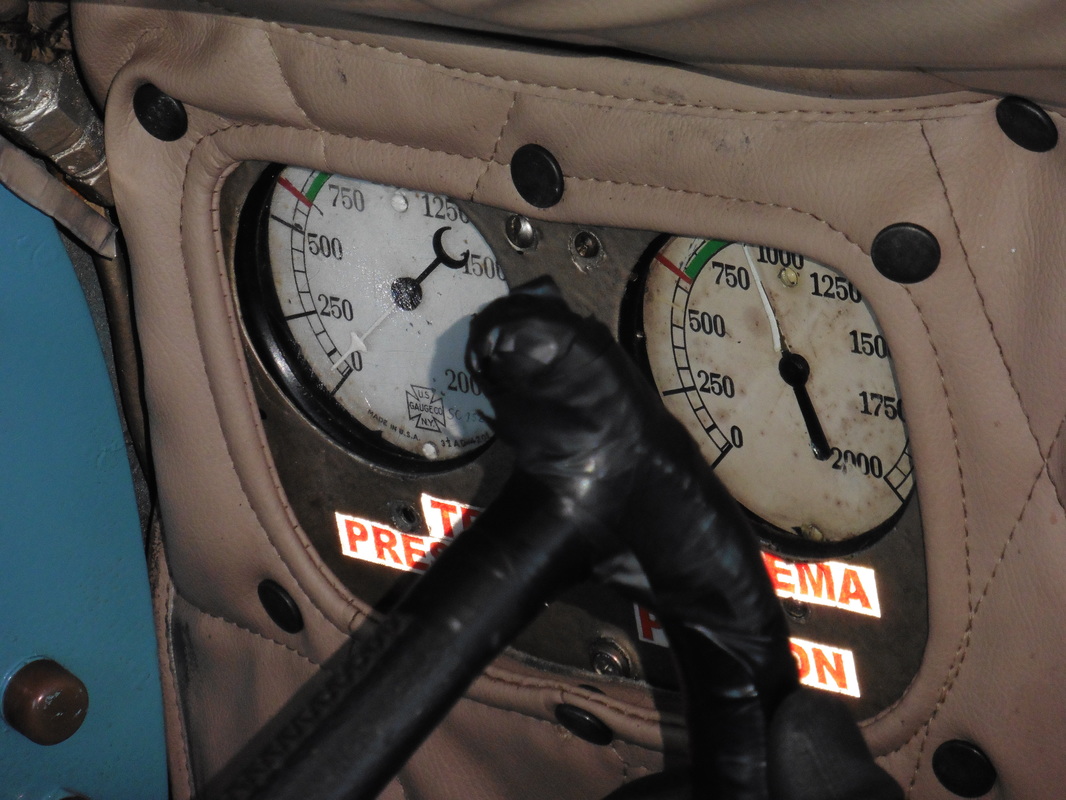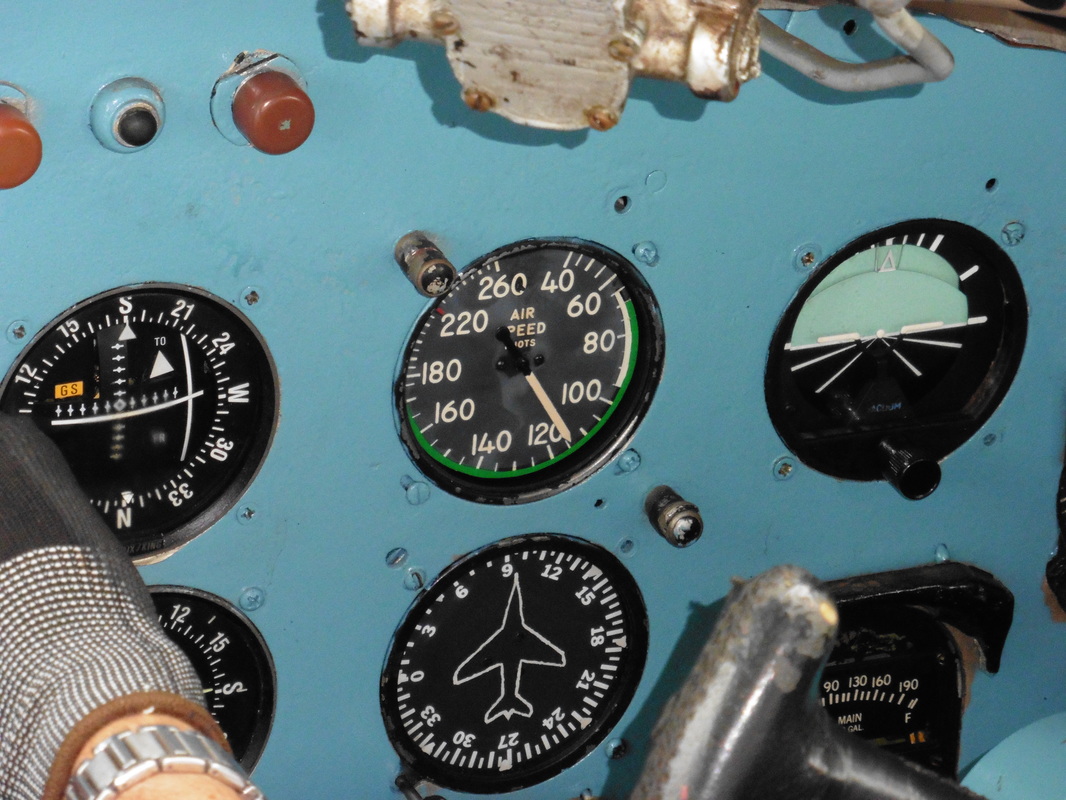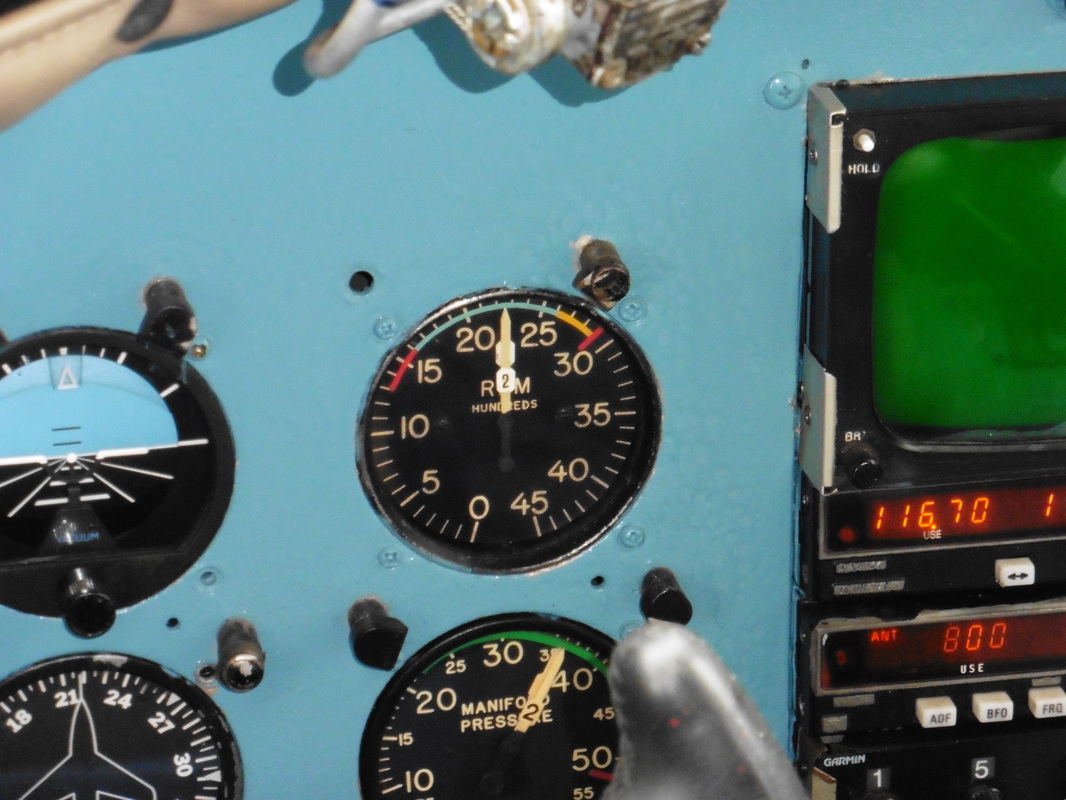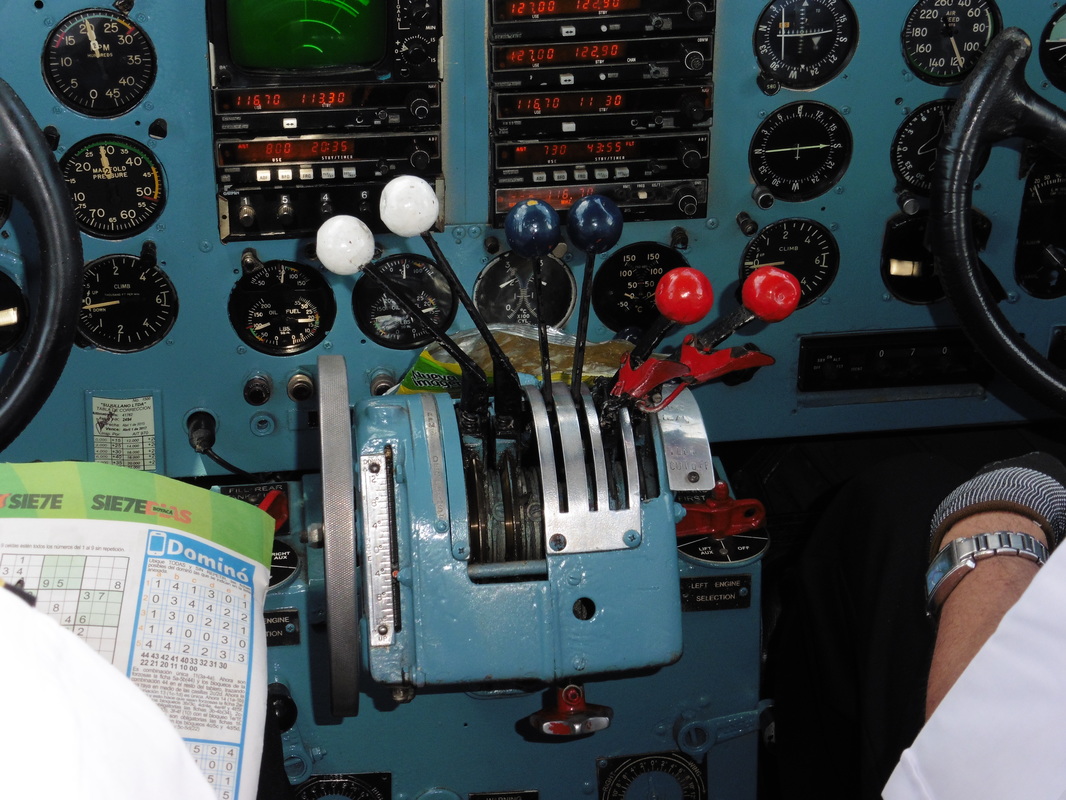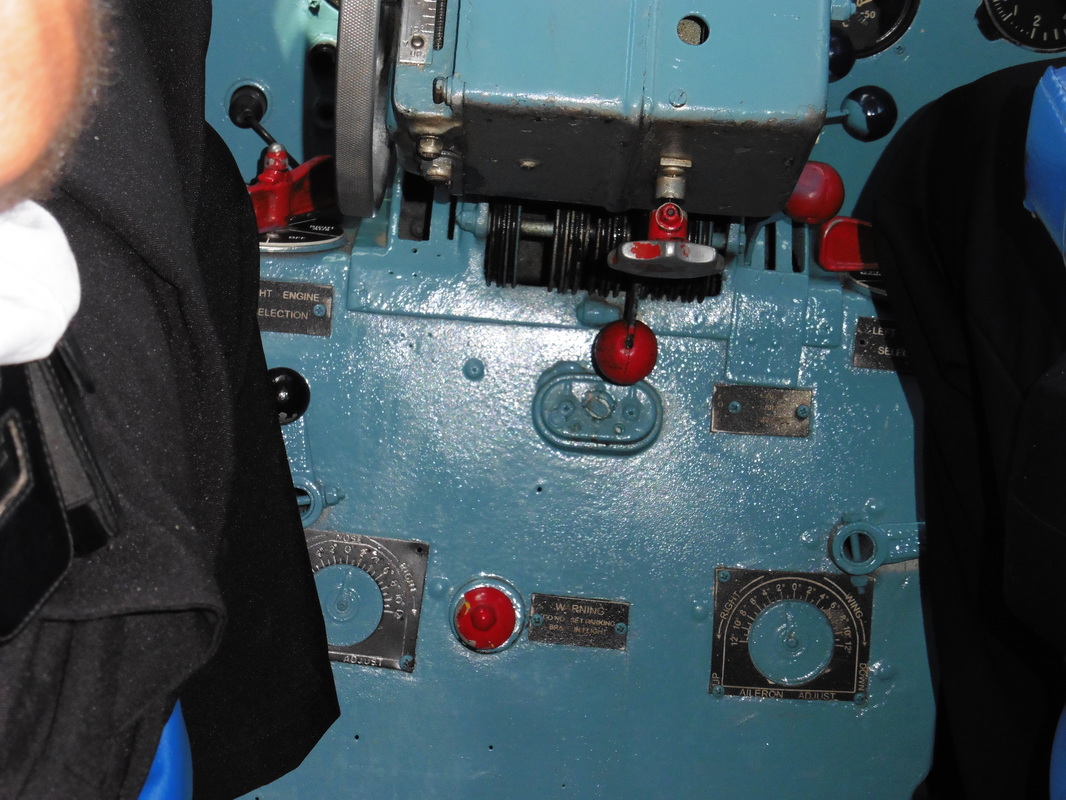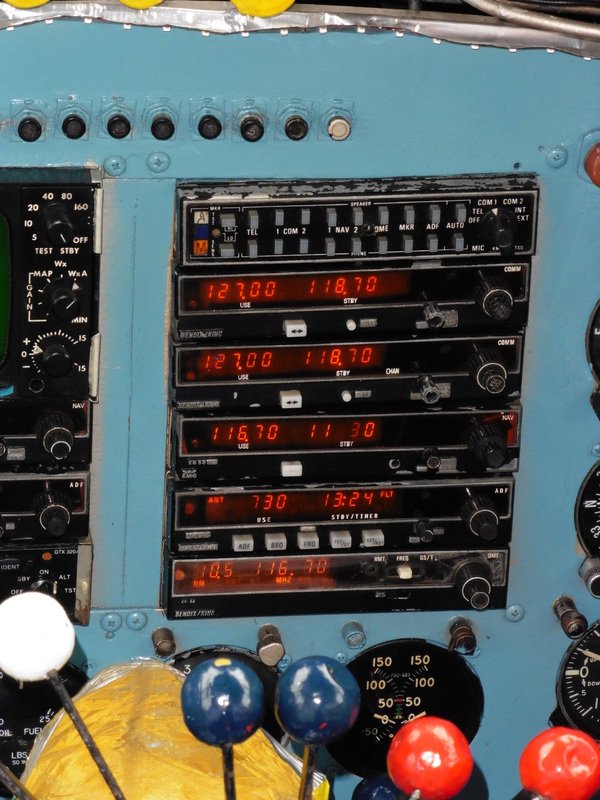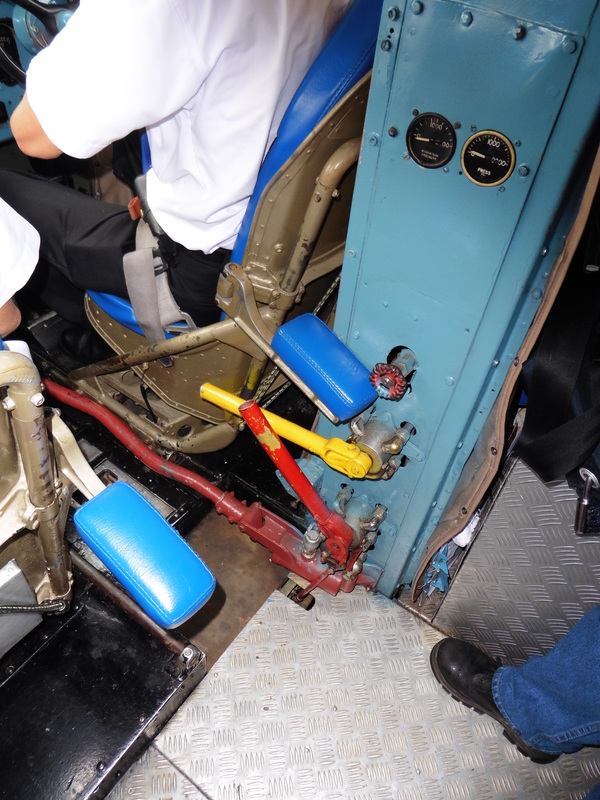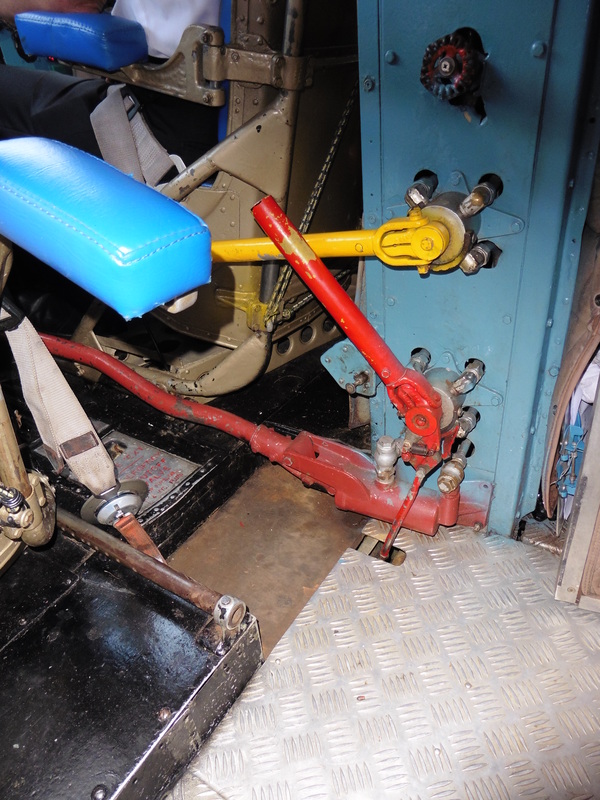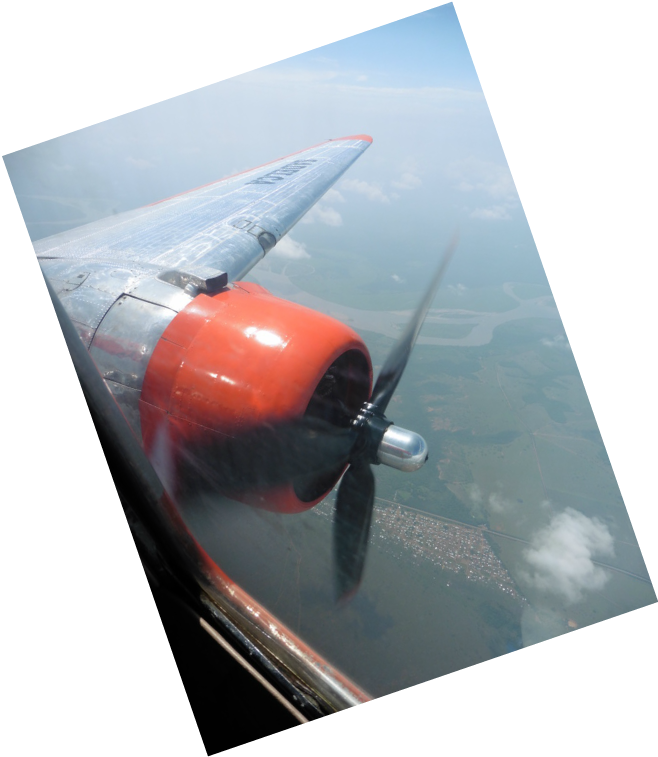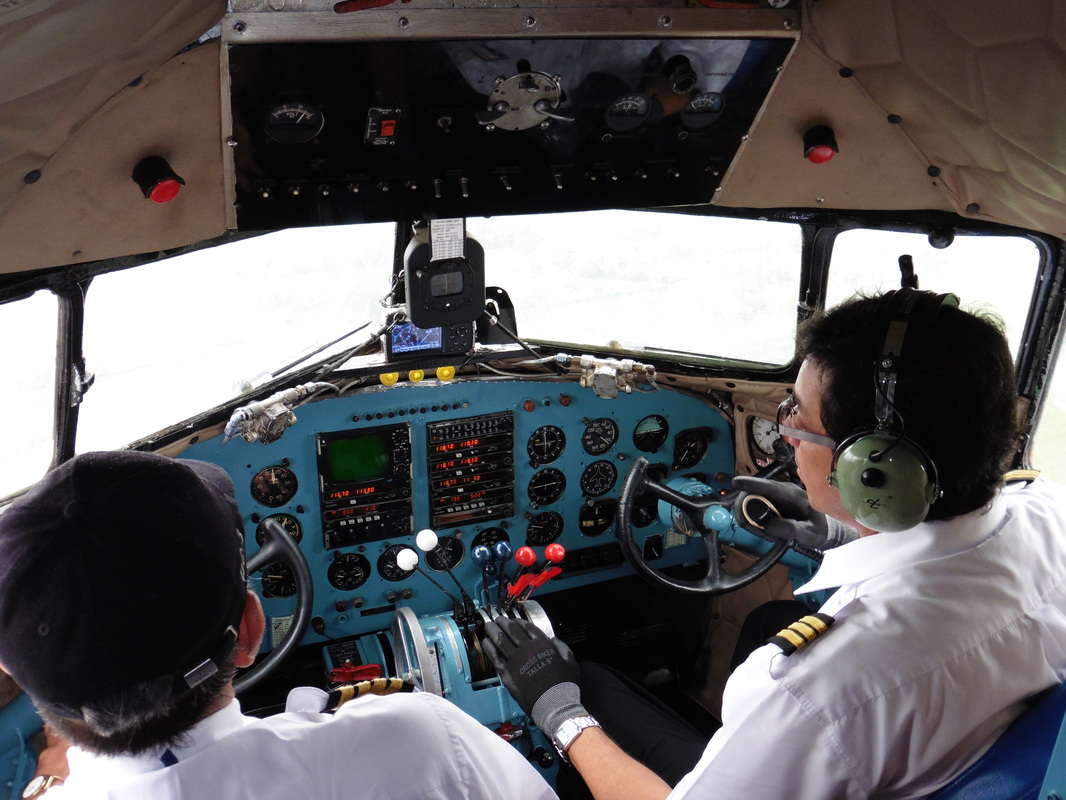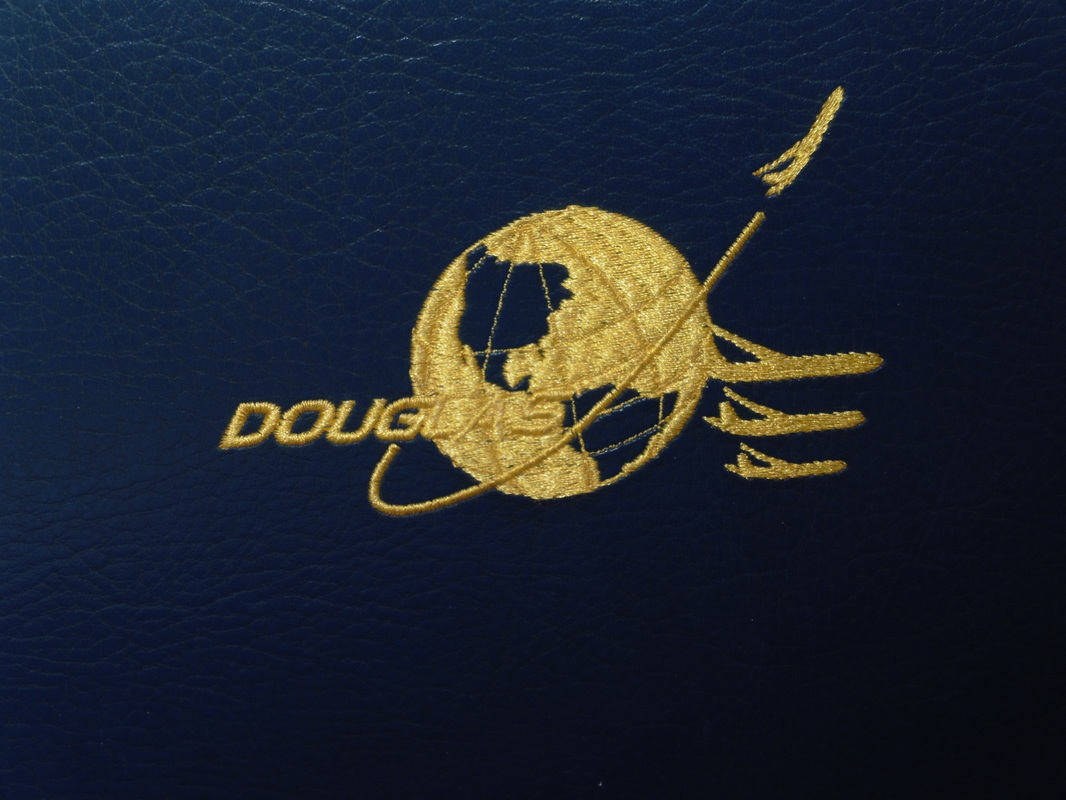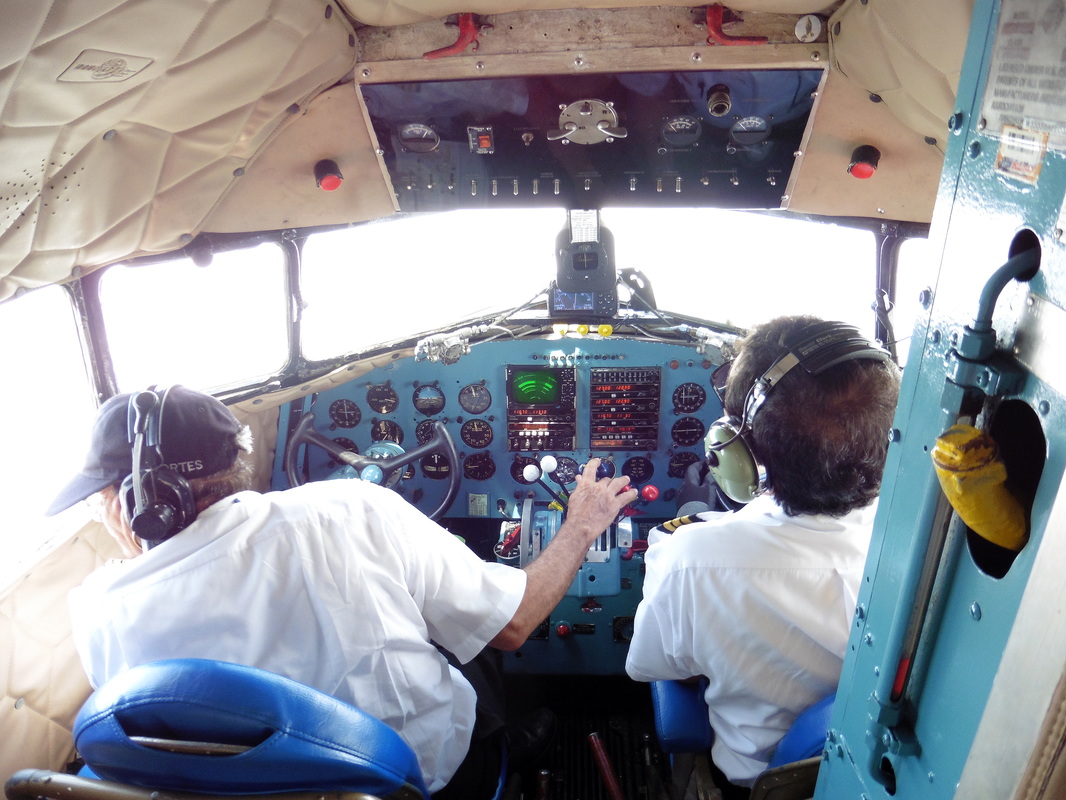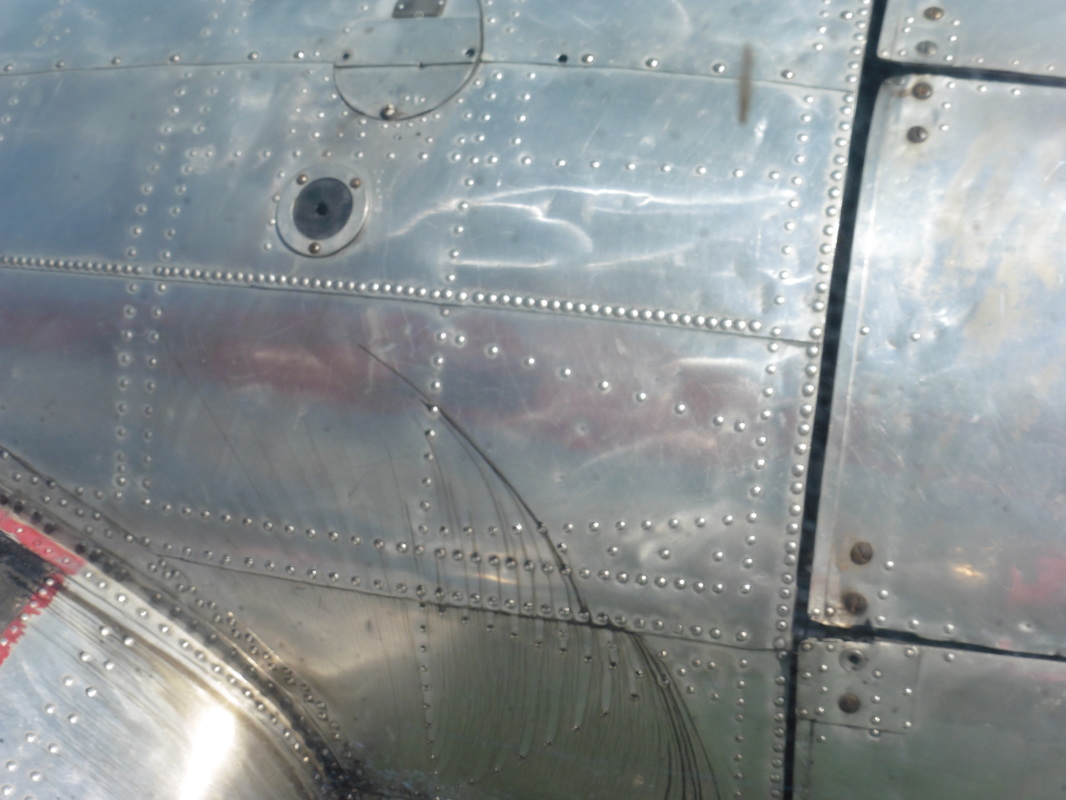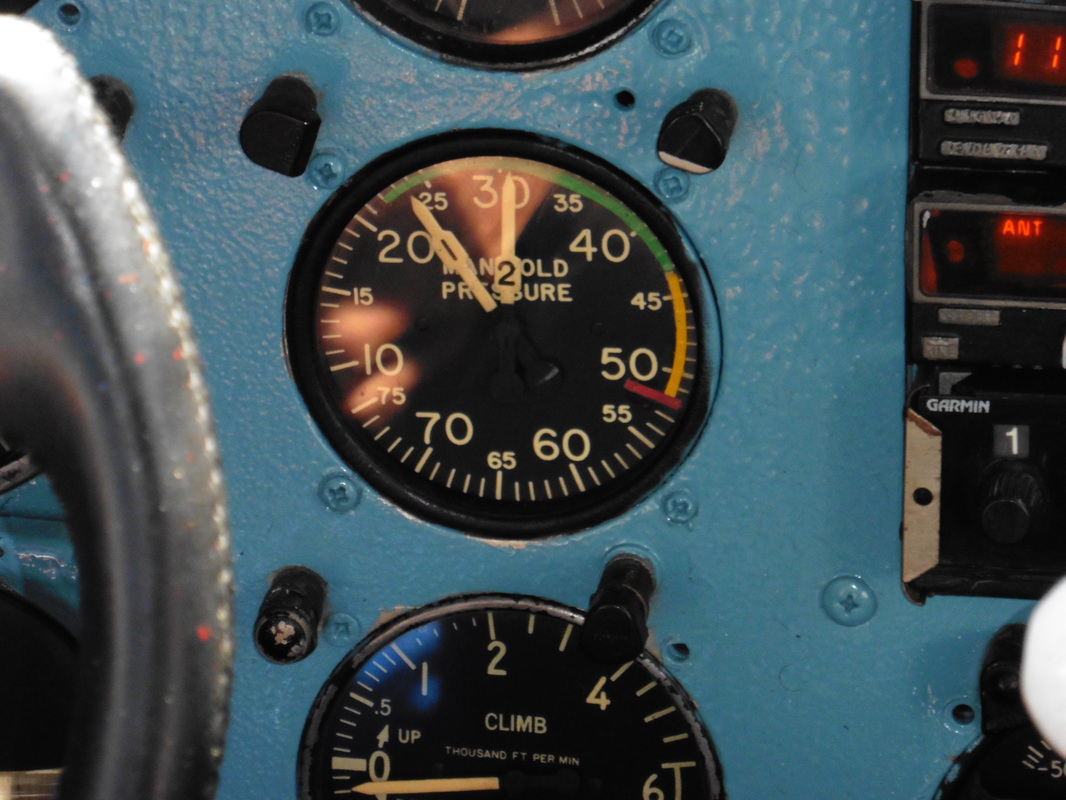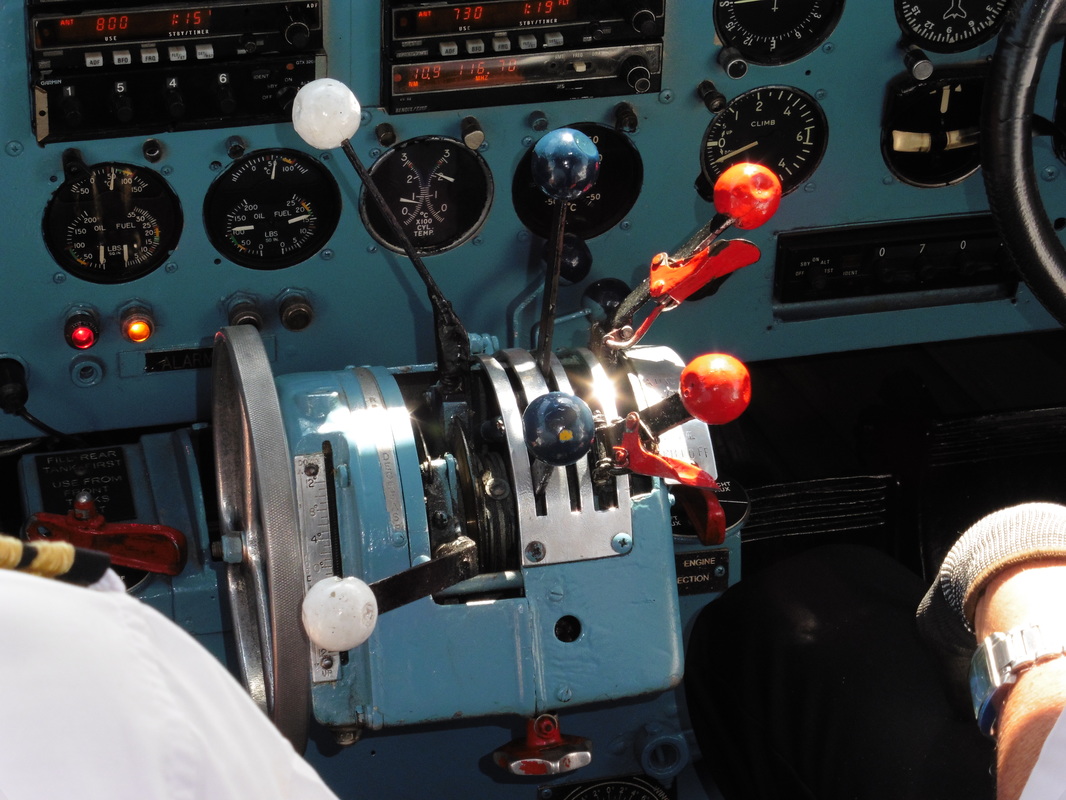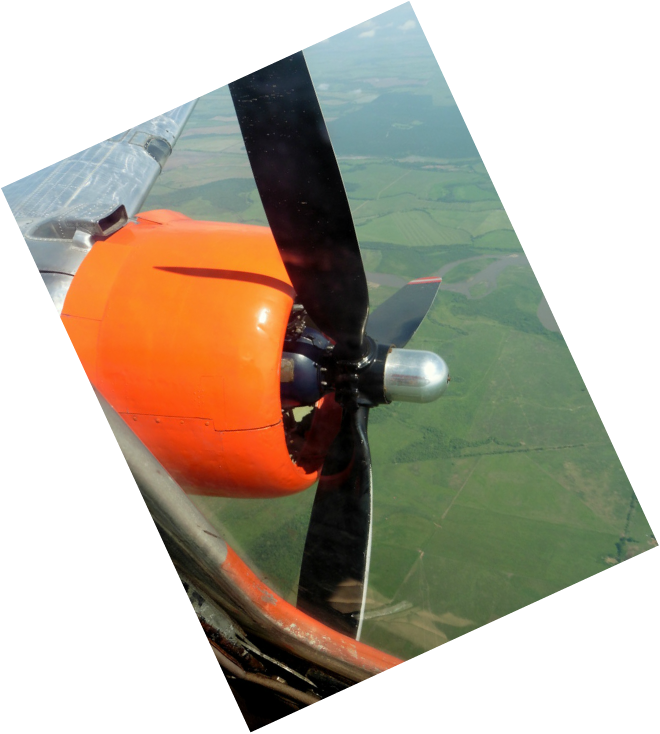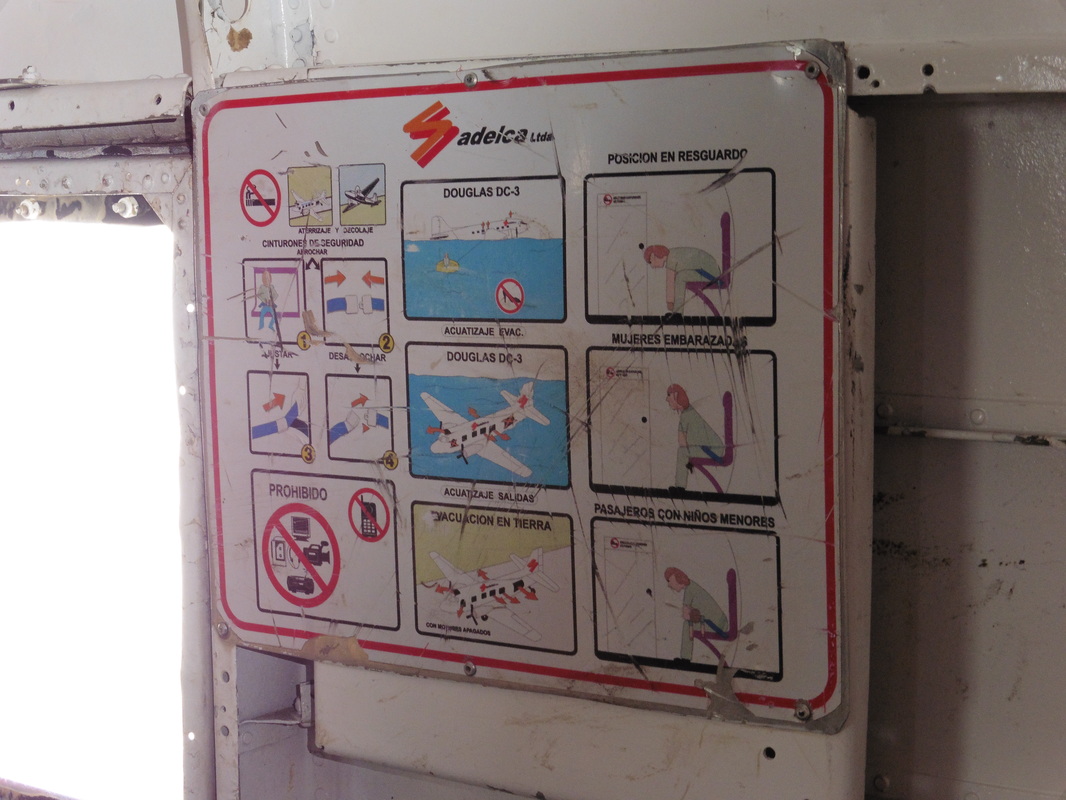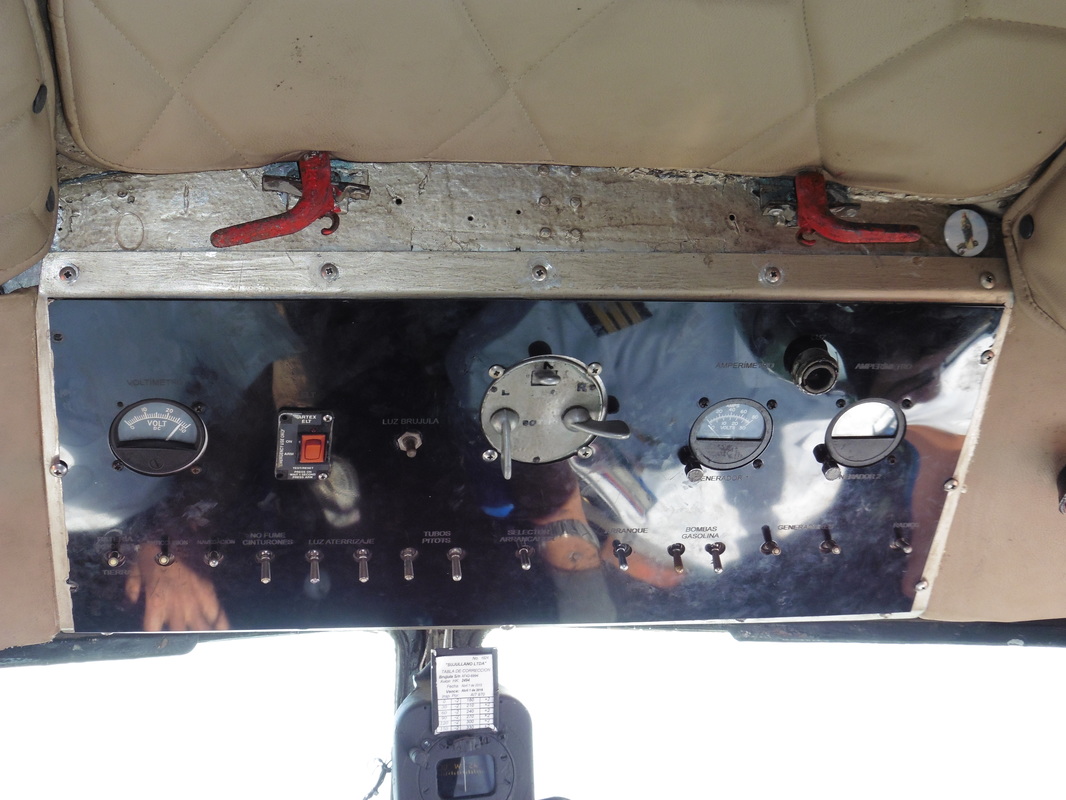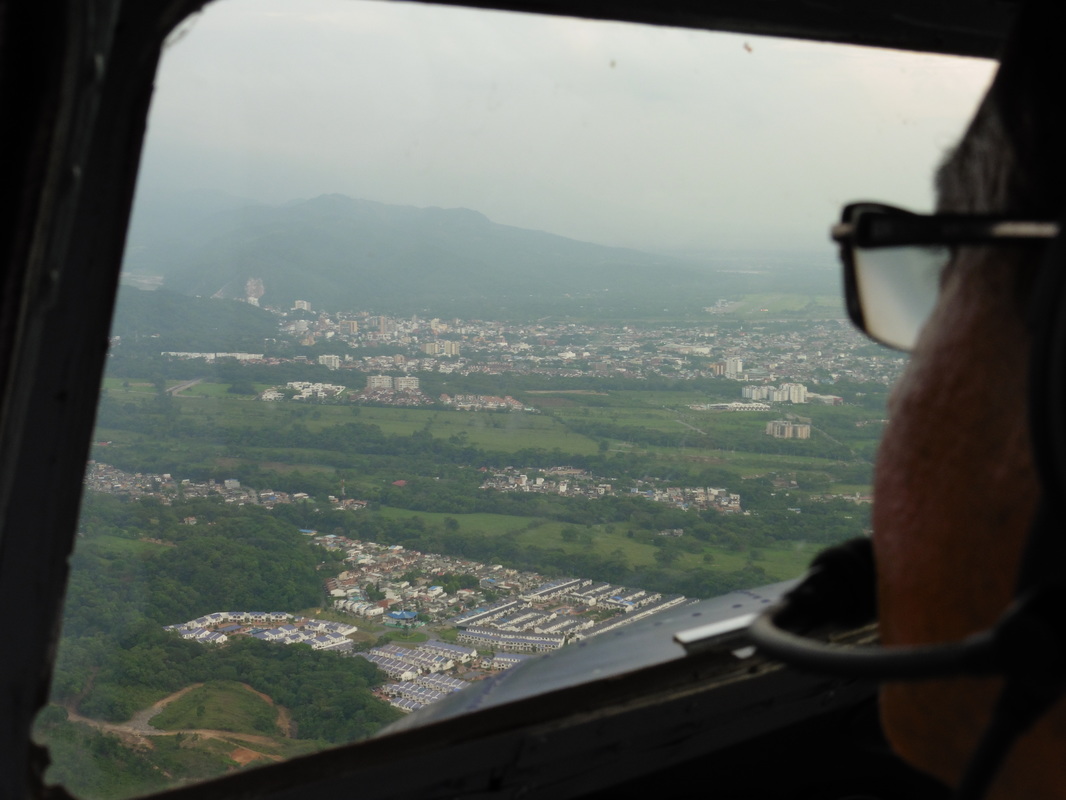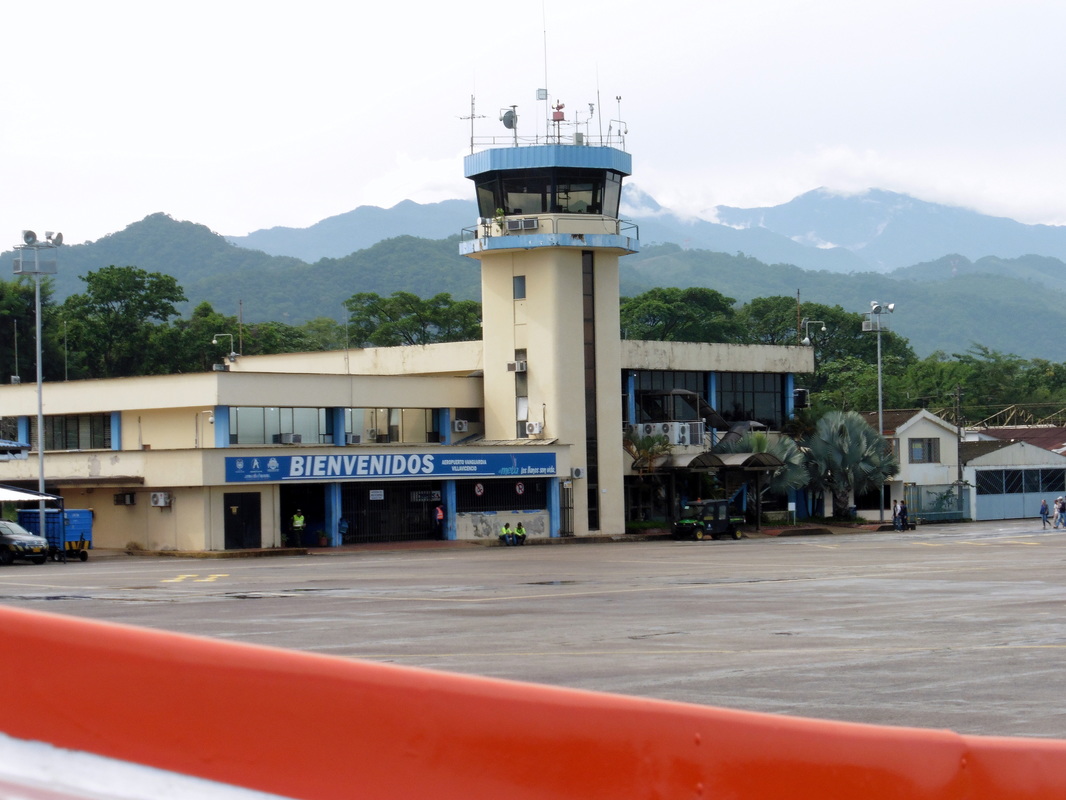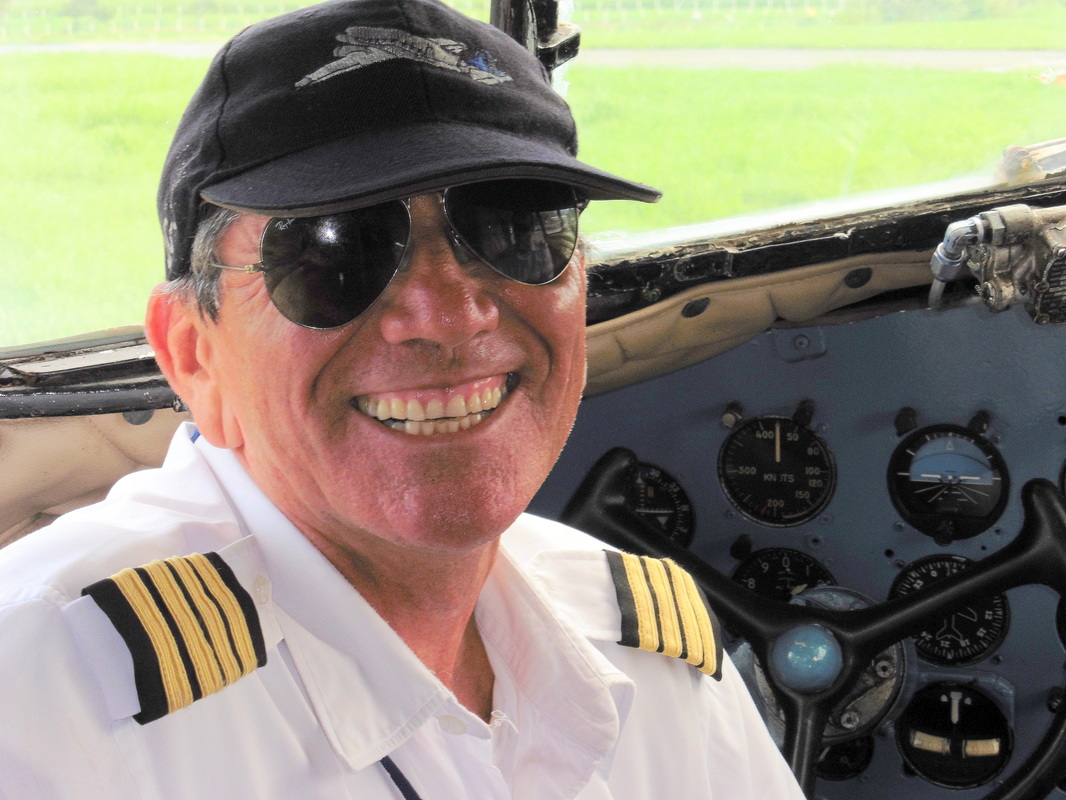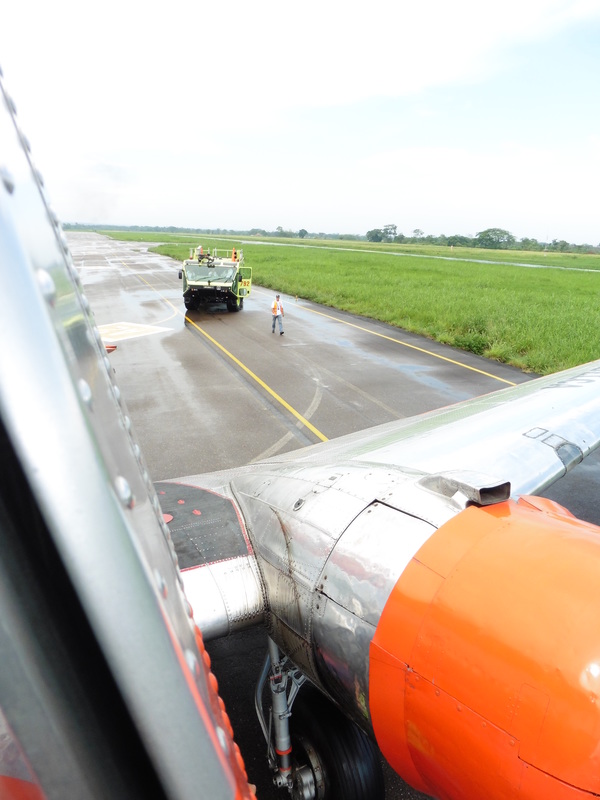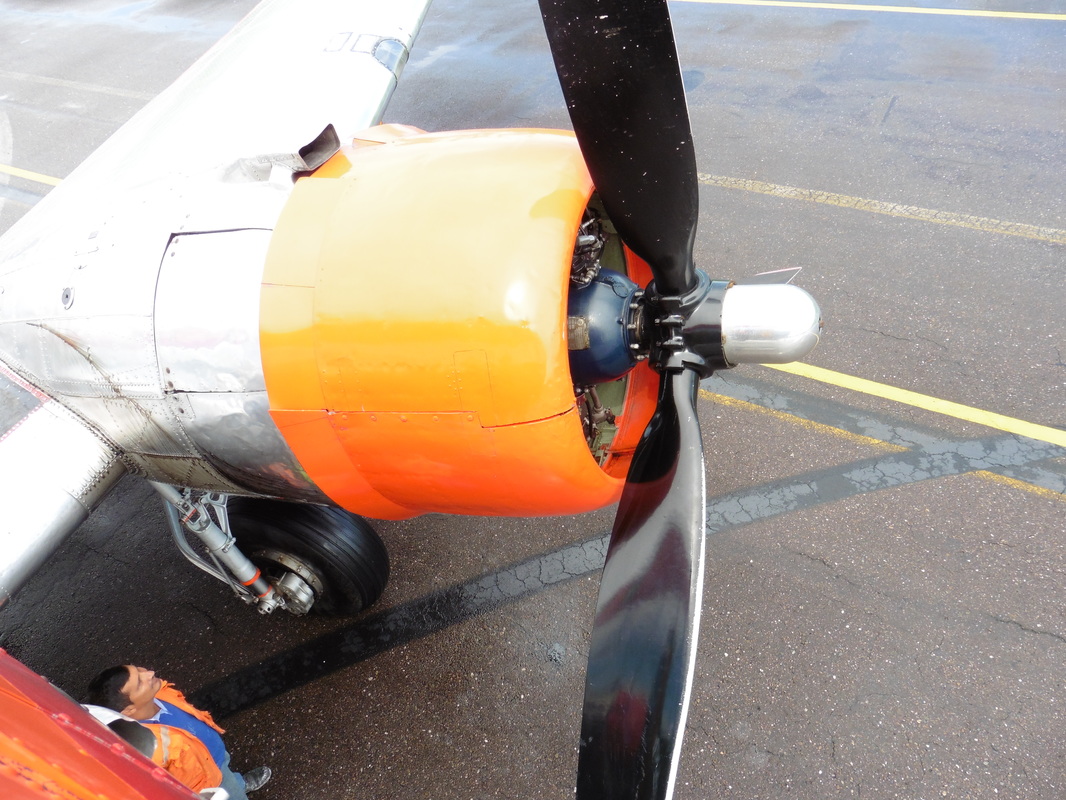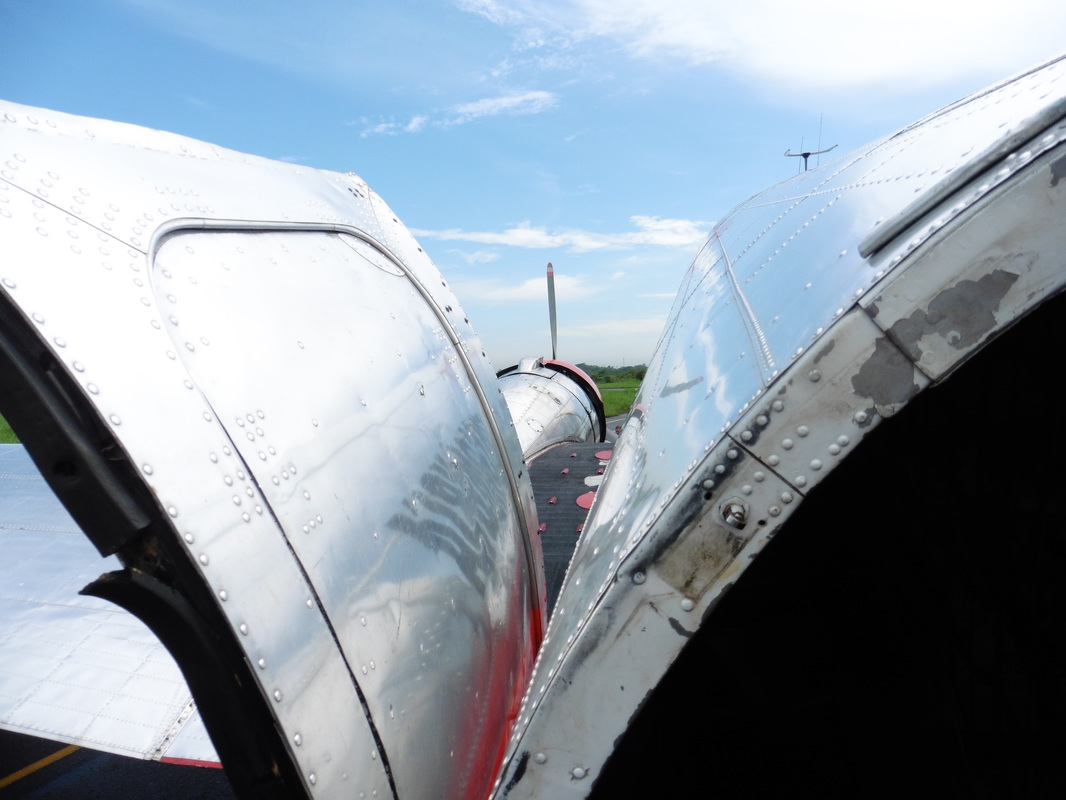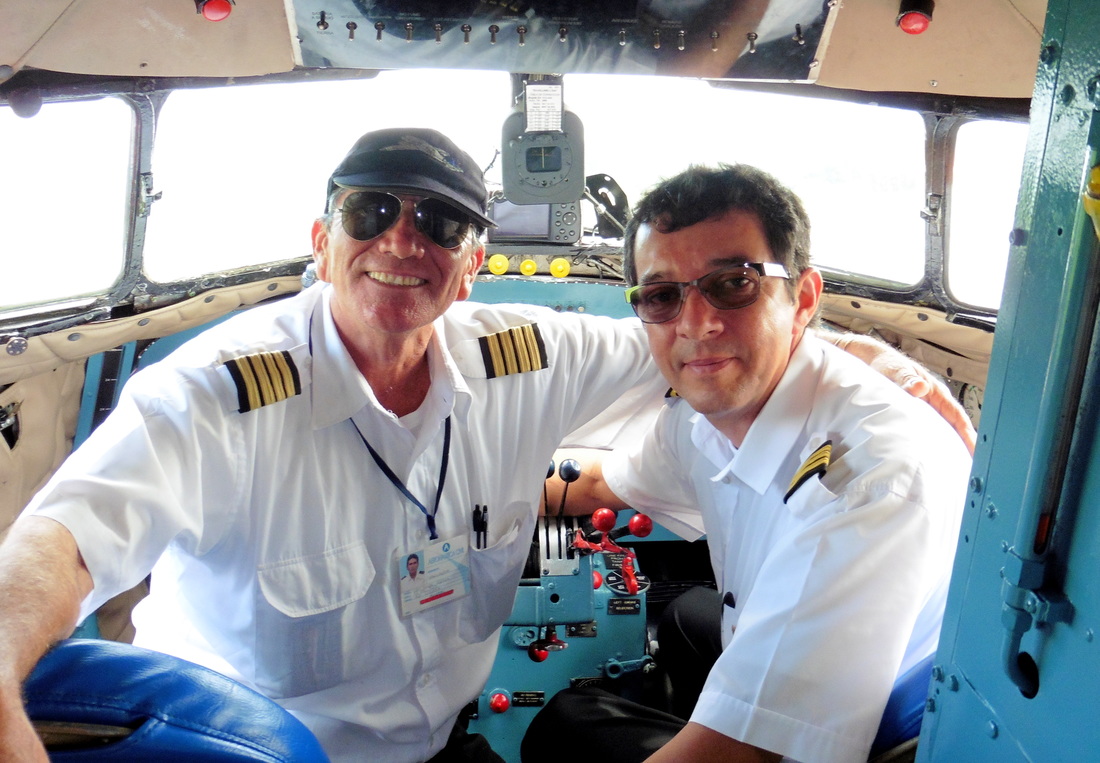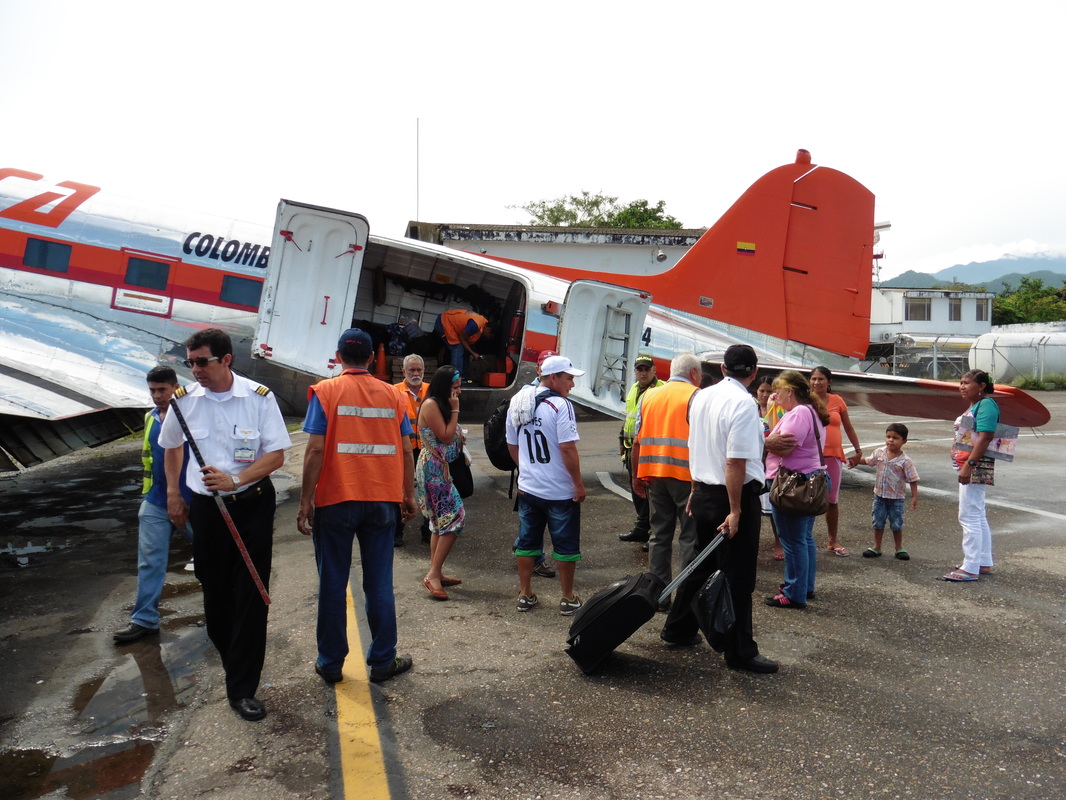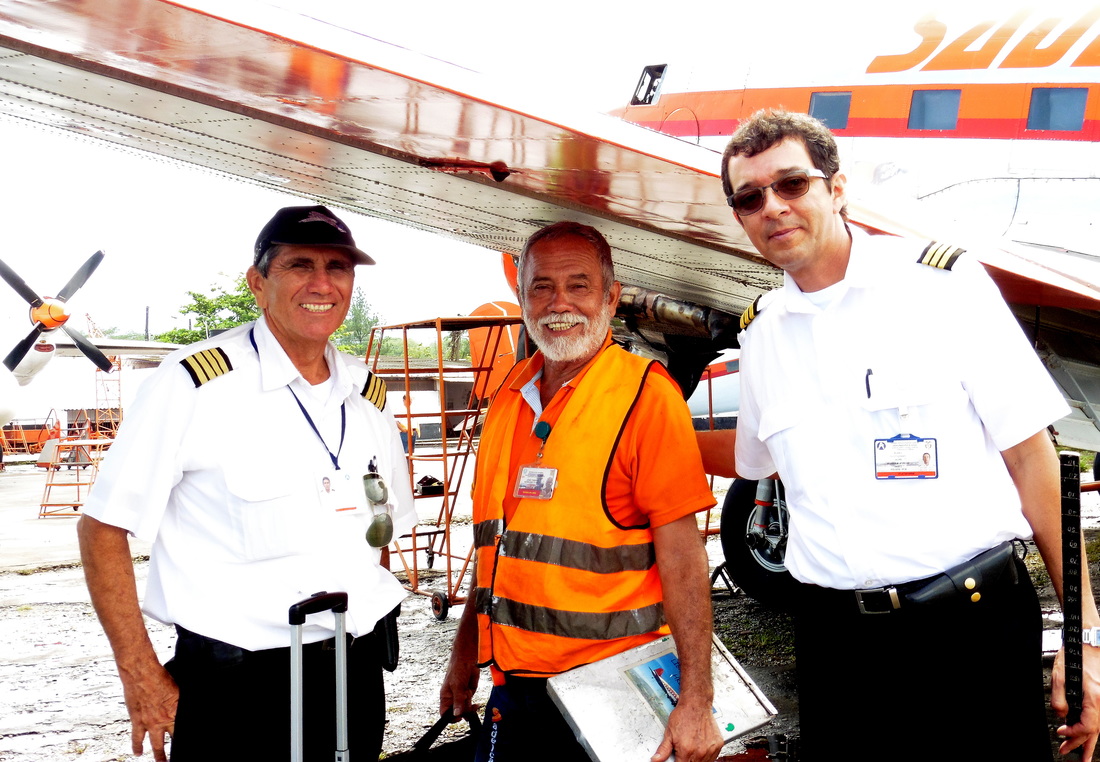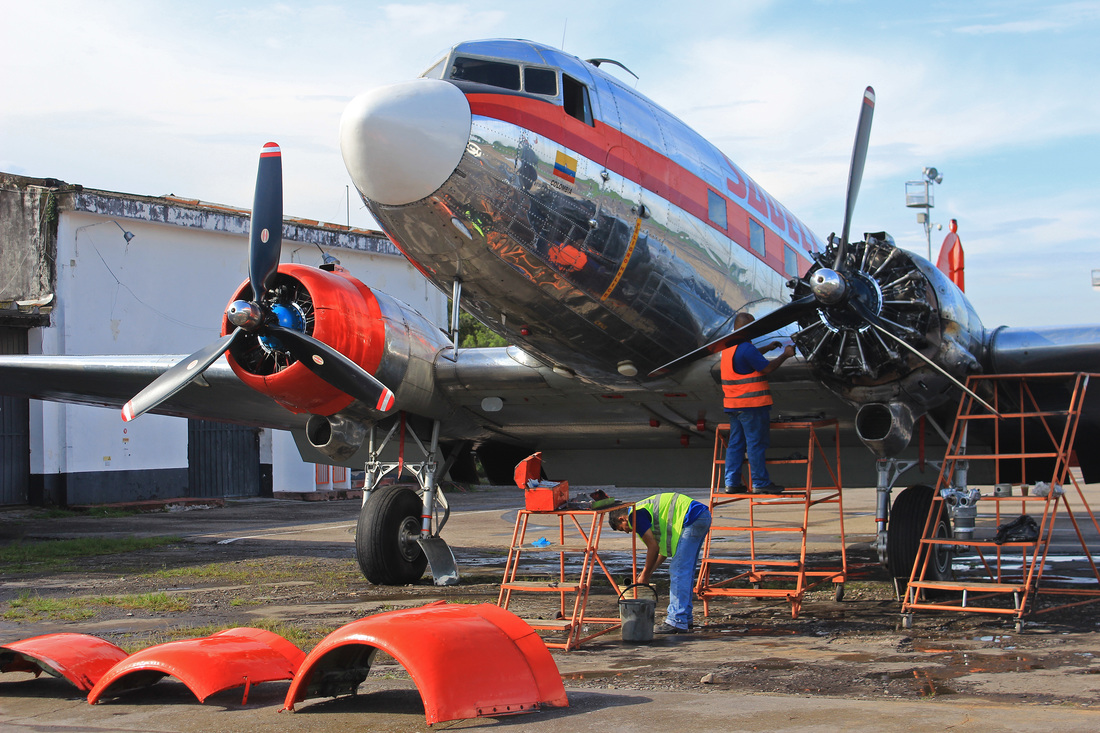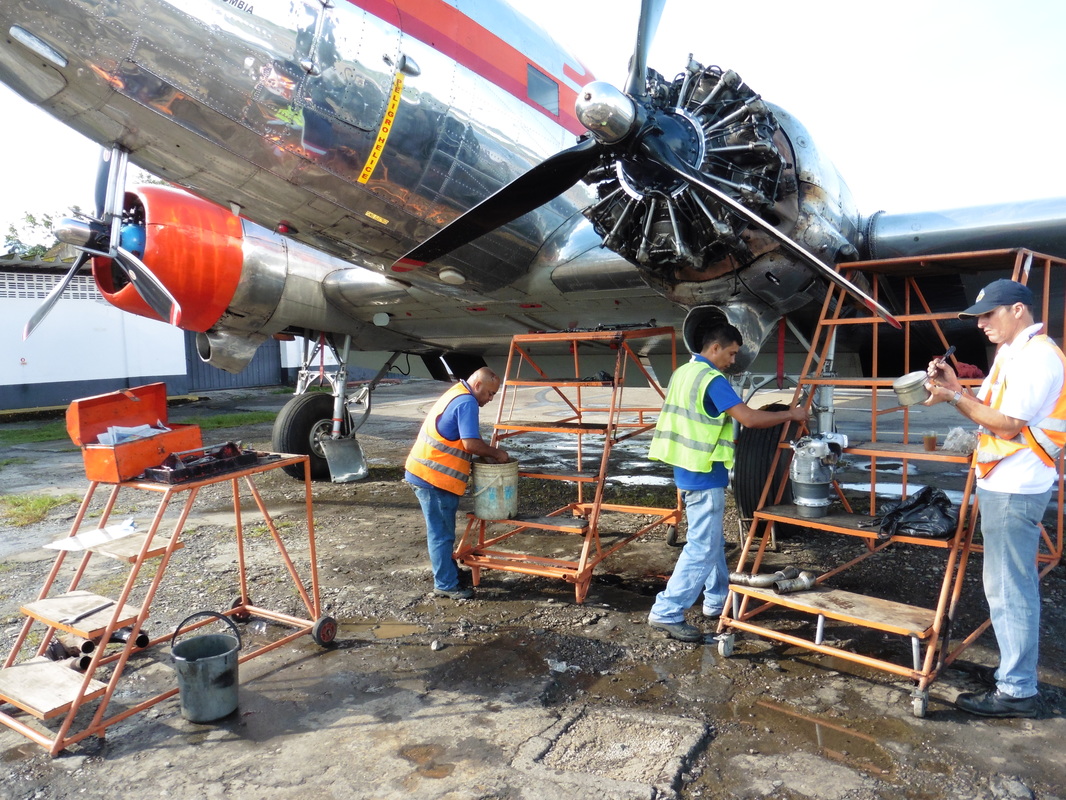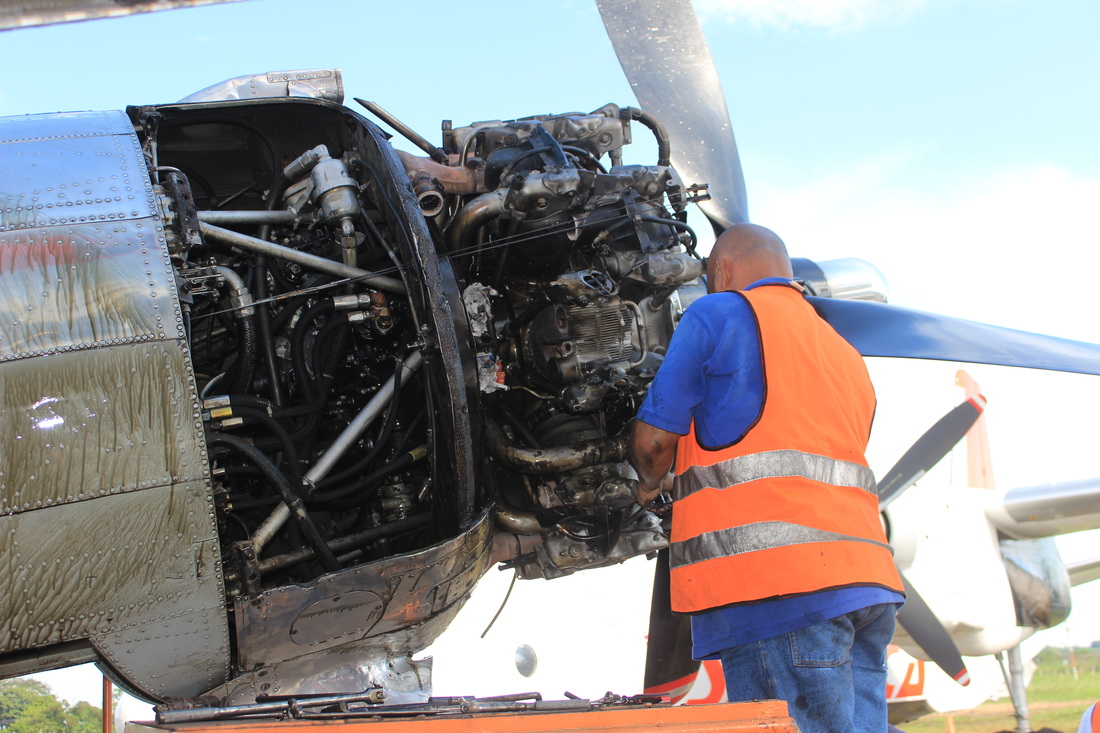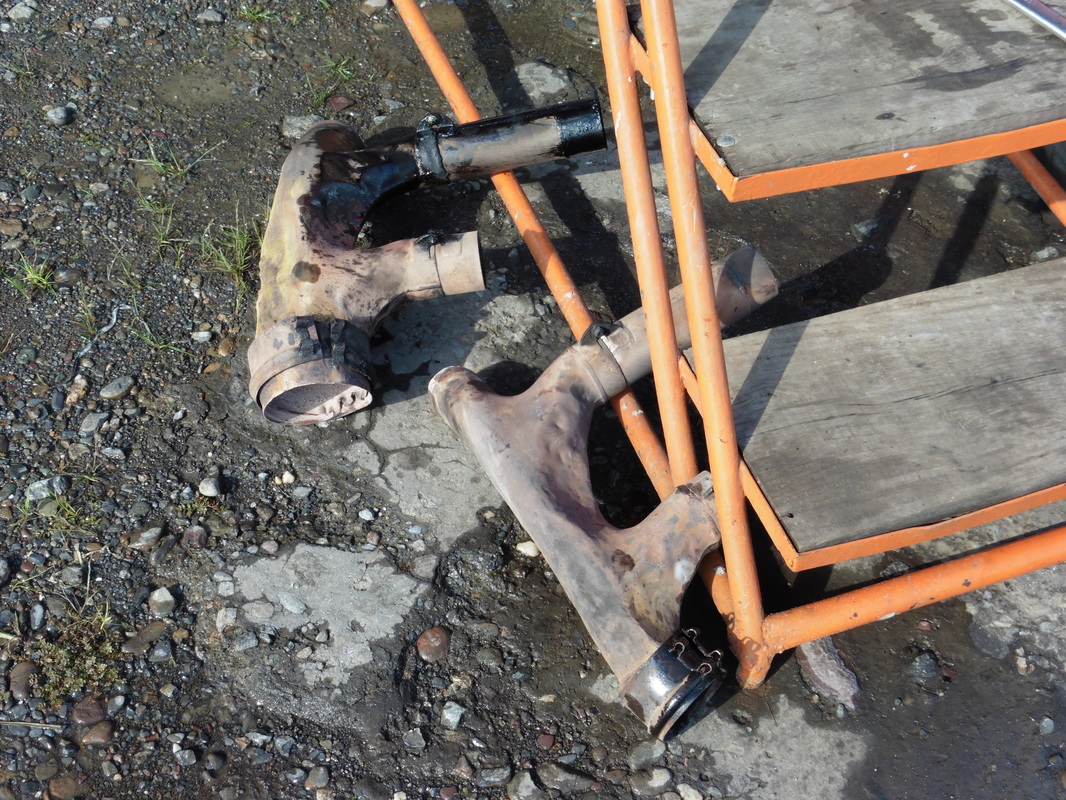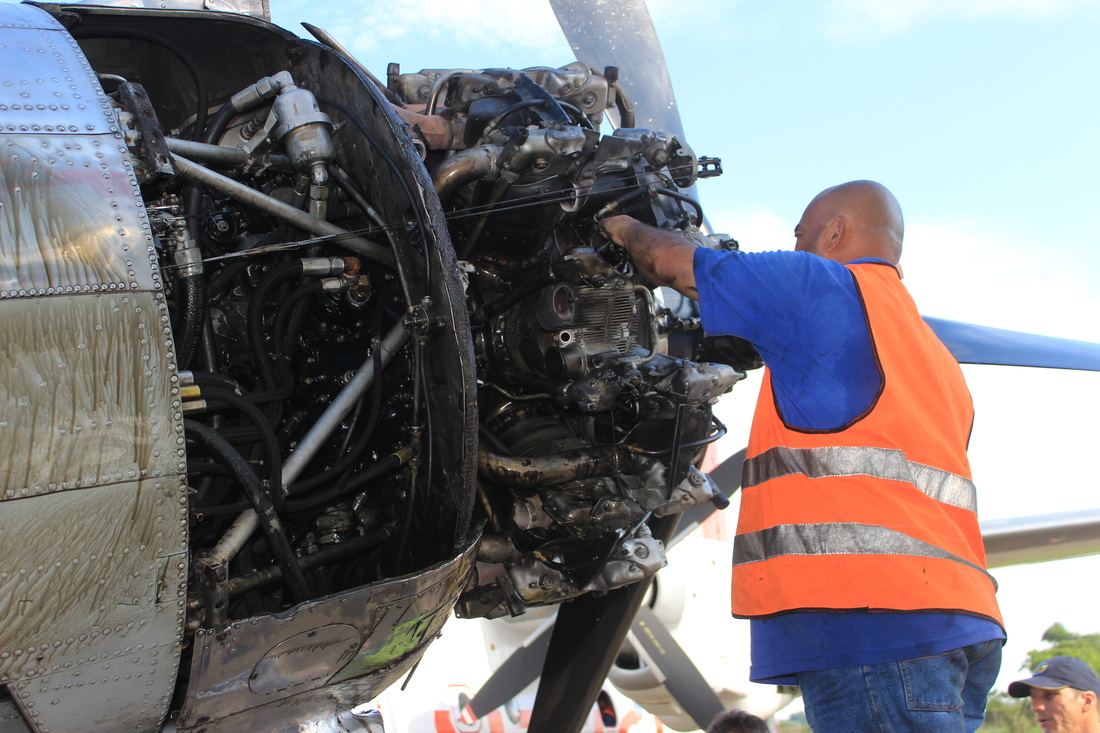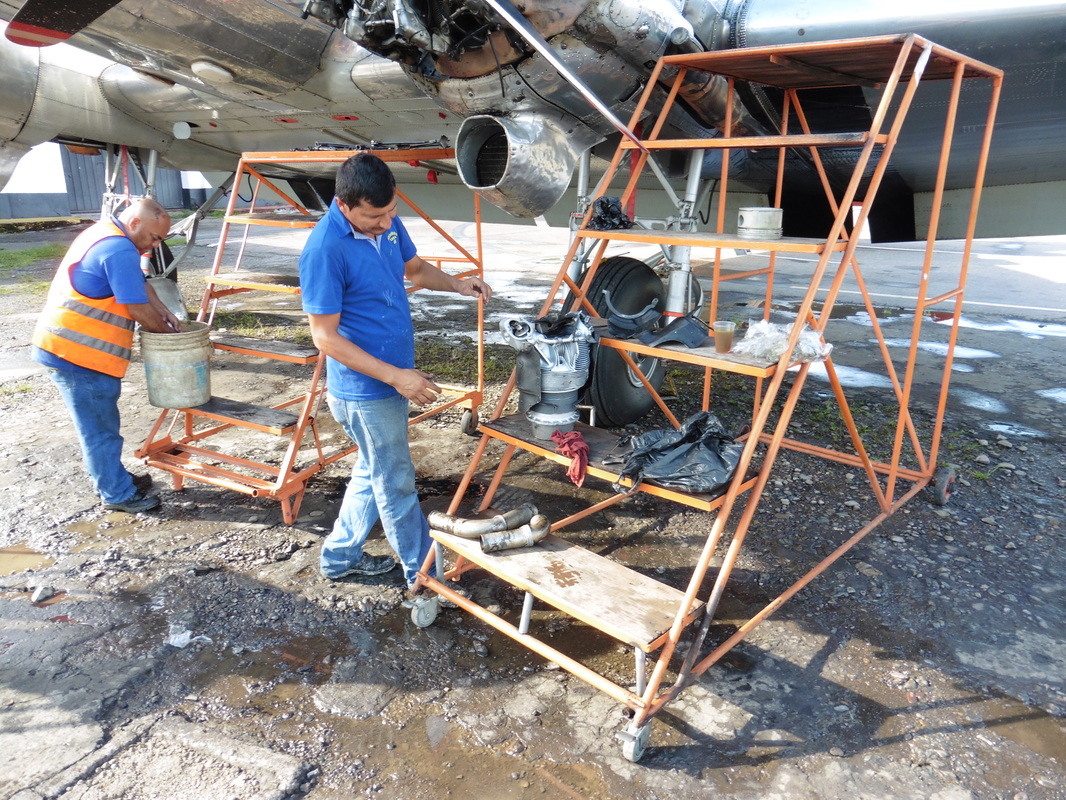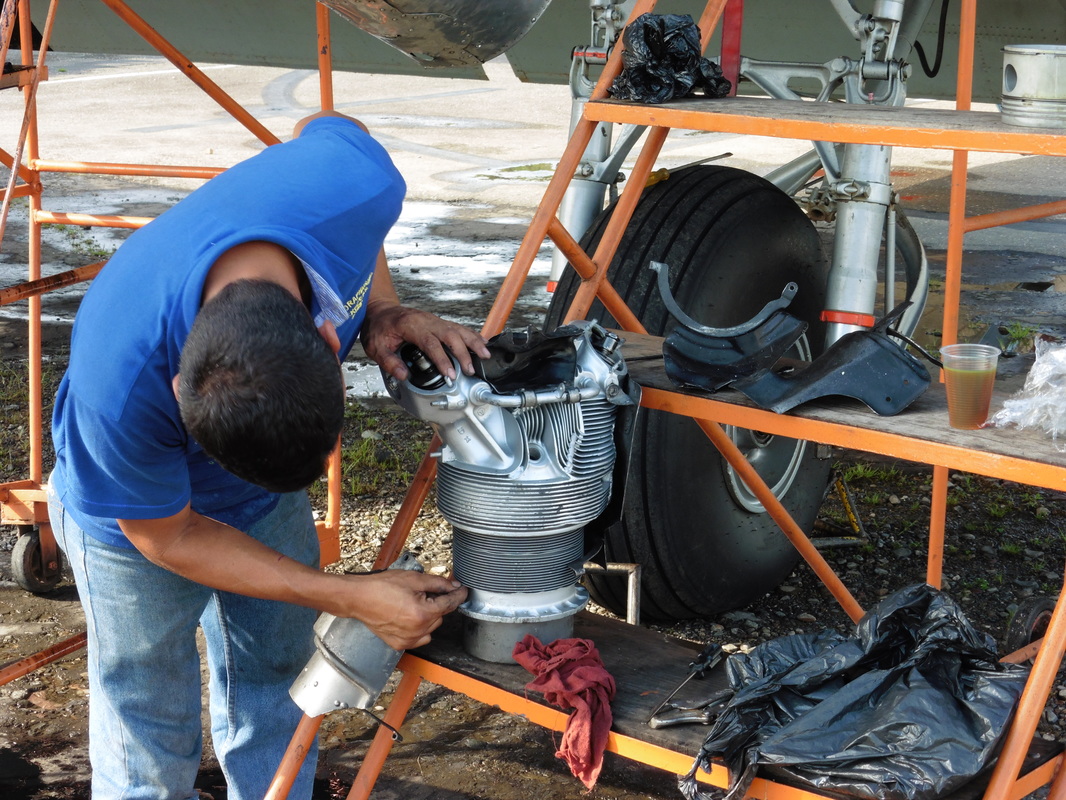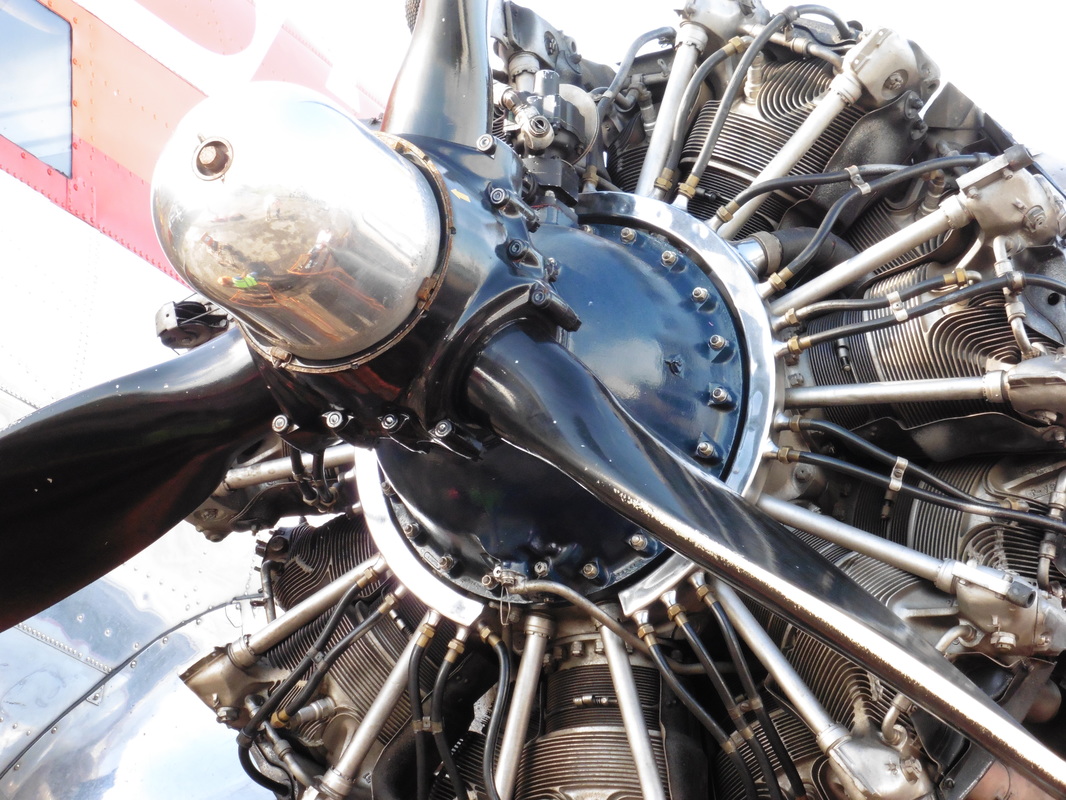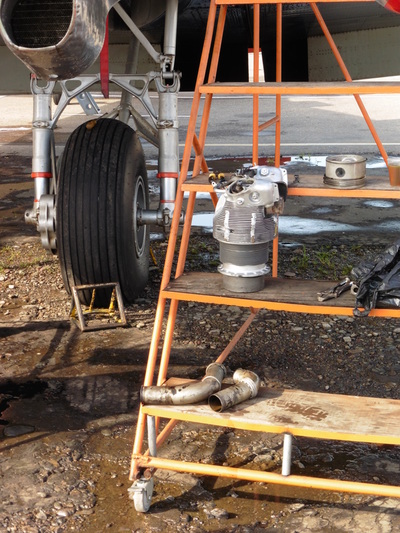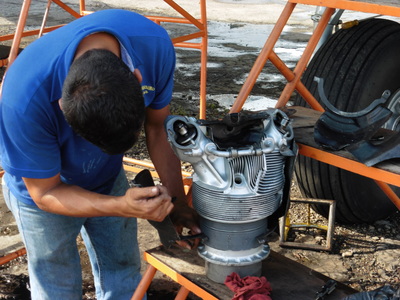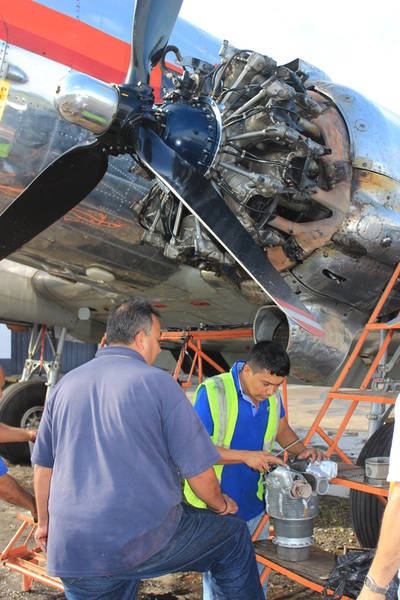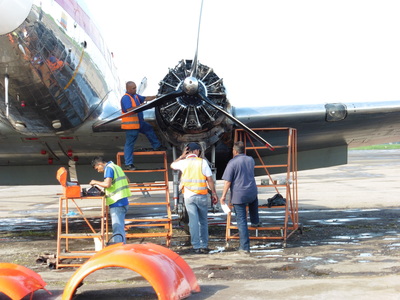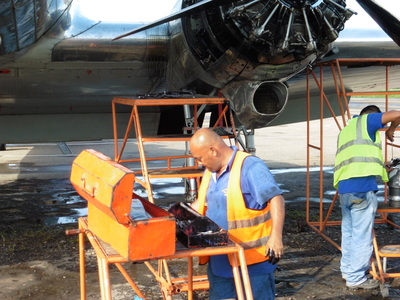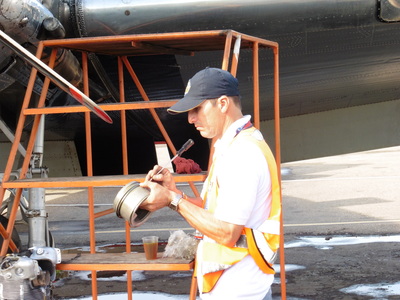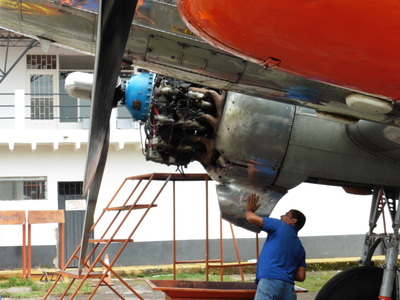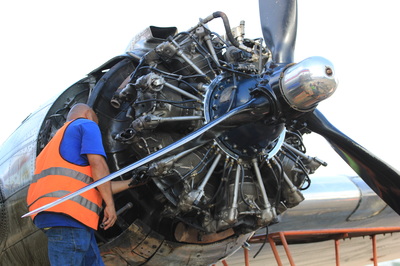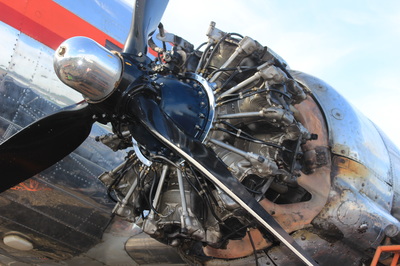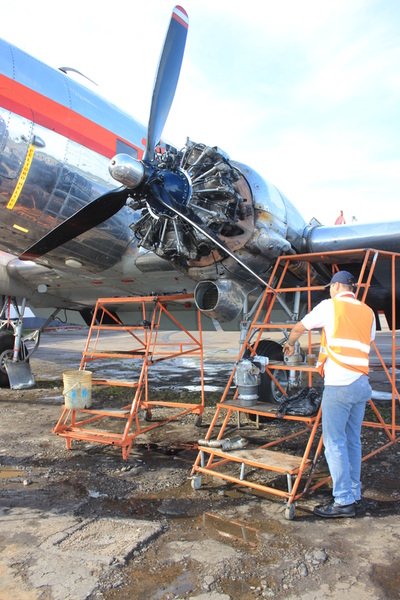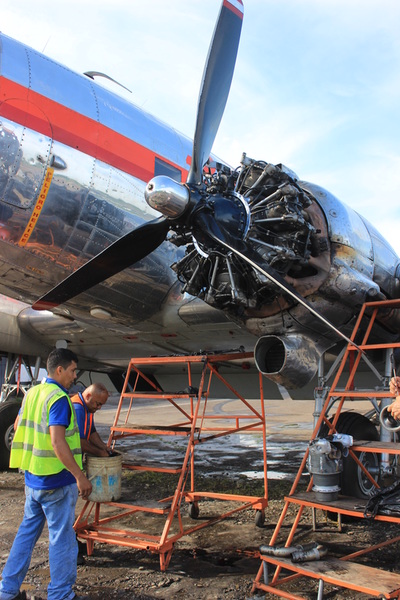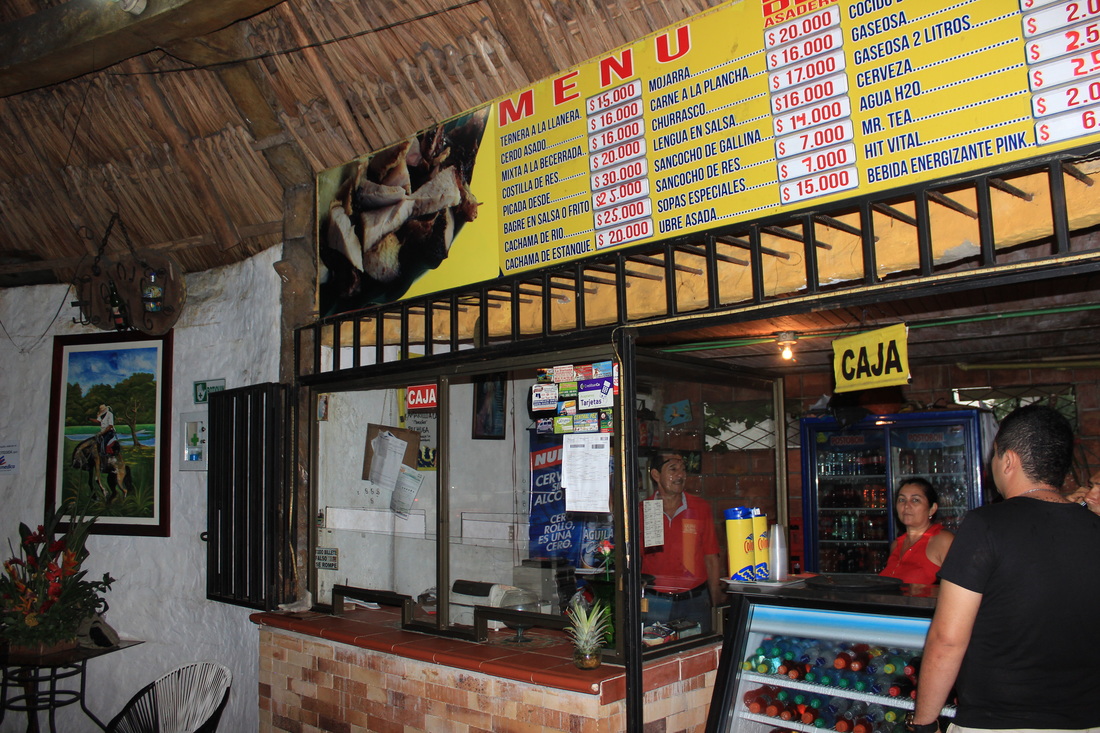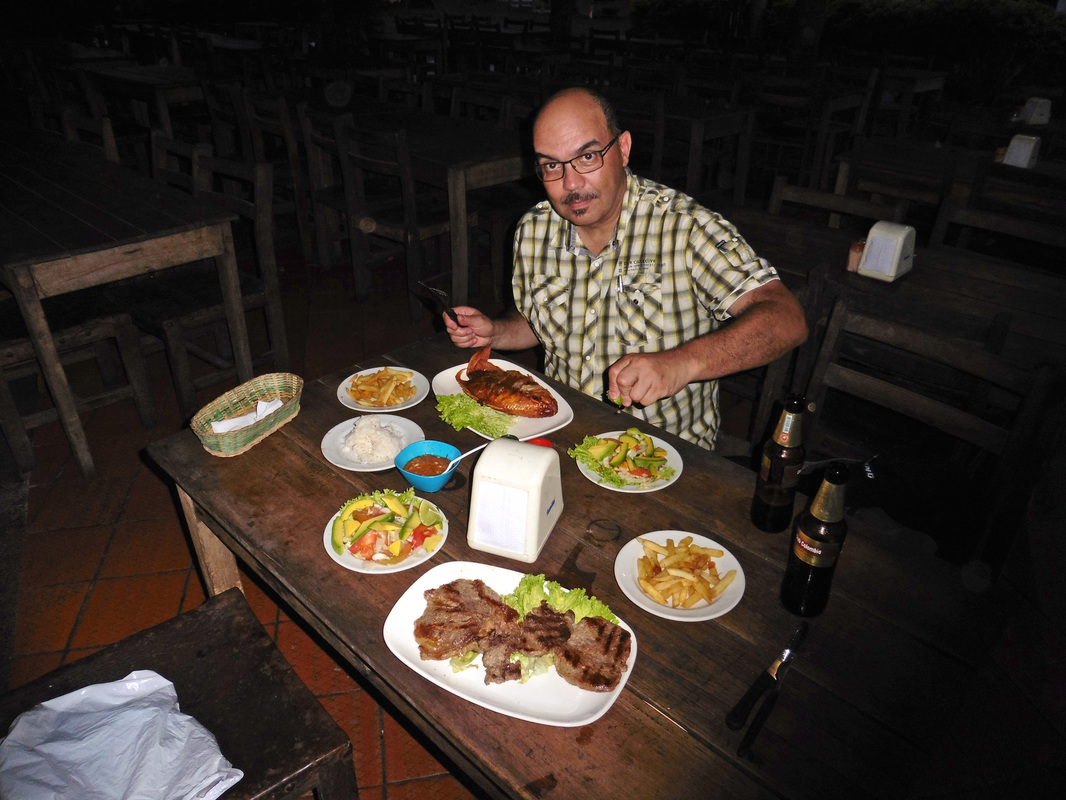Sadelca
|
SADELCA (Sociedad Aérea Del Caquetá) is a cargo airline based at El Dorado International Airport in Bogotá, Colombia.
Caquetá Department is a department of Colombia. Located in the Amazonas region, Caquetá borders with the departments of Cauca and Huila to the west, the department of Meta to the north, the department of Guaviare to the northeast, the department of Vaupés to the east, the departments f Amazonas and Putumayo to the south covering a total area of 88,965 km², the third largest in the country. Its capital is the city of Florencia. Douglas DC-3 HK-1149 Sadelca R4D-6 HK-1149 during maintenance at the company base at Villavicencio, April 2015. This DC-3 has been manufactured in 1944 at the Oklahoma City plant as a R4D-6 for the US Navy. This variant had two 1200 hp Pratt & Whitney R-1830-90C’s engines with a MTOW of 13.600 kg. Basically a R4D-6 is a C-47B-DL which was transferred to the US Navy from USAAF orders. After her military career she was exported to Colombia in 1965. She made a forced landing in a rice field in after an engine failure during the departure from Pto. Concordia in 2007. Also in 2009 she was involved in an incident when she was become under fire by the FARC in 2009 during a landing at Miraflores Douglas DC-3 HK-2494 HK-2494 of Sadelca at La Vanguardia Airport Villavicencio 28th April 2015. Originally this DC-3 has been manufactured in 1945 at the Oklahoma City plant as a TC-47B-DK. This DC-3 variant had two 1200 hp Pratt & Whitney R-1830-90C’s engines with a MTOW of 13.600 kg. and had been modified for training, with 3 astrodomes and aft DF loop antenna. In November 1945 she has been transferred from the USAAF to the US Navy and thus became a R4D-7. When her military career was over, her civilian life started as N87611 for the University of Texas and she was based in Austin, TX. She was exported to Colombia in 1980 and registered as HK2494X for SAEP Ltda. In April 2015 she did operate for Sadelca and some months after our visit she was sold again. Since October 2015 HK-2494 is owned by Laser Aero of Villavicencio. Antonov An-26B-100 HK-4356 The history of this Antonov An-26B reads as follows; - This airframe left the factory at Kiev in 1977 and was, like so many Antonovs, delivered to Aeroflot. After her service for Aeroflot she worked for company’s such as; NordAvia in 1993, Air Ukraine in 2001, Aerosegovia Nicaragua in 2003 and SELVA Colombia in 2004. Sadelca bought her in 2008 and is using her to service their ports-of-call in Colombia. Antonov An-32A HK-4296 HK-4296 Antonov 32A rolled of the Kiev production line in 1988 and is since 2008 owned and operated by Sadelca |
|
|
Antonov An-26
After successful operations of the An-24T tactical transport in austere locations, interest in a version with a retractable cargo ramp increased. Initial studies for the retractable ramp were carried out as part of the projected An-40 medium transport. When given the go-ahead for the An-26 in March 1968 the Antonov OKB adapted the ramp design of the An-40 to the An-24 fuselage, thus was born the An-26. Particular attention was given to the military mission. Using the majority of the An-24 airframe, with its high-set cantilevered wings, twin turboprops and stalky main undercarriage, the An-26 included military equipment, such as tip-up paratroop canvas seats, overhead traveling hoist, bulged observation windows and parachute static line attachment cables. |
|
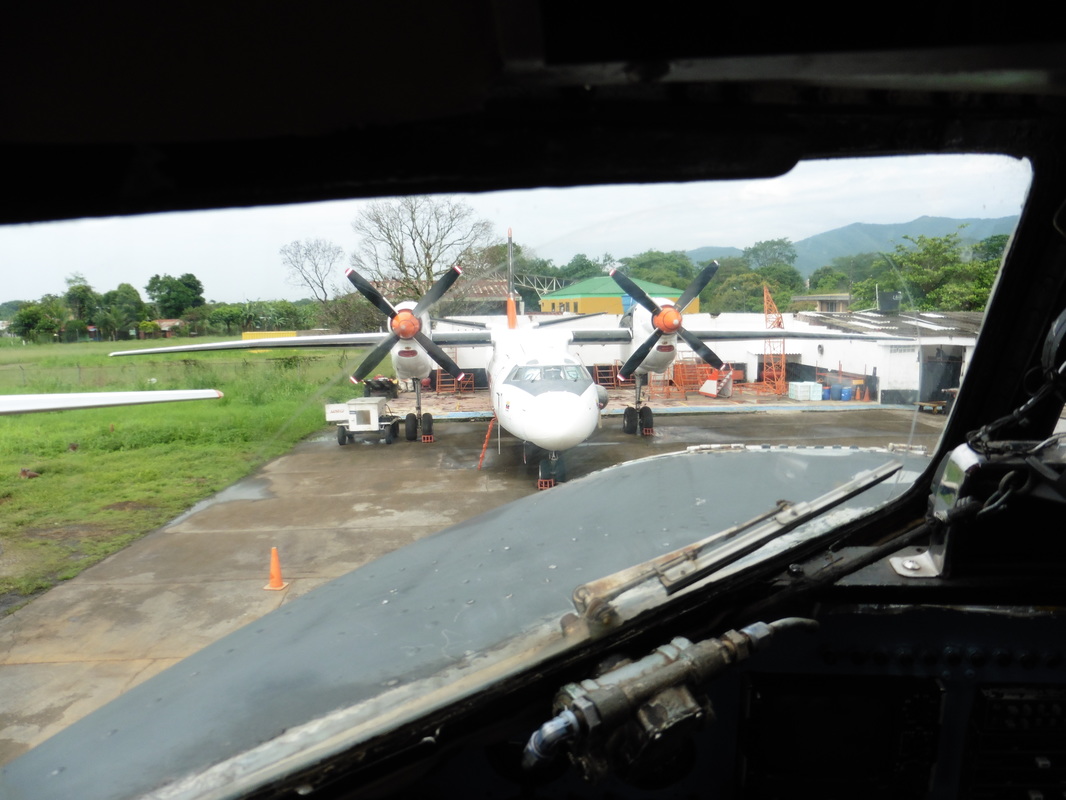
The An-32 has excellent takeoff characteristics under tropical and mountainous conditions, including hot climates (up to + 55 °C) and from high-elevation airfields (up to 4,500 m height) where hot or thin air reduces a powerplant's performance. With this capability, the aircraft is suited to be a multipurpose aircraft with medium tactical military transport roles as well as being used in civil commercial flying
|
Sadelca was one of Colombia’s well known DC-3 operators. Misguideedly, they then decided that Russian built Antonov An-32’s were a better choice than the venerabele DC-3 for the future. History shows that the Dougs live on, whilst most An-32’s have now left Colombia.
|
|
|
DC-3 flight to Cumaribo
To enjoy the DC-3 jungle-operation Colombian style, I had bought a ticket with Sadelca for a flight to Cumaribo and back. Cumaribo, which was founded by Jose Nicolino Mattar in 1959, is within the Orinoquia Region of Colombia part of the Llanos plains that cover part of Colombia and the Bolivarian Republic of Venezuela. Three quarters of the total are of the municipality of Cumaribo are savanna and the rest are covered by jungle with some small mounts. The area has been under the influence of the Revolutionary Armed Forces of Colombia (FARC) guerrilla group due to the large production of coca leaves in the region and difficult access for the Military of Colombia. Tomás Medina Caracas, a prominent FARC commander in charge of the illegal drug trade for this organization was killed in September 2007 in a Colombian Army military operation in eastern Colombia within the municipality of Cumaribo near the border with Venezuela. |
|
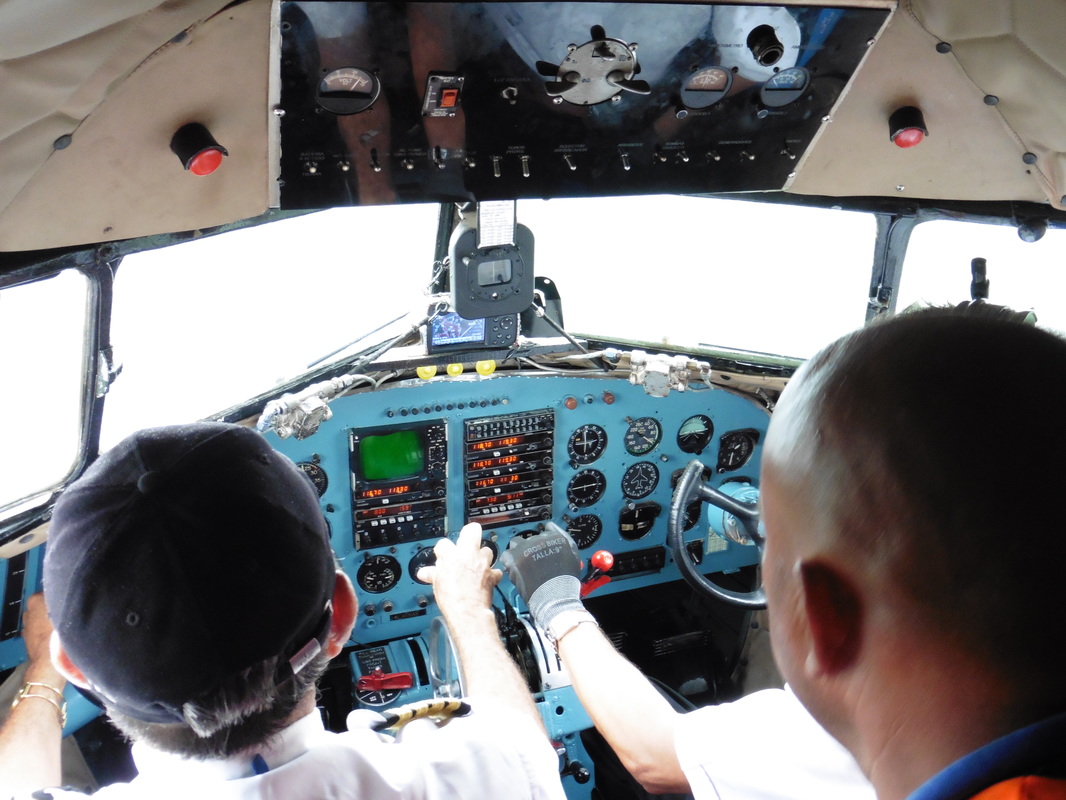
Wilbur, one of Saldeca's mecanics, stands between Capt. Cortez and the co-pilot, flipping switches and pulling the yellow lever that lowers the flaps and the red handle that puts down the landing gear.
“You have to make sure the landing gear is down, that the flaps, the lights and pumps are working"
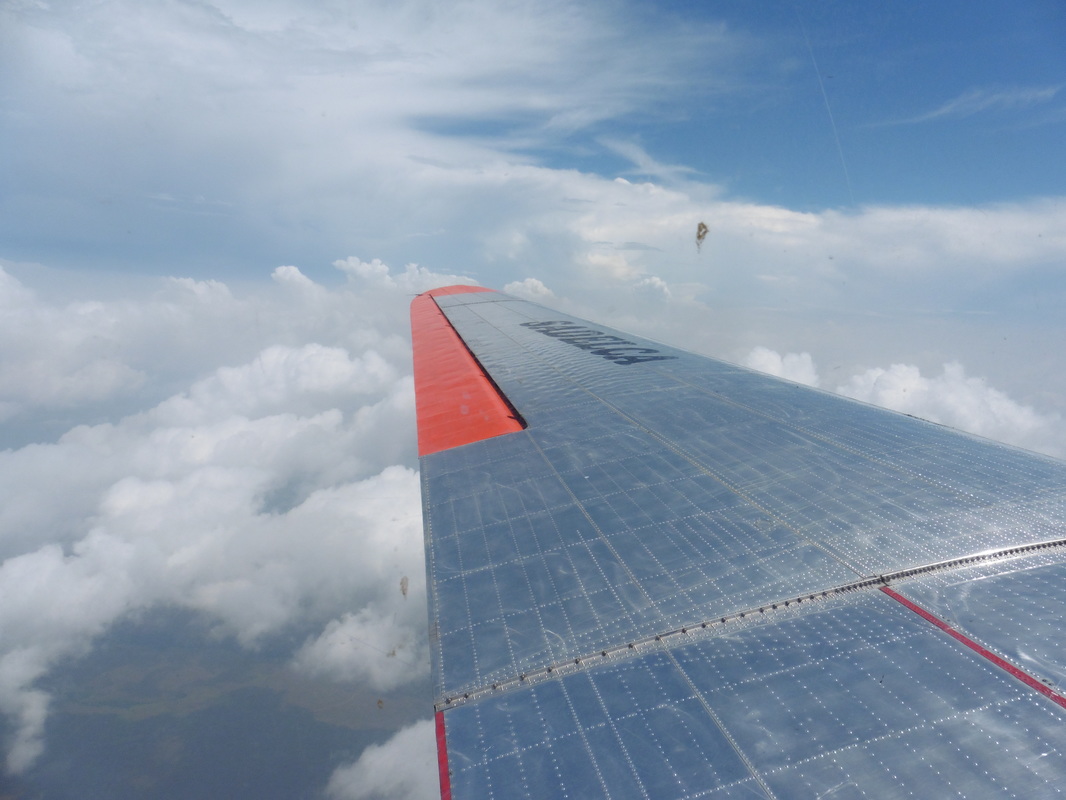
In the Colombian jungle outback — a roadless land the size of France — the only fast, viable way to travel and move cargo is aboard World War II-era DC-3s. There are no roads to civilization, and travel out by water could take weeks. This region bordering Brazil and Venezuela, where the Andean foothills sweep into flat plains that turn into jungle, is the size of France. But only 5 percent of Colombia’s 47 million people live here, and the most isolated make their homes in villages carved out of the forest. Those people — farmers, Indians who have migrated to villages, miners, store owners, even troops running down rebels — face arduous days on a river boat to get to a town of any size. Out here, the only fast, viable way to travel and move cargo is aboard the DC-3s operated by airlines with names like Air Colombia, Aliansa, Arall, Allas or Sadelca.
|
|
|
|
|
|
|
|
|
|
On April 17, 2015 I was onboard Sadelca R4D-7 HK-2494 from Villavicencio to Cumaribo. After 45 minutes number 1 was not working as it should be and power adjustments had to be made. After she lost oil Capitan Luis F. Cortes, Co-pilot Jaime Herrera and Mecanico Wilbur Gutierrez Bobema had to feathered no. 1 and we had to return to the base at Villavicencio, where the crew made a perfect landing on one engine. With more than 16.000 hrs on DC-3s, Capitan Cortes had absolutely no problem with such incident.
|
